Organometallic Compound And Organic Light-emitting Device Including The Same
HAN; Junghoon ; et al.
U.S. patent application number 16/395131 was filed with the patent office on 2019-10-31 for organometallic compound and organic light-emitting device including the same. The applicant listed for this patent is Samsung Display Co., Ltd.. Invention is credited to Heechoon AHN, Junghoon HAN, Seokhwan HWANG, Mina JEON, Mieun JUN, Sungbum KIM, Youngkook KIM, Soobyung KO, Hyoyoung LEE, Junha PARK, Munki SIM.
| Application Number | 20190334100 16/395131 |
| Document ID | / |
| Family ID | 68292919 |
| Filed Date | 2019-10-31 |








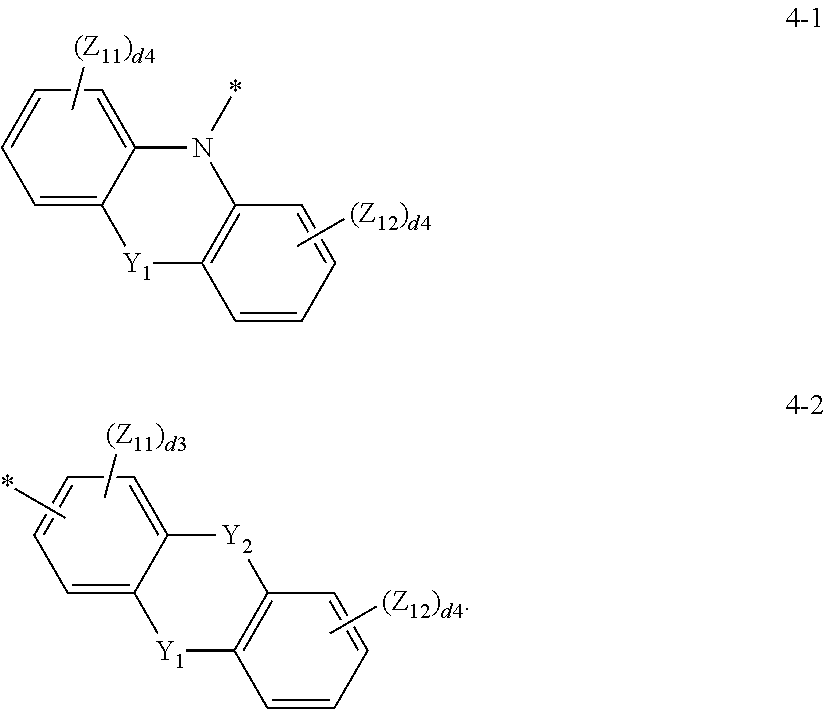

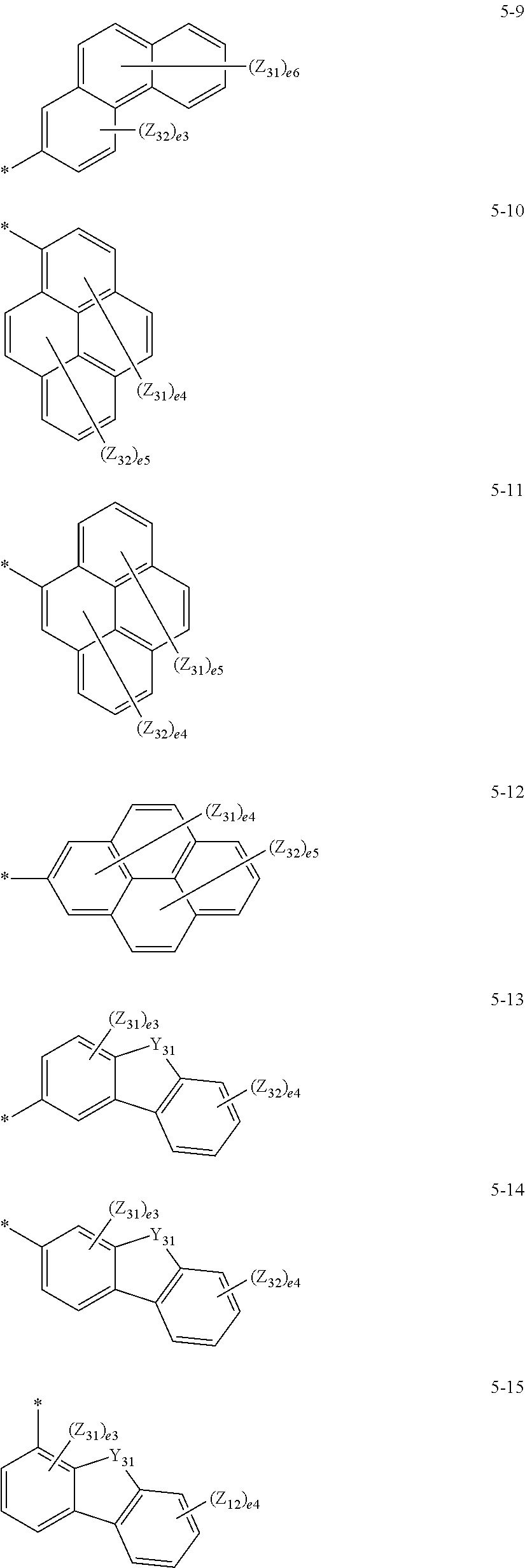

View All Diagrams
| United States Patent Application | 20190334100 |
| Kind Code | A1 |
| HAN; Junghoon ; et al. | October 31, 2019 |
ORGANOMETALLIC COMPOUND AND ORGANIC LIGHT-EMITTING DEVICE INCLUDING THE SAME
Abstract
Provided are an organometallic compound represented by Formula 1 and an organic light-emitting device including the same. The organic light-emitting device includes: a first electrode; a second electrode; and an organic layer comprising an emission layer between the first electrode and the second electrode, the organic layer including the organometallic compound represented by Formula 1.
| Inventors: | HAN; Junghoon; (Yongin-si, KR) ; KO; Soobyung; (Yongin-si, KR) ; KIM; Sungbum; (Yongin-si, KR) ; PARK; Junha; (Yongin-si, KR) ; SIM; Munki; (Yongin-si, KR) ; AHN; Heechoon; (Yongin-si, KR) ; LEE; Hyoyoung; (Yongin-si, KR) ; JEON; Mina; (Yongin-si, KR) ; JUN; Mieun; (Yongin-si, KR) ; KIM; Youngkook; (Yongin-si, KR) ; HWANG; Seokhwan; (Yongin-si, KR) | ||||||||||
| Applicant: |
|
||||||||||
|---|---|---|---|---|---|---|---|---|---|---|---|
| Family ID: | 68292919 | ||||||||||
| Appl. No.: | 16/395131 | ||||||||||
| Filed: | April 25, 2019 |
| Current U.S. Class: | 1/1 |
| Current CPC Class: | H01L 51/0094 20130101; H01L 51/006 20130101; H01L 51/5012 20130101; H01L 51/5016 20130101; H01L 51/0072 20130101; C07F 15/0086 20130101; H01L 51/0087 20130101; H01L 51/0059 20130101; H01L 51/5004 20130101 |
| International Class: | H01L 51/00 20060101 H01L051/00; H01L 51/50 20060101 H01L051/50; C07F 15/00 20060101 C07F015/00 |
Foreign Application Data
| Date | Code | Application Number |
|---|---|---|
| Apr 27, 2018 | KR | 10-2018-0049402 |
Claims
1. An organic light-emitting device comprising: a first electrode; a second electrode; and an organic layer comprising an emission layer between the first electrode and the second electrode; the organic layer comprising an organometallic compound represented by Formula 1: ##STR00115## wherein, in Formula 1, M.sub.11 is selected from platinum (Pt), palladium (Pd), copper (Cu), silver (Ag), gold (Au), rhodium (Rh), iridium (Ir), ruthenium (Ru), osmium (Os), titanium (Ti), zirconium (Zr), hafnium (Hf), europium (Eu), Terbium (Tb), and thulium (Tm); Y.sub.10, Y.sub.11, Y.sub.20, Y.sub.21, Y.sub.30, and Y.sub.40 are each independently N or C; A.sub.10 is a 5-membered carbocyclic group, a 5-membered heterocyclic group, a 6-membered carbocyclic group, or a 6-membered heterocyclic group, when b10 is two or more, two or more R.sub.10(s) are optionally bonded together to form a 6-membered carbocyclic group or a 6-membered heterocyclic group, when Y.sub.10 is C and a bond between Y.sub.10 and T.sub.11 or a bond between Y.sub.10 and M.sub.11 is a coordinate bond, A.sub.10 is a 5-membered heterocyclic group comprising three or four nitrogen (N) atoms as ring forming atoms, A.sub.20, A.sub.30, and A.sub.40 are each independently selected from a C.sub.5-C.sub.60 carbocyclic group and a C.sub.1-C.sub.60 heterocyclic group, Ar.sub.11 and Ar.sub.21 are each independently selected from a substituted or unsubstituted C.sub.6-C.sub.60 aryl group, a substituted or unsubstituted C.sub.6-C.sub.60 aryloxy group, a substituted or unsubstituted C.sub.6-C.sub.60 arylthio group, a substituted or unsubstituted C.sub.1-C.sub.60 heteroaryl group, a substituted or unsubstituted C.sub.1-C.sub.60 heteroaryloxy group, a substituted or unsubstituted C.sub.1-C.sub.60 heteroarylthio group, a substituted or unsubstituted monovalent non-aromatic condensed polycyclic group, and a substituted or unsubstituted monovalent non-aromatic condensed heteropolycyclic group, T.sub.11 to T.sub.14 are each independently selected from a single bond, *--O--*', and *--S--*'; L.sub.12 to L.sub.14 are each independently selected from a single bond, *--O--*', *--S--*', *--C(R.sub.1)(R.sub.2)--*', *--C(R.sub.1)=*', *.dbd.C(R.sub.1)--*', *--C(R.sub.1).dbd.C(R.sub.2)--*', *--C(.dbd.O)--*', *--C(.dbd.S)--*', *--C.ident.C--*', *--B(R.sub.1)--*', *--N(R.sub.1)--*', *--P(R.sub.1)--*', *--Si(R.sub.1)(R.sub.2)--*', *--P(R.sub.1)(R.sub.2)--*', and *--Ge(R.sub.1)(R.sub.2)--*I; a12, a13, and a14 are each independently selected from 1, 2, and 3, R.sub.1, R.sub.2, R.sub.10, R.sub.20, R.sub.30, and R.sub.40 are each independently selected from hydrogen, deuterium, --F, --Cl, --Br, --I, a hydroxyl group, a cyano group, a nitro group, an amidino group, a hydrazino group, a hydrazono group, a substituted or unsubstituted C.sub.1-C.sub.60 alkyl group, a substituted or unsubstituted C.sub.2-C.sub.60 alkenyl group, a substituted or unsubstituted C.sub.2-C.sub.60 alkynyl group, a substituted or unsubstituted C.sub.1-C.sub.60 alkoxy group, a substituted or unsubstituted C.sub.3-C.sub.10 cycloalkyl group, a substituted or unsubstituted C.sub.1-C.sub.10 heterocycloalkyl group, a substituted or unsubstituted C.sub.3-C.sub.10 cycloalkenyl group, a substituted or unsubstituted C.sub.1-C.sub.10 heterocycloalkenyl group, a substituted or unsubstituted C.sub.6-C.sub.60 aryl group, a substituted or unsubstituted C.sub.6-C.sub.60 aryloxy group, a substituted or unsubstituted C.sub.6-C.sub.60 arylthio group, a substituted or unsubstituted C.sub.1-C.sub.60 heteroaryl group, a substituted or unsubstituted C.sub.1-C.sub.60 heteroaryloxy group, a substituted or unsubstituted C.sub.1-C.sub.60 heteroarylthio group, a substituted or unsubstituted monovalent non-aromatic condensed polycyclic group, a substituted or unsubstituted monovalent non-aromatic condensed heteropolycyclic group, --Si(Q.sub.1)(Q.sub.2)(Q.sub.3), --B(Q.sub.1)(Q.sub.2), --N(Q.sub.1)(Q.sub.2), --P(Q.sub.1)(Q.sub.2), --C(.dbd.O)(Q.sub.1), --S(.dbd.O)(Q.sub.1), --S(.dbd.O).sub.2(Q.sub.1), --P(.dbd.O)(Q.sub.1)(Q.sub.2), and --P(.dbd.S)(Q.sub.1)(Q.sub.2), a pair of R.sub.1 and R.sub.10, a pair of R.sub.1 and R.sub.20, a pair of R.sub.1 and R.sub.30, or a pair of R.sub.1 and R.sub.40 are optionally bonded together such that R.sub.1 and R.sub.10, R.sub.1 and R.sub.20, R.sub.1 and R.sub.30, or R.sub.1 and R.sub.40 form a substituted or unsubstituted C.sub.5-C.sub.60 carbocyclic group or a substituted or unsubstituted C.sub.1-C.sub.60 heterocyclic group, b10, b20, b30, and b40 are each independently selected from 1, 2, 3, 4, 5, 6, 7, and 8, * and *' each indicate a binding site to a neighboring atom, and at least one substituent of substituents of the substituted C.sub.5-C.sub.60 carbocyclic group, the substituted C.sub.1-C.sub.60 heterocyclic group, the substituted C.sub.1-C.sub.60 alkyl group, the substituted C.sub.2-C.sub.60 alkenyl group, the substituted C.sub.2-C.sub.60 alkynyl group, the substituted C.sub.1-C.sub.60 alkoxy group, the substituted C.sub.3-C.sub.10 cycloalkyl group, the substituted C.sub.1-C.sub.10 heterocycloalkyl group, the substituted C.sub.3-C.sub.10 cycloalkenyl group, the substituted C.sub.1-C.sub.10 heterocycloalkenyl group, the substituted C.sub.6-C.sub.60 aryl group, the substituted C.sub.6-C.sub.60 aryloxy group, the substituted C.sub.6-C.sub.60 arylthio group, the substituted C.sub.1-C.sub.60 heteroaryl group, the substituted C.sub.1-C.sub.60 heteroaryloxy group, the substituted C.sub.1-C.sub.60 heteroarylthio group, the substituted monovalent non-aromatic condensed polycyclic group, and the substituted monovalent non-aromatic condensed heteropolycyclic group is selected from: deuterium, --F, --Cl, --Br, --I, a hydroxyl group, a cyano group, a nitro group, an amidino group, a hydrazino group, a hydrazono group, a C.sub.1-C.sub.60 alkyl group, a C.sub.2-C.sub.60 alkenyl group, a C.sub.2-C.sub.60 alkynyl group, and a C.sub.1-C.sub.60 alkoxy group; a C.sub.1-C.sub.60 alkyl group, a C.sub.2-C.sub.60 alkenyl group, a C.sub.2-C.sub.60 alkynyl group, and a C.sub.1-C.sub.60 alkoxy group, each substituted with at least one selected from deuterium, --F, --Cl, --Br, --I, a hydroxyl group, a cyano group, a nitro group, an amidino group, a hydrazino group, a hydrazono group, a C.sub.3-C.sub.10 cycloalkyl group, a C.sub.1-C.sub.10 heterocycloalkyl group, a C.sub.3-C.sub.10 cycloalkenyl group, a C.sub.1-C.sub.60 heterocycloalkenyl group, a C.sub.6-C.sub.60 aryl group, a C.sub.6-C.sub.60 aryloxy group, a C.sub.6-C.sub.60 arylthio group, a C.sub.1-C.sub.60 heteroaryl group, a monovalent non-aromatic condensed polycyclic group, a monovalent non-aromatic condensed heteropolycyclic group, --Si(Q.sub.11)(Q.sub.12)(Q.sub.13), --N(Q.sub.11)(Q.sub.12), --B(Q.sub.11)(Q.sub.12), --C(.dbd.O)(Q.sub.11), --S(.dbd.O).sub.2(Q.sub.11), and --P(.dbd.O)(Q.sub.11)(Q.sub.12); a C.sub.3-C.sub.10 cycloalkyl group, a C.sub.1-C.sub.10 heterocycloalkyl group, a C.sub.3-C.sub.10 cycloalkenyl group, a C.sub.1-C.sub.10 heterocycloalkenyl group, a C.sub.6-C.sub.60 aryl group, a C.sub.6-C.sub.60 aryloxy group, a C.sub.6-C.sub.60 arylthio group, a C.sub.1-C.sub.60 heteroaryl group, a monovalent non-aromatic condensed polycyclic group, and a monovalent non-aromatic condensed heteropolycyclic group; a C.sub.3-C.sub.10 cycloalkyl group, a C.sub.1-C.sub.10 heterocycloalkyl group, a C.sub.3-C.sub.10 cycloalkenyl group, a C.sub.1-C.sub.10 heterocycloalkenyl group, a C.sub.6-C.sub.60 aryl group, a C.sub.6-C.sub.60 aryloxy group, a C.sub.6-C.sub.60 arylthio group, a C.sub.1-C.sub.60 heteroaryl group, a monovalent non-aromatic condensed polycyclic group, and a monovalent non-aromatic condensed heteropolycyclic group, each substituted with at least one selected from deuterium, --F, --Cl, --Br, --I, a hydroxyl group, a cyano group, a nitro group, an amidino group, a hydrazino group, a hydrazono group, a C.sub.1-C.sub.60 alkyl group, a C.sub.2-C.sub.60 alkenyl group, a C.sub.2-C.sub.60 alkynyl group, a C.sub.1-C.sub.60 alkoxy group, a C.sub.3-C.sub.10 cycloalkyl group, a C.sub.1-C.sub.10 heterocycloalkyl group, a C.sub.3-C.sub.10 cycloalkenyl group, a C.sub.1-C.sub.10 heterocycloalkenyl group, a C.sub.6-C.sub.60 aryl group, a C.sub.6-C.sub.60 aryloxy group, a C.sub.6-C.sub.60 arylthio group, a C.sub.1-C.sub.60 heteroaryl group, a monovalent non-aromatic condensed polycyclic group, a monovalent non-aromatic condensed heteropolycyclic group, --Si(Q.sub.21)(Q.sub.22)(Q.sub.23), --N(Q.sub.21)(Q.sub.22), --B(Q.sub.21)(Q.sub.22), --C(.dbd.O)(Q.sub.21), --S(.dbd.O).sub.2(Q.sub.21), and --P(.dbd.O)(Q.sub.21)(Q.sub.22); and --Si(Q.sub.31)(Q.sub.32)(Q.sub.33), --N(Q.sub.31)(Q.sub.32), --B(Q.sub.31)(Q.sub.32), --C(.dbd.O)(Q.sub.31), --S(.dbd.O).sub.2(Q.sub.31), and --P(.dbd.O)(Q.sub.31)(Q.sub.32), wherein Q.sub.1 to Q.sub.3, Q.sub.11 to Q.sub.13, Q.sub.21 to Q.sub.23, and Q.sub.31 to Q.sub.33 are each independently selected from hydrogen, deuterium, --F, --Cl, --Br, --I, a hydroxyl group, a cyano group, a nitro group, an amidino group, a hydrazino group, a hydrazono group, a C.sub.1-C.sub.60 alkyl group, a C.sub.2-C.sub.60 alkenyl group, a C.sub.2-C.sub.60 alkynyl group, a C.sub.1-C.sub.60 alkoxy group, a C.sub.3-C.sub.10 cycloalkyl group, a C.sub.1-C.sub.10 heterocycloalkyl group, a C.sub.3-C.sub.10 cycloalkenyl group, a C.sub.1-C.sub.10 heterocycloalkenyl group, a C.sub.6-C.sub.60 aryl group, a C.sub.6-C.sub.60 aryloxy group, a C.sub.6-C.sub.60 arylthio group, a C.sub.1-C.sub.60 heteroaryl group, a C.sub.1-C.sub.60 heteroaryloxy group, a C.sub.1-C.sub.60 heteroarylthio group, monovalent non-aromatic condensed polycyclic group, monovalent non-aromatic condensed heteropolycyclic group; a C.sub.1-C.sub.60 alkyl group substituted with at least one selected from deuterium, --F, and a cyano group; a C.sub.6-C.sub.60 aryl group substituted with at least one selected from deuterium, --F, and a cyano group; a biphenyl group, and a terphenyl group.
2. The organic light-emitting device of claim 1, wherein: the first electrode is an anode, the second electrode is a cathode, and the organic layer further comprises a hole transport region between the first electrode and the emission layer and an electron transport region between the emission layer and the second electrode, the hole transport region comprises at least one selected from a hole injection layer, a hole transport layer, a buffer layer, an emission auxiliary layer, and an electron blocking layer, and the electron transport region comprises at least one selected from a hole blocking layer, an electron transport layer, and an electron injection layer.
3. The organic light-emitting device of claim 2, wherein: the emission layer comprises the organometallic compound.
4. The organic light-emitting device of claim 1, wherein: the emission layer emits blue light having a maximum emission wavelength of about 440 nm to about 490 nm.
5. The organic light-emitting device of claim 3, wherein: the emission layer further comprises a host, and the host comprises a silyl-containing compound, a phosphine oxide-containing compound, or a combination thereof.
6. The organic light-emitting device of claim 2, wherein: the hole transport region comprises a p-dopant having a lowest unoccupied molecular orbital (LUMO) energy level of less than -3.5 eV.
7. The organic light-emitting device of claim 2, wherein: the electron transport region comprises the hole blocking layer, the hole blocking layer directly contacts the emission layer, and the hole blocking layer comprises a phosphine oxide-containing compound or a silyl-containing compound.
8. An organometallic compound represented by Formula 1: ##STR00116## wherein, in Formula 1, M.sub.11 is selected from platinum (Pt), palladium (Pd), copper (Cu), silver (Ag), gold (Au), rhodium (Rh), iridium (Ir), ruthenium (Ru), osmium (Os), titanium (Ti), zirconium (Zr), hafnium (Hf), europium (Eu), Terbium (Tb), and thulium (Tm); Y.sub.10, Y.sub.11, Y.sub.20, Y.sub.21, Y.sub.30, and Y.sub.40 are each independently N or C; A.sub.10 is a 5-membered carbocyclic group, a 5-membered heterocyclic group, a 6-membered carbocyclic group, or a 6-membered heterocyclic group, and when b10 is two or more, two or more R.sub.10(s) are optionally bonded together to form a 6-membered carbocyclic group or a 6-membered heterocyclic group, when Y.sub.10 is C and a bond between Y.sub.10 and T.sub.11 or a bond between Y.sub.10 and M.sub.11 is a coordinate bond, A.sub.10 is a 5-membered heterocyclic group comprising three or four nitrogen (N) atoms as ring forming atoms, A.sub.20, A.sub.30, and A.sub.40 are each independently selected from a C.sub.5-C.sub.60 carbocyclic group and a C.sub.1-C.sub.60 heterocyclic group, Ar.sub.11 and Ar.sub.21 are each independently selected from a substituted or unsubstituted C.sub.6-C.sub.60 aryl group, a substituted or unsubstituted C.sub.6-C.sub.60 aryloxy group, a substituted or unsubstituted C.sub.6-C.sub.60 arylthio group, a substituted or unsubstituted C.sub.1-C.sub.60 heteroaryl group, a substituted or unsubstituted C.sub.1-C.sub.60 heteroaryloxy group, a substituted or unsubstituted C.sub.1-C.sub.60 heteroarylthio group, a substituted or unsubstituted monovalent non-aromatic condensed polycyclic group, and a substituted or unsubstituted monovalent non-aromatic condensed heteropolycyclic group, T.sub.11 to T.sub.14 are each independently selected from a single bond, *--O--*', and *--S--*'; L.sub.12 to L.sub.14 are each independently selected from a single bond, *--O--*', *--S--*', *C(R.sub.1)(R.sub.2)--*', *--C(R.sub.1)=*', *.dbd.C(R.sub.1)--*', *--C(R.sub.1).dbd.C(R.sub.2)--*', *--C(.dbd.O)--*', *--C(.dbd.S)--*', *--C.ident.C--*', *--B(R.sub.1)--*', *--N(R.sub.1)--*', *--P(R.sub.1)--*', *--Si(R.sub.1)(R.sub.2)--*', *--P(R.sub.1)(R.sub.2)--*', and *--Ge(R.sub.1)(R.sub.2)--*'; a12, a13, and a14 are each independently selected from 1, 2, and 3, R.sub.1, R.sub.2, R.sub.10, R.sub.20, R.sub.30, and R.sub.40 are each independently selected from hydrogen, deuterium, --F, --Cl, --Br, --I, a hydroxyl group, a cyano group, a nitro group, an amidino group, a hydrazino group, a hydrazono group, a substituted or unsubstituted C.sub.1-C.sub.60 alkyl group, a substituted or unsubstituted C.sub.2-C.sub.60 alkenyl group, a substituted or unsubstituted C.sub.2-C.sub.60 alkynyl group, a substituted or unsubstituted C.sub.1-C.sub.60 alkoxy group, a substituted or unsubstituted C.sub.3-C.sub.10 cycloalkyl group, a substituted or unsubstituted C.sub.1-C.sub.10 heterocycloalkyl group, a substituted or unsubstituted C.sub.3-C.sub.10 cycloalkenyl group, a substituted or unsubstituted C.sub.1-C.sub.10 heterocycloalkenyl group, a substituted or unsubstituted C.sub.6-C.sub.60 aryl group, a substituted or unsubstituted C.sub.6-C.sub.60 aryloxy group, a substituted or unsubstituted C.sub.6-C.sub.60 arylthio group, a substituted or unsubstituted C.sub.1-C.sub.60 heteroaryl group, a substituted or unsubstituted C.sub.1-C.sub.60 heteroaryloxy group, a substituted or unsubstituted C.sub.1-C.sub.60 heteroarylthio group, a substituted or unsubstituted monovalent non-aromatic condensed polycyclic group, a substituted or unsubstituted monovalent non-aromatic condensed heteropolycyclic group, --Si(Q.sub.1)(Q.sub.2)(Q.sub.3), --B(Q.sub.1)(Q.sub.2), --N(Q.sub.1)(Q.sub.2), --P(Q.sub.1)(Q.sub.2), --C(.dbd.O)(Q.sub.1), --S(.dbd.O)(Q.sub.1), --S(.dbd.O).sub.2(Q.sub.1), --P(.dbd.O)(Q.sub.1)(Q.sub.2), and --P(.dbd.S)(Q.sub.1)(Q.sub.2), a pair of R.sub.1 and R.sub.10, a pair of R.sub.1 and R.sub.20, a pair of R.sub.1 and R.sub.30, or a pair of R.sub.1 and R.sub.40 are optionally bonded together such that R.sub.1 and R.sub.10, R.sub.1 and R.sub.20, R.sub.1 and R.sub.30, or R.sub.1 and R.sub.40 form a substituted or unsubstituted C.sub.5-C.sub.60 carbocyclic group or a substituted or unsubstituted C.sub.1-C.sub.60 heterocyclic group, b10, b20, b30, and b40 are each independently selected from 1, 2, 3, 4, 5, 6, 7, and 8, * and *' each indicate a binding site to a neighboring atom, and at least one substituent of substituents of the substituted C.sub.5-C.sub.60 carbocyclic group, the substituted C.sub.1-C.sub.60 heterocyclic group, the substituted C.sub.1-C.sub.60 alkyl group, the substituted C.sub.2-C.sub.60 alkenyl group, the substituted C.sub.2-C.sub.60 alkynyl group, the substituted C.sub.1-C.sub.60 alkoxy group, the substituted C.sub.3-C.sub.10 cycloalkyl group, the substituted C.sub.1-C.sub.10 heterocycloalkyl group, the substituted C.sub.3-C.sub.10 cycloalkenyl group, the substituted C.sub.1-C.sub.10 heterocycloalkenyl group, the substituted C.sub.6-C.sub.60 aryl group, the substituted C.sub.6-C.sub.60 aryloxy group, the substituted C.sub.6-C.sub.60 arylthio group, the substituted C.sub.1-C.sub.60 heteroaryl group, the substituted C.sub.1-C.sub.60 heteroaryloxy group, the substituted C.sub.1-C.sub.60 heteroarylthio group, the substituted monovalent non-aromatic condensed polycyclic group, and the substituted monovalent non-aromatic condensed heteropolycyclic group is selected from: deuterium, --F, --Cl, --Br, --I, a hydroxyl group, a cyano group, a nitro group, an amidino group, a hydrazino group, a hydrazono group, a C.sub.1-C.sub.60 alkyl group, a C.sub.2-C.sub.60 alkenyl group, a C.sub.2-C.sub.60 alkynyl group, and a C.sub.1-C.sub.60 alkoxy group; a C.sub.1-C.sub.60 alkyl group, a C.sub.2-C.sub.60 alkenyl group, a C.sub.2-C.sub.60 alkynyl group, and a C.sub.1-C.sub.60 alkoxy group, each substituted with at least one selected from deuterium, --F, --Cl, --Br, --I, a hydroxyl group, a cyano group, a nitro group, an amidino group, a hydrazino group, a hydrazono group, a C.sub.3-C.sub.10 cycloalkyl group, a C.sub.1-C.sub.10 heterocycloalkyl group, a C.sub.3-C.sub.10 cycloalkenyl group, a C.sub.1-C.sub.10 heterocycloalkenyl group, a C.sub.6-C.sub.60 aryl group, a C.sub.6-C.sub.60 aryloxy group, a C.sub.6-C.sub.60 arylthio group, a C.sub.1-C.sub.60 heteroaryl group, a monovalent non-aromatic condensed polycyclic group, a monovalent non-aromatic condensed heteropolycyclic group, --Si(Q.sub.11)(Q.sub.12)(Q.sub.13), --N(Q.sub.11)(Q.sub.12), --B(Q.sub.11)(Q.sub.12), --C(.dbd.O)(Q.sub.11), --S(.dbd.O).sub.2(Q.sub.11), and --P(.dbd.O)(Q.sub.11)(Q.sub.12); a C.sub.3-C.sub.10 cycloalkyl group, a C.sub.1-C.sub.10 heterocycloalkyl group, a C.sub.3-C.sub.10 cycloalkenyl group, a C.sub.1-C.sub.10 heterocycloalkenyl group, a C.sub.6-C.sub.60 aryl group, a C.sub.6-C.sub.60 aryloxy group, a C.sub.6-C.sub.60 arylthio group, a C.sub.1-C.sub.60 heteroaryl group, a monovalent non-aromatic condensed polycyclic group, and a monovalent non-aromatic condensed heteropolycyclic group; a C.sub.3-C.sub.10 cycloalkyl group, a C.sub.1-C.sub.10 heterocycloalkyl group, a C.sub.3-C.sub.10 cycloalkenyl group, a C.sub.1-C.sub.10 heterocycloalkenyl group, a C.sub.6-C.sub.60 aryl group, a C.sub.6-C.sub.60 aryloxy group, a C.sub.6-C.sub.60 arylthio group, a C.sub.1-C.sub.60 heteroaryl group, a monovalent non-aromatic condensed polycyclic group, and a monovalent non-aromatic condensed heteropolycyclic group, each substituted with at least one selected from deuterium, --F, --Cl, --Br, --I, a hydroxyl group, a cyano group, a nitro group, an amidino group, a hydrazino group, a hydrazono group, a C.sub.1-C.sub.60 alkyl group, a C.sub.2-C.sub.60 alkenyl group, a C.sub.2-C.sub.60 alkynyl group, a C.sub.1-C.sub.60 alkoxy group, a C.sub.3-C.sub.10 cycloalkyl group, a C.sub.1-C.sub.10 heterocycloalkyl group, a C.sub.3-C.sub.10 cycloalkenyl group, a C.sub.1-C.sub.10 heterocycloalkenyl group, a C.sub.6-C.sub.60 aryl group, a C.sub.6-C.sub.60 aryloxy group, a C.sub.6-C.sub.60 arylthio group, a C.sub.1-C.sub.60 heteroaryl group, a monovalent non-aromatic condensed polycyclic group, a monovalent non-aromatic condensed heteropolycyclic group, --Si(Q.sub.21)(Q.sub.22)(Q.sub.23), --N(Q.sub.21)(Q.sub.22), --B(Q.sub.21)(Q.sub.22), --C(.dbd.O)(Q.sub.21), --S(.dbd.O).sub.2(Q.sub.21), and --P(.dbd.O)(Q.sub.21)(Q.sub.22); and --Si(Q.sub.31)(Q.sub.32)(Q.sub.33), --N(Q.sub.31)(Q.sub.32), --B(Q.sub.31)(Q.sub.32), --C(.dbd.O)(Q.sub.31), --S(.dbd.O).sub.2(Q.sub.31), and --P(.dbd.O)(Q.sub.31)(Q.sub.32); wherein Q.sub.1 to Q.sub.3, Q.sub.11 to Q.sub.13, Q.sub.21 to Q.sub.23, and Q.sub.31 to Q.sub.33 are each independently selected from hydrogen, deuterium, --F, --Cl, --Br, --I, a hydroxyl group, a cyano group, a nitro group, an amidino group, a hydrazino group, a hydrazono group, a C.sub.1-C.sub.60 alkyl group, a C.sub.2-C.sub.60 alkenyl group, a C.sub.2-C.sub.60 alkynyl group, a C.sub.1-C.sub.60 alkoxy group, a C.sub.3-C.sub.10 cycloalkyl group, a C.sub.1-C.sub.10 heterocycloalkyl group, a C.sub.3-C.sub.10 cycloalkenyl group, a C.sub.1-C.sub.10 heterocycloalkenyl group, a C.sub.6-C.sub.60 aryl group, a C.sub.6-C.sub.60 aryloxy group, a C.sub.6-C.sub.60 arylthio group, a C.sub.1-C.sub.60 heteroaryl group, a C.sub.1-C.sub.60 heteroaryloxy group, a C.sub.1-C.sub.60 heteroarylthio group, monovalent non-aromatic condensed polycyclic group, monovalent non-aromatic condensed heteropolycyclic group; a C.sub.1-C.sub.60 alkyl group substituted with at least one selected from deuterium, --F, and a cyano group; a C.sub.6-C.sub.60 aryl group substituted with at least one selected from deuterium, --F, and a cyano group; a biphenyl group, and a terphenyl group.
9. The organometallic compound of claim 8, wherein: M.sub.11 is selected from Pt, Pd, Cu, Ag, and Au.
10. The organometallic compound of claim 8, wherein: when Y.sub.10 is C, a bond between Y.sub.10 and T.sub.11 or a bond between Y.sub.10 and M.sub.11 is a coordinate bond, and when Y.sub.20 is C, a bond between Y.sub.20 and T.sub.12 or a bond between Y.sub.20 and M.sub.11 is a coordinate bond.
11. The organometallic compound of claim 8, wherein: Y.sub.30 and Y.sub.40 are each C.
12. The organometallic compound of claim 8, wherein: A.sub.10 is represented by one of Formulae 10-1 to 10-3, A.sub.20 to A.sub.40 are each independently a group represented by one of Formulae 2-1 to 2-43: ##STR00117## ##STR00118## ##STR00119## ##STR00120## ##STR00121## wherein, in Formulae 10-1 to 10-3, Ar.sub.11 is the same as defined in claim 8 in connection with Ar.sub.11, Y.sub.12 to Y.sub.18 are each independently N or C(R.sub.10), Y.sub.10 and Y.sub.11 are the same as defined in claim 8 in connection with Y.sub.10 and Y.sub.11, at least one selected from Y.sub.14 and Y.sub.15 is N, R.sub.10 is the same as defined in claim 8 in connection with R.sub.10, * and *' each indicate a binding site to a neighboring atom, in Formulae 2-1 to 2-43, X.sub.21 to X.sub.23 are each independently selected from C(R.sub.24) and C--*, wherein at least two selected from X.sub.21 to X.sub.23 is C--*, X.sub.24 is N--*, and X.sub.25 and X.sub.26 are each independently selected from C(R.sub.24) and C--*, wherein at least one selected from X.sub.25 and X.sub.26 is C--*, X.sub.27 and X.sub.28 are each independently selected from N, N(R.sub.25), and N--*, and X.sub.29 is selected from C(R.sub.24) and C--*, wherein i) at least one selected from X.sub.27 and X.sub.28 is N--*, and X.sub.29 is C--*, or ii) X.sub.27 and X.sub.28 are each N--* and X.sub.29 is C(R.sub.24), R.sub.21 to R.sub.25 are each independently the same as defined in claim 8 in connection with R.sub.10, b21 is selected from 1, 2, and 3, b22 is selected from 1, 2, 3, 4, and 5, b23 is selected from 1, 2, 3, and 4, b24 is selected from 1 and 2, and * indicates a binding site to a neighboring atom.
13. The organometallic compound of claim 8, wherein: A.sub.20 is a group represented by one of Formulae 20-1 to 20-3: ##STR00122## wherein, in Formulae 20-1 to 20-3, Ar.sub.21 is the same as defined in claim 8 in connection with Ar.sub.21, Y.sub.22 and Y.sub.23 are each independently N or C(R.sub.20), R.sub.20 is the same as defined in claim 8 in connection with R.sub.20, and * and *' each indicate a binding site to a neighboring atom.
14. The organometallic compound of claim 8, wherein: Ar.sub.11 and Ar.sub.21 are each independently selected from hydrogen, deuterium, a phenyl group, a biphenyl group, a terphenyl group, a pentalenyl group, an indenyl group, a naphthyl group, an azulenyl group, an indacenyl group, an acenaphthyl group, a fluorenyl group, a spiro-bifluorenyl group, a benzofluorenyl group, a dibenzofluorenyl group, a phenalenyl group, a phenanthrenyl group, an anthracenyl group, a fluoranthenyl group, a triphenylenyl group, a pyrenyl group, a chrysenyl group, a perylenyl group, a pentacenyl group, a pyrrolyl group, a thiophenyl group, a furanyl group, a silolyl group, an imidazolyl group, a pyrazolyl group, a thiazolyl group, an isothiazolyl group, an oxazolyl group, an isoxazolyl group, a pyridinyl group, a pyrazinyl group, a pyrimidinyl group, a pyridazinyl group, an indolyl group, an isoindolyl group, an indazolyl group, a purinyl group, a quinolinyl group, an isoquinolinyl group, a benzoquinolinyl group, a phthalazinyl group, a naphthyridinyl group, a quinoxalinyl group, a benzoquinoxalinyl group, a quinazolinyl group, a benzoquinazolinyl group, a cinnolinyl group, a phenanthridinyl group, an acridinyl group, a phenanthrolinyl group, a phenazinyl group, a benzimidazolyl group, a benzofuranyl group, a benzothiophenyl group, a benzosilolyl group, a benzothiazolyl group, a benzoisothiazolyl group, a benzoxazolyl group, a benzoisoxazolyl group, a triazolyl group, a tetrazolyl group, a thiadiazolyl group, an oxadiazolyl group, a triazinyl group, a carbazolyl group, a dibenzofuranyl group, a dibenzothiophenyl group, a dibenzosilolyl group, a benzocarbazolyl group, a naphtho benzofuranyl group, a naphtho benzothiophenyl group, a naphthobenzosilolyl group, a dibenzocarbazolyl group, a dinaphthofuranyl group, a dinaphtho thiophenyl group, a dinaphtho silolyl group, an imidazopyridinyl group, an imidazopyrimidinyl group, an oxazolopyridinyl group, a thiazolopyridinyl group, a benzonaphthyridinyl group, an azafluorenyl group, an azaspiro-bifluorenyl group, an azacarbazolyl group, an azadibenzofuranyl group, an azadibenzothiophenyl group, an azadibenzosilolyl group, an indeno pyrrolyl group, an indolopyrrolyl group, an indeno carbazolyl group, and an indolocarbazolyl group; a phenyl group, a biphenyl group, a terphenyl group, a pentalenyl group, an indenyl group, a naphthyl group, an azulenyl group, an indacenyl group, an acenaphthyl group, a fluorenyl group, a spiro-bifluorenyl group, a benzofluorenyl group, a dibenzofluorenyl group, a phenalenyl group, a phenanthrenyl group, an anthracenyl group, a fluoranthenyl group, a triphenylenyl group, a pyrenyl group, a chrysenyl group, a perylenyl group, a pentacenyl group, a pyrrolyl group, a thiophenyl group, a furanyl group, a silolyl group, an imidazolyl group, a pyrazolyl group, a thiazolyl group, an isothiazolyl group, an oxazolyl group, an isoxazolyl group, a pyridinyl group, a pyrazinyl group, a pyrimidinyl group, a pyridazinyl group, an indolyl group, an isoindolyl group, an indazolyl group, a purinyl group, a quinolinyl group, an isoquinolinyl group, a benzoquinolinyl group, a phthalazinyl group, a naphthyridinyl group, a quinoxalinyl group, a benzoquinoxalinyl group, a quinazolinyl group, a benzoquinazolinyl group, a cinnolinyl group, a phenanthridinyl group, an acridinyl group, a phenanthrolinyl group, a phenazinyl group, a benzimidazolyl group, a benzofuranyl group, a benzothiophenyl group, a benzosilolyl group, a benzothiazolyl group, a benzoisothiazolyl group, a benzoxazolyl group, a benzoisoxazolyl group, a triazolyl group, a tetrazolyl group, a thiadiazolyl group, an oxadiazolyl group, a triazinyl group, a carbazolyl group, a dibenzofuranyl group, a dibenzothiophenyl group, a dibenzosilolyl group, a benzocarbazolyl group, a naphtho benzofuranyl group, a naphtho benzothiophenyl group, a naphthobenzosilolyl group, a dibenzocarbazolyl group, a dinaphthofuranyl group, a dinaphtho thiophenyl group, a dinaphtho silolyl group, an imidazopyridinyl group, an imidazopyrimidinyl group, an oxazolopyridinyl group, a thiazolopyridinyl group, a benzonaphthyridinyl group, an azafluorenyl group, an azaspiro-bifluorenyl group, an azacarbazolyl group, an azadibenzofuranyl group, an azadibenzothiophenyl group, an azadibenzosilolyl group, an indeno pyrrolyl group, an indolopyrrolyl group, an indeno carbazolyl group, and an indolocarbazolyl group, each substituted with at least one selected from deuterium, --F, --Cl, --Br, --I, a cyano group, a C.sub.1-C.sub.20 alkyl group, a C.sub.1-C.sub.20 alkoxy group, a cyclopentyl group, a cyclohexyl group, a cycloheptyl group, a cyclopentenyl group, a cyclohexenyl group, a phenyl group, a biphenyl group, a terphenyl group, a pentalenyl group, an indenyl group, a naphthyl group, an azulenyl group, an indacenyl group, an acenaphthyl group, a fluorenyl group, a spiro-bifluorenyl group, a benzofluorenyl group, a dibenzofluorenyl group, a phenalenyl group, a phenanthrenyl group, an anthracenyl group, a fluoranthenyl group, a triphenylenyl group, a pyrenyl group, a chrysenyl group, a perylenyl group, a pentacenyl group, a pyrrolyl group, a thiophenyl group, a furanyl group, a silolyl group, an imidazolyl group, a pyrazolyl group, a thiazolyl group, an isothiazolyl group, an oxazolyl group, an isoxazolyl group, a pyridinyl group, a pyrazinyl group, a pyrimidinyl group, a pyridazinyl group, an indolyl group, an isoindolyl group, an indazolyl group, a purinyl group, a quinolinyl group, an isoquinolinyl group, a benzoquinolinyl group, a phthalazinyl group, a naphthyridinyl group, a quinoxalinyl group, a benzoquinoxalinyl group, a quinazolinyl group, a benzoquinazolinyl group, a cinnolinyl group, a phenanthridinyl group, an acridinyl group, a phenanthrolinyl group, a phenazinyl group, a benzimidazolyl group, a benzofuranyl group, a benzothiophenyl group, a benzosilolyl group, a benzothiazolyl group, a benzoisothiazolyl group, a benzoxazolyl group, a benzoisoxazolyl group, a triazolyl group, a tetrazolyl group, a thiadiazolyl group, an oxadiazolyl group, a triazinyl group, a carbazolyl group, a dibenzofuranyl group, a dibenzothiophenyl group, a dibenzosilolyl group, a benzocarbazolyl group, a naphtho benzofuranyl group, a naphtho benzothiophenyl group, a naphthobenzosilolyl group, a dibenzocarbazolyl group, a dinaphthofuranyl group, a dinaphtho thiophenyl group, a dinaphtho silolyl group, an imidazopyridinyl group, an imidazopyrimidinyl group, an oxazolopyridinyl group, a thiazolopyridinyl group, a benzonaphthyridinyl group, an azafluorenyl group, an azaspiro-bifluorenyl group, an azacarbazolyl group, an azadibenzofuranyl group, an azadibenzothiophenyl group, an azadibenzosilolyl group, an indeno pyrrolyl group, an indolopyrrolyl group, an indeno carbazolyl group, an indolocarbazolyl group, --Si(Q.sub.31)(Q.sub.32)(Q.sub.33), --N(Q.sub.31)(Q.sub.32), --B(Q.sub.31)(Q.sub.32), --C(.dbd.O)(Q.sub.31), --S(.dbd.O)(Q.sub.31), --S(.dbd.O).sub.2(Q.sub.31), --P(.dbd.O)(Q.sub.31)(Q.sub.32) and --P(.dbd.S)(Q.sub.31)(Q.sub.32); a group represented by Formula 4-1 or 4-2; and --Si(Q.sub.1)(Q.sub.2)(Q.sub.3), --B(Q.sub.1)(Q.sub.2), --N(Q.sub.1)(Q.sub.2), --P(Q.sub.1)(Q.sub.2), --C(.dbd.O)(Q.sub.1), --S(.dbd.O)(Q.sub.1), --S(.dbd.O).sub.2(Q.sub.1), --P(.dbd.O)(Q.sub.1)(Q.sub.2), and --P(.dbd.S)(Q.sub.1)(Q.sub.2), wherein Q.sub.1 to Q.sub.3 and Q.sub.31 to Q.sub.33 are each independently selected from hydrogen, deuterium, a C.sub.6-C.sub.60 aryl group, a C.sub.6-C.sub.60 aryloxy group, a C.sub.6-C.sub.60 arylthio group, a C.sub.1-C.sub.60 heteroaryl group, a C.sub.1-C.sub.60 heteroaryloxy group, a C.sub.1-C.sub.60 heteroarylthio group, a monovalent non-aromatic condensed polycyclic group, a monovalent non-aromatic condensed heteropolycyclic group, a C.sub.1-C.sub.60 alkyl group substituted with at least one selected from deuterium, --F, and a cyano group, a C.sub.6-C.sub.60 aryl group substituted with at least one selected from deuterium, --F, and a cyano group, a biphenyl group, and a terphenyl group: ##STR00123## wherein, in Formulae 4-1 and 4-2, Y.sub.1 and Y.sub.2 are each independently O, S, C(Z.sub.13)(Z.sub.14), N(Z.sub.13), or Si(Z.sub.13)(Z.sub.14), Z.sub.11 to Z.sub.14 are each independently selected from hydrogen, deuterium, --F, --Cl, --Br, --I, a hydroxyl group, a cyano group, a nitro group, an amidino group, a hydrazino group, a hydrazono group, a C.sub.1-C.sub.20 alkyl group, a C.sub.1-C.sub.20 alkenyl group, a C.sub.1-C.sub.20 alkynyl group, a C.sub.1-C.sub.20 alkoxy group, a phenyl group, a biphenyl group, a terphenyl group, a naphthyl group, a fluorenyl group, a spiro-bifluorenyl group, a phenanthrene group, an anthracenyl group, a triphenylenyl group, a pyridinyl group, a pyrimidinyl group, a carbazolyl group, and a triazinyl group, d3 is an integer from 1 to 3, d4 is an integer from 1 to 4, and indicates a binding site to a neighboring atom.
15. The organometallic compound of claim 8, wherein: Ar.sub.11 and Ar.sub.21 are each independently a group represented by one of Formulae 5-1 to 5-25 and Formulae 6-1 to 6-55: ##STR00124## ##STR00125## ##STR00126## ##STR00127## ##STR00128## ##STR00129## ##STR00130## ##STR00131## ##STR00132## ##STR00133## ##STR00134## ##STR00135## wherein, in Formulae 5-1 to 5-25 and Formulae 6-1 to 6-55, Y.sub.31 is O, S, C(Z.sub.34)(Z.sub.35), N(Z.sub.34), or Si(Z.sub.34)(Z.sub.35), Z.sub.31 to Z.sub.35 are each independently selected from hydrogen, deuterium, --F, --Cl, --Br, --I, a hydroxyl group, a cyano group, a nitro group, an amidino group, a hydrazino group, a hydrazono group, a C.sub.1-C.sub.20 alkyl group, a C.sub.1-C.sub.20 alkenyl group, a C.sub.1-C.sub.20 alkynyl group, a C.sub.1-C.sub.20 alkoxy group, a phenyl group, a biphenyl group, a terphenyl group, a naphthyl group, a fluorenyl group, a spiro-bifluorenyl group, a phenanthrene group, an anthracenyl group, a triphenylenyl group, a pyridinyl group, a pyrimidinyl group, a carbazolyl group, and a triazinyl group, e2 is 1 or 2, e3 is an integer from 1 to 3, e4 is an integer from 1 to 4, e5 is an integer from 1 to 5, e6 is an integer from 1 to 6, e7 is an integer from 1 to 7, e9 is an integer from 1 to 9, and * indicates a binding site to a neighboring atom.
16. The organometallic compound of claim 8, wherein: T.sub.11 to T.sub.14 are each a single bond; T.sub.11 is selected from O and S, and T.sub.12 to T.sub.14 are each a single bond; T.sub.12 is selected from O and S, and T.sub.11, T.sub.13, and T.sub.14 are each a single bond; T.sub.13 is selected from O and S, and T.sub.11, T.sub.12 and T.sub.14 are each a single bond; or T.sub.14 is selected from O and S, and T.sub.11, T.sub.12, and T.sub.13 are a single bond.
17. The organometallic compound of claim 8, wherein: L.sub.12 and L.sub.14 are each a single bond, and L.sub.13 is selected from *--O--*', *--S--*', *--N(R.sub.1)--*', *--C(R.sub.1)(R.sub.2)--*', *--Si(R.sub.1)(R.sub.2)--*', and *--B(R.sub.1)--*'.
18. The organometallic compound of claim 8, wherein: R.sub.1, R.sub.2, R.sub.10, R.sub.20, R.sub.30, and R.sub.40 are each independently selected from hydrogen, deuterium, --F, --Cl, --Br, --I, cyano group, a C.sub.1-C.sub.20 alkyl group, and a C.sub.1-C.sub.20 alkoxy group; a C.sub.1-C.sub.20 alkyl group and a C.sub.1-C.sub.20 alkoxy group, each substituted with at least one selected from deuterium, --F, --Cl, --Br, --I, a cyano group, a phenyl group, and a biphenyl group; and a group represented by one of Formulae 7-1 to 7-25: ##STR00136## ##STR00137## ##STR00138## ##STR00139## wherein, in Formulae 7-1 to 7-25, Y.sub.51 is O, S, C(Z.sub.54)(Z.sub.55), N(Z.sub.54), or Si(Z.sub.54)(Z.sub.55), Z.sub.51 to Z.sub.55 are each independently selected from hydrogen, deuterium, --F, --Cl, --Br, --I, a hydroxyl group, a cyano group, a nitro group, an amidino group, a hydrazino group, a hydrazono group, a C.sub.1-C.sub.20 alkyl group, a C.sub.1-C.sub.20 alkenyl group, a C.sub.1-C.sub.20 alkynyl group, a C.sub.1-C.sub.20 alkoxy group, a phenyl group, a biphenyl group, a terphenyl group, a naphthyl group, a fluorenyl group, a spiro-bifluorenyl group, a phenanthrene group, an anthracenyl group, a triphenylenyl group, a pyridinyl group, a pyrimidinyl group, a carbazolyl group, and a triazinyl group, g2 is 1 or 2, g3 is an integer from 1 to 3, g4 is an integer from 1 to 4, g5 is an integer from 1 to 5, g6 is an integer from 1 to 6, g7 is an integer from 1 to 7, g9 is an integer from 1 to 9, and * indicates a binding site to a neighboring atom.
19. The organometallic compound of claim 8, wherein: R.sub.1, R.sub.2, R.sub.10, R.sub.20, R.sub.30, and R.sub.40 are each independently selected from hydrogen, deuterium, --F, --Cl, --Br, --I, cyano group, a C.sub.1-C.sub.20 alkyl group, and a C.sub.1-C.sub.20 alkoxy group; a C.sub.1-C.sub.20 alkyl group and a C.sub.1-C.sub.20 alkoxy group, each substituted with at least one selected from deuterium, --F, --Cl, --Br, --I, a cyano group, a phenyl group, and a biphenyl group; a phenyl group, a biphenyl group, a terphenyl group, a pentalenyl group, an indenyl group, a naphthyl group, an azulenyl group, an indacenyl group, an acenaphthyl group, a fluorenyl group, a spiro-bifluorenyl group, a benzofluorenyl group, a dibenzofluorenyl group, a carbazolyl group, an acridinyl group, a 9,10-dihydroacridinyl group, a 9,9-dimethyl-9,10-dihydroacridinyl group, a dibenzofuranyl group, a dibenzothiophenyl group, a benzocarbazolyl group, and a dibenzocarbazolyl group; and a phenyl group, a biphenyl group, a terphenyl group, a pentalenyl group, an indenyl group, a naphthyl group, an azulenyl group, an indacenyl group, an acenaphthyl group, a fluorenyl group, a spiro-bifluorenyl group, a benzofluorenyl group, a dibenzofluorenyl group, a carbazolyl group, an acridinyl group, a 9,10-dihydroacridinyl group, a dibenzofuranyl group, a dibenzothiophenyl group, a benzocarbazolyl group, and a dibenzocarbazolyl group, each substituted with at least one selected from deuterium, --F, --Cl, --Br, --I, a cyano group, a C.sub.1-C.sub.20 alkyl group, a C.sub.1-C.sub.20 alkoxy group, a phenyl group, and a biphenyl group.
20. The organometallic compound of claim 8, wherein: the organometallic compound represented by Formula 1 is selected from Compounds 1 to 50: ##STR00140## ##STR00141## ##STR00142## ##STR00143## ##STR00144## ##STR00145## ##STR00146## ##STR00147## ##STR00148## ##STR00149## ##STR00150## ##STR00151## ##STR00152## ##STR00153## ##STR00154## ##STR00155##
Description
CROSS-REFERENCE TO RELATED APPLICATION
[0001] This application claims priority to and the benefit of Korean Patent Application No. 10-2018-0049402, filed on Apr. 27, 2018, in the Korean Intellectual Property Office, the entire content of which is incorporated herein by reference.
BACKGROUND
1. Field
[0002] Embodiments of the present disclosure relate to an organometallic compound and an organic light-emitting device including the same.
2. Description of the Related Art
[0003] Organic light-emitting devices are self light-emitting devices, and, compared with other devices of the related art, they have a wide viewing angle, a high contrast ratio, and a short response time, and show excellent characteristics in terms of luminance, driving voltage, and response speed.
[0004] In an organic light-emitting device, a first electrode is arranged on a substrate, and a hole transport region, an emission layer, an electron transport region, and a second electrode are sequentially formed on the first electrode. Holes provided from the first electrode may move toward the emission layer through the hole transport region, and electrons provided from the second electrode may move toward the emission layer through the electron transport region. The holes and the electrons, which are carriers, recombine in the emission layer to produce excitons. These excitons transition (or relax) from an excited state to a ground state, thereby generating light.
SUMMARY
[0005] Provided are an organometallic compound and an organic light-emitting device including the same.
[0006] Additional aspects of embodiments will be set forth in part in the description which follows and, in part, will be apparent from the description, or may be learned by practice of the presented embodiments.
[0007] According to an aspect of an embodiment, an organometallic compound represented by Formula 1 is provided.
##STR00001##
[0008] In Formula 1,
[0009] M.sub.11 may be selected from platinum (Pt), palladium (Pd), copper (Cu), silver (Ag), gold (Au), rhodium (Rh), iridium (Ir), ruthenium (Ru), osmium (Os), titanium (Ti), zirconium (Zr), hafnium (Hf), europium (Eu), Terbium (Tb), and thulium (Tm);
[0010] Y.sub.10, Y.sub.11, Y.sub.20, Y.sub.21, Y.sub.30, and Y.sub.40 may each independently be N or C;
[0011] A.sub.10 may be a 5-membered carbocyclic group, a 5-membered heterocyclic group, a 6-membered carbocyclic group, or a 6-membered heterocyclic group,
[0012] when b10 is two or more, two or more R.sub.10(s) may be optionally linked (e.g., optionally bonded together) to form a 6-membered carbocyclic group or a 6-membered heterocyclic group,
[0013] when Y.sub.10 is C and a bond between Y.sub.10 and T.sub.11 or a bond between Y.sub.10 and M.sub.11 may be a coordinate bond (e.g., a coordinate covalent bond), A.sub.10 is a 5-membered heterocyclic group including three or four nitrogen (N) atoms as a ring forming atoms,
[0014] A.sub.20, A.sub.30, and A.sub.40 may each independently be selected from a C.sub.5-C.sub.60 carbocyclic group and a C.sub.1-C.sub.60 heterocyclic group,
[0015] Ar.sub.11 and Ar.sub.21 may each independently be selected from a substituted or unsubstituted C.sub.6-C.sub.60 aryl group, a substituted or unsubstituted C.sub.6-C.sub.60 aryloxy group, a substituted or unsubstituted C.sub.6-C.sub.60 arylthio group, a substituted or unsubstituted C.sub.1-C.sub.60 heteroaryl group, a substituted or unsubstituted C.sub.1-C.sub.60 heteroaryloxy group, a substituted or unsubstituted C.sub.1-C.sub.60 heteroarylthio group, a substituted or unsubstituted monovalent non-aromatic condensed polycyclic group, and a substituted or unsubstituted monovalent non-aromatic condensed heteropolycyclic group,
[0016] T.sub.11 to T.sub.14 may each independently be selected from a single bond, *--O--*', and *--S--*';
[0017] L.sub.12 to L.sub.14 may each independently be selected from a single bond, *--O--*', *--S--*', *--C(R.sub.1)(R.sub.2)--*', *--C(R.sub.1)=*', *.dbd.C(R.sub.1)--*', *--C(R.sub.1).dbd.C(R.sub.2)--*', *--C(.dbd.O)--*', *--C(.dbd.S)--*', *--C.ident.C--*', *--B(R.sub.1)--*', *--N(R.sub.1)--*', *--P(R.sub.1)--*', *--Si(R.sub.1)(R.sub.2)--*', *--P(R.sub.1)(R.sub.2)--*', and *--Ge(R.sub.1)(R.sub.2)--*';
[0018] a12, a13, and a14 may each independently be selected from 1, 2, and 3,
[0019] R.sub.1, R.sub.2, R.sub.10, R.sub.20, R.sub.30, and R.sub.40 may each independently be selected from hydrogen, deuterium, --F, --Cl, --Br, --I, a hydroxyl group, a cyano group, a nitro group, an amidino group, a hydrazino group, a hydrazono group, a substituted or unsubstituted C.sub.1-C.sub.60 alkyl group, a substituted or unsubstituted C.sub.2-C.sub.60 alkenyl group, a substituted or unsubstituted C.sub.2-C.sub.60 alkynyl group, a substituted or unsubstituted C.sub.1-C.sub.60 alkoxy group, a substituted or unsubstituted C.sub.3-C.sub.10 cycloalkyl group, a substituted or unsubstituted C.sub.1-C.sub.10 heterocycloalkyl group, a substituted or unsubstituted C.sub.3-C.sub.10 cycloalkenyl group, a substituted or unsubstituted C.sub.1-C.sub.10 heterocycloalkenyl group, a substituted or unsubstituted C.sub.6-C.sub.60 aryl group, a substituted or unsubstituted C.sub.6-C.sub.60 aryloxy group, a substituted or unsubstituted C.sub.6-C.sub.60 arylthio group, a substituted or unsubstituted C.sub.1-C.sub.60 heteroaryl group, a substituted or unsubstituted C.sub.1-C.sub.60 heteroaryloxy group, a substituted or unsubstituted C.sub.1-C.sub.60 heteroarylthio group, a substituted or unsubstituted monovalent non-aromatic condensed polycyclic group, a substituted or unsubstituted monovalent non-aromatic condensed heteropolycyclic group, --Si(Q.sub.1)(Q.sub.2)(Q.sub.3), --B(Q.sub.1)(Q.sub.2), --N(Q.sub.1)(Q.sub.2), --P(Q.sub.1)(Q.sub.2), --C(.dbd.O)(Q.sub.1), --S(.dbd.O)(Q.sub.1), --S(.dbd.O).sub.2(Q.sub.1), --P(.dbd.O)(Q.sub.1)(Q.sub.2), and --P(.dbd.S)(Q.sub.1)(Q.sub.2),
[0020] Regarding a pair of R.sub.1 and R.sub.10, a pair of R.sub.1 and R.sub.20, a pair of R.sub.1 and R.sub.30, or a pair of R.sub.1 and R.sub.40, components of each pair may be optionally linked to form a substituted or unsubstituted C.sub.5-C.sub.60 carbocyclic group or a substituted or unsubstituted C.sub.1-C.sub.60 heterocyclic group (e.g., a pair of R.sub.1 and R.sub.10, a pair of R.sub.1 and R.sub.20, a pair of R.sub.1 and R.sub.30, or a pair of R.sub.1 and R.sub.40 may be optionally bonded together such that R.sub.1 and R.sub.10, R.sub.1 and R.sub.20, R.sub.1 and R.sub.30, or R.sub.1 and R.sub.40 form a substituted or unsubstituted C.sub.5-C.sub.60 carbocyclic group or a substituted or unsubstituted C.sub.1-C.sub.60 heterocyclic group),
[0021] b10, b20, b30, and b40 may each independently be selected from 1, 2, 3, 4, 5, 6, 7, and 8,
[0022] * and *' each indicate a binding site to a neighboring atom, and
[0023] at least one substituent of substituents of the substituted C.sub.5-C.sub.60 carbocyclic group, the substituted C.sub.1-C.sub.60 heterocyclic group, the substituted C.sub.1-C.sub.60 alkyl group, the substituted C.sub.2-C.sub.60 alkenyl group, the substituted C.sub.2-C.sub.60 alkynyl group, the substituted C.sub.1-C.sub.60 alkoxy group, the substituted C.sub.3-C.sub.10 cycloalkyl group, the substituted C.sub.1-C.sub.10 heterocycloalkyl group, the substituted C.sub.3-C.sub.10 cycloalkenyl group, the substituted C.sub.1-C.sub.10 heterocycloalkenyl group, the substituted C.sub.6-C.sub.60 aryl group, the substituted C.sub.6-C.sub.60 aryloxy group, the substituted C.sub.6-C.sub.60 arylthio group, the substituted C.sub.1-C.sub.60 heteroaryl group, the substituted C.sub.1-C.sub.60 heteroaryloxy group, the substituted C.sub.1-C.sub.60 heteroarylthio group, the substituted monovalent non-aromatic condensed polycyclic group, and the substituted monovalent non-aromatic condensed heteropolycyclic group may be selected from:
[0024] deuterium, --F, --Cl, --Br, --I, a hydroxyl group, a cyano group, a nitro group, an amidino group, a hydrazino group, a hydrazono group, a C.sub.1-C.sub.60 alkyl group, a C.sub.2-C.sub.60 alkenyl group, a C.sub.2-C.sub.60 alkynyl group, and a C.sub.1-C.sub.60 alkoxy group;
[0025] a C.sub.1-C.sub.60 alkyl group, a C.sub.2-C.sub.60 alkenyl group, a C.sub.2-C.sub.60 alkynyl group, and a C.sub.1-C.sub.60 alkoxy group, each substituted with at least one selected from deuterium, --F, --Cl, --Br, --I, a hydroxyl group, a cyano group, a nitro group, an amidino group, a hydrazino group, a hydrazono group, a C.sub.3-C.sub.10 cycloalkyl group, a C.sub.1-C.sub.10 heterocycloalkyl group, a C.sub.3-C.sub.10 cycloalkenyl group, a C.sub.1-C.sub.10 heterocycloalkenyl group, a C.sub.6-C.sub.60 aryl group, a C.sub.6-C.sub.60 aryloxy group, a C.sub.6-C.sub.60 arylthio group, a C.sub.1-C.sub.60 heteroaryl group, a monovalent non-aromatic condensed polycyclic group, a monovalent non-aromatic condensed heteropolycyclic group, --Si(Q.sub.11)(Q.sub.12)(Q.sub.13), --N(Q.sub.11)(Q.sub.12), --B(Q.sub.11)(Q.sub.12), --C(.dbd.O)(Q.sub.11), --S(.dbd.O).sub.2(Q.sub.11), and --P(.dbd.O)(Q.sub.11)(Q.sub.12);
[0026] a C.sub.3-C.sub.10 cycloalkyl group, a C.sub.1-C.sub.10 heterocycloalkyl group, a C.sub.3-C.sub.10 cycloalkenyl group, a C.sub.1-C.sub.1o heterocycloalkenyl group, a C.sub.6-C.sub.60 aryl group, a C.sub.6-C.sub.60 aryloxy group, a C.sub.6-C.sub.60 arylthio group, a C.sub.1-C.sub.60 heteroaryl group, a monovalent non-aromatic condensed polycyclic group, and a monovalent non-aromatic condensed heteropolycyclic group;
[0027] a C.sub.3-C.sub.10 cycloalkyl group, a C.sub.1-C.sub.10 heterocycloalkyl group, a C.sub.3-C.sub.10 cycloalkenyl group, a C.sub.1-C.sub.10 heterocycloalkenyl group, a C.sub.6-C.sub.60 aryl group, a C.sub.6-C.sub.60 aryloxy group, a C.sub.6-C.sub.60 arylthio group, a C.sub.1-C.sub.60 heteroaryl group, a monovalent non-aromatic condensed polycyclic group, and a monovalent non-aromatic condensed heteropolycyclic group, each substituted with at least one selected from deuterium, --F, --Cl, --Br, --I, a hydroxyl group, a cyano group, a nitro group, an amidino group, a hydrazino group, a hydrazono group, a C.sub.1-C.sub.60 alkyl group, a C.sub.2-C.sub.60 alkenyl group, a C.sub.2-C.sub.60 alkynyl group, a C.sub.1-C.sub.60 alkoxy group, a C.sub.3-C.sub.10 cycloalkyl group, a C.sub.1-C.sub.10 heterocycloalkyl group, a C.sub.3-C.sub.10 cycloalkenyl group, a C.sub.1-C.sub.10 heterocycloalkenyl group, a C.sub.6-C.sub.60 aryl group, a C.sub.6-C.sub.60 aryloxy group, a C.sub.6-C.sub.60 arylthio group, a C.sub.1-C.sub.60 heteroaryl group, a monovalent non-aromatic condensed polycyclic group, a monovalent non-aromatic condensed heteropolycyclic group, --Si(Q.sub.21)(Q.sub.22)(Q.sub.23), --N(Q.sub.21)(Q.sub.22), --B(Q.sub.21)(Q.sub.22), --C(.dbd.O)(Q.sub.21), --S(.dbd.O).sub.2(Q.sub.21), and --P(.dbd.O)(Q.sub.21)(Q.sub.22); and
[0028] --Si(Q.sub.31)(Q.sub.32)(Q.sub.33), --N(Q.sub.31)(Q.sub.32), --B(Q.sub.31)(Q.sub.32), --C(.dbd.O)(Q.sub.31), --S(.dbd.O).sub.2(Q.sub.31), and --P(.dbd.O)(Q.sub.31)(Q.sub.32);
[0029] wherein Q.sub.1 to Q.sub.3, Q.sub.11 to Q.sub.13, Q.sub.21 to Q.sub.23, and Q.sub.31 to Q.sub.33 may each independently be selected from hydrogen, deuterium, --F, --Cl, --Br, --I, a hydroxyl group, a cyano group, a nitro group, an amidino group, a hydrazino group, a hydrazono group, a C.sub.1-C.sub.60 alkyl group, a C.sub.2-C.sub.60 alkenyl group, a C.sub.2-C.sub.60 alkynyl group, a C.sub.1-C.sub.60 alkoxy group, a C.sub.3-C.sub.10 cycloalkyl group, a C.sub.1-C.sub.10 heterocycloalkyl group, a C.sub.3-C.sub.10 cycloalkenyl group, a C.sub.1-C.sub.10 heterocycloalkenyl group, a C.sub.6-C.sub.60 aryl group, a C.sub.6-C.sub.60 aryloxy group, a C.sub.6-C.sub.60 arylthio group, a C.sub.1-C.sub.60 heteroaryl group, a C.sub.1-C.sub.60 heteroaryloxy group, a C.sub.1-C.sub.60 heteroarylthio group, monovalent non-aromatic condensed polycyclic group, monovalent non-aromatic condensed heteropolycyclic group; a C.sub.1-C.sub.60 alkyl group substituted with at least one selected from deuterium, --F, and a cyano group; a C.sub.6-C.sub.60 aryl group substituted with at least one selected from deuterium, --F, and a cyano group; a biphenyl group, and a terphenyl group.
[0030] According to an aspect of another embodiment, an organic light-emitting device includes: a first electrode; a second electrode facing the first electrode; and an organic layer between the first electrode and the second electrode, the organic layer including an emission layer, wherein the organic layer includes at least one of such organometallic compounds described above.
BRIEF DESCRIPTION OF THE DRAWING
[0031] These and/or other aspects of embodiments will become apparent and more readily appreciated from the following description of the embodiments, taken in conjunction with the accompanying drawing which is a schematic cross-sectional view of an organic light-emitting device according to an embodiment.
DETAILED DESCRIPTION
[0032] Reference will now be made in more detail to embodiments of the present disclosure, an example of which is illustrated in the accompanying drawing. In this regard, the present embodiments may have different forms and should not be construed as being limited to the descriptions set forth herein. Accordingly, the embodiments are merely described below, by referring to the accompanying drawing, to explain aspects of embodiments. As used herein, the term "and/or" includes any and all combinations of one or more of the associated listed items. Expressions such as "at least one of," when preceding a list of elements, modify the entire list of elements and do not modify the individual elements of the list.
[0033] An organometallic compound according to an embodiment is represented by Formula 1 below:
##STR00002##
[0034] M.sub.11 in Formula 1 may be selected from platinum (Pt), palladium (Pd), copper (Cu), silver (Ag), gold (Au), rhodium (Rh), iridium (Ir), ruthenium (Ru), osmium (Os), titanium (Ti), zirconium (Zr), hafnium (Hf), europium (Eu), Terbium (Tb), and thulium (Tm);
[0035] In one embodiment, M.sub.11 may be selected from Pt, Pd, Cu, Ag, and Au.
[0036] For example, M.sub.11 may be Pt, but embodiments of the present disclosure are not limited thereto.
[0037] Y.sub.10, Y.sub.11, Y.sub.20, Y.sub.21, Y.sub.30, and Y.sub.40 in Formula 1 may each independently be N or C.
[0038] In one embodiment, in Formula 1, Y.sub.10, Y.sub.20, and Y.sub.30 may each be C, and Y.sub.40 may be N;
[0039] Y.sub.10, Y.sub.20, and Y.sub.40 may each be C, and Y.sub.30 may be N;
[0040] Y.sub.10, Y.sub.30, and Y.sub.40 may each be C, and Y.sub.20 may be N;
[0041] Y.sub.20, Y.sub.30, and Y.sub.40 may each be C, and Y.sub.10 may be N;
[0042] Y.sub.10 and Y.sub.40 may each be C, and Y.sub.20 and Y.sub.30 may be N;
[0043] Y.sub.10 and Y.sub.40 may each be N, and Y.sub.20 and Y.sub.30 may each be C;
[0044] Y.sub.10 and Y.sub.20 may each be C, and Y.sub.30 and Y.sub.40 may each be N;
[0045] Y.sub.10 and Y.sub.20 may each be N, and Y.sub.30 and Y.sub.40 may each be C;
[0046] Y.sub.10 and Y.sub.30 may each be C, and Y.sub.20 and Y.sub.40 may each be N; or
[0047] Y.sub.10 and Y.sub.30 may each be N, and Y.sub.20 and Y.sub.40 may each be C.
[0048] In one embodiment, Y.sub.30 and Y.sub.40 may each be C.
[0049] In Formula 1, A.sub.10 may be a 5-membered carbocyclic group, a 5-membered heterocyclic group, a 6-membered carbocyclic group, or a 6-membered heterocyclic group,
[0050] when b10 is two or more, two or more R.sub.10(s) may be optionally linked (e.g., optionally bonded together) to form a 6-membered carbocyclic group or a 6-membered heterocyclic group,
[0051] when Y.sub.10 is C and a bond between Y.sub.10 and T.sub.11 or a bond between Y.sub.10 and M.sub.11 is a coordinate bond (e.g., a coordinate covalent bond), A.sub.10 is a 5-membered heterocyclic group including three or four nitrogen (N) atoms as a ring forming atoms,
[0052] In one embodiment, A.sub.10 may be an N-containing 5-membered heterocyclic group or an N-containing 6-membered heterocyclic group, and the description made in connection thereto is applied to the present embodiment.
[0053] A.sub.20, A.sub.30, and A.sub.40 in Formula 1 may each independently be selected from a C.sub.5-C.sub.60 carbocyclic group and a C.sub.1-C.sub.60 heterocyclic group.
[0054] In one embodiment, A.sub.20 may be an N-containing 5-membered heterocyclic group or an N-containing 6-membered heterocyclic group, and when b.sub.20 is two or more, two or more R.sub.20(s) may be optionally linked (e.g., optionally bonded together) to form a 6-membered carbocyclic group or a 6-membered heterocyclic group.
[0055] In one embodiment, regarding Formula 1, A.sub.10 may be a pyrrole group, a pyrazole group, an imidazole group, a 2,3-dihydroimidazole group, a triazole group, a 2,3-dihydrotriazole group, an oxazole group, an isooxazole group, a thiazole group, an isothiazole group, an oxadiazole group, a thiadiazole group, a benzopyrazole group, a benzimidazole group, a 2,3-dihydrobenzimidazole group, an imidazopyridine group, a 2,3-dihydroimidazopyridine group, an imidazopyrimidine group, a 2,3-dihydroimidazopyrimidine group, an imidazopyrazine group, a 2,3-dihydroimidazopyrazine group, a benzoxazole group, a benzothiazole group, a benzooxadiazole group, a benzothiadiazole group, a pyridine group, a pyrimidine group, a pyrazine group, a pyridazine group, a triazine group, a quinoline group, an isoquinoline group, a quinoxaline group, a quinazoline group, a phenanthroline group, a 5,6,7,8-tetrahydroisoquinoline group and a 5,6,7,8-tetrahydroquinoline group,
[0056] A.sub.20 to A.sub.40 may each independently be selected from a benzene group, a naphthalene group, an anthracene group, a phenanthrene group, a triphenylene group, a pyrene group, a chrysene group, cyclopentadiene group, a 1,2,3,4-tetrahydronaphthalene group, a furan group, a thiophene group, a silole group, an indene group, a fluorene group, an indole group, a carbazole group, a benzofuran group, a dibenzofuran group, a benzothiophene group, a dibenzothiophene group, a benzosilole group, a dibenzosilole group, an indeno pyridine group, an indolopyridine group, a benzofuropyridine group, a benzothienopyridine group, a benzosilolopyridine group, an indeno pyrimidine group, an indolopyrimidine group, a benzofuropyrimidine group, a benzothienopyrimidine group, a benzosilolopyrimidine group, a dihydropyridine group, a pyridine group, a pyrimidine group, a pyrazine group, a pyridazine group, a triazine group, a quinoline group, an isoquinoline group, a quinoxaline group, a quinazoline group, a phenanthroline group, a pyrrole group, a pyrazole group, an imidazole group, a 2,3-dihydroimidazole group, a triazole group, a 2,3-dihydrotriazole group, an oxazole group, an isooxazole group, a thiazole group, an isothiazole group, an oxadiazole group, a thiadiazole group, a benzopyrazole group, a benzimidazole group, a 2,3-dihydrobenzimidazole group, an imidazopyridine group, a 2,3-dihydroimidazopyridine group, an imidazopyrimidine group, a 2,3-dihydroimidazopyrimidine group, an imidazopyrazine group, a 2,3-dihydroimidazopyrazine group, a benzoxazole group, a benzothiazole group, a benzooxadiazole group, a benzothiadiazole group, a 5,6,7,8-tetrahydroisoquinoline group and a 5,6,7,8-tetrahydroquinoline group.
[0057] In one embodiment, A.sub.10 is a group represented by one of Formulae 10-1 to 10-3, and
[0058] A.sub.20 to A.sub.40 may each independently be a group represented by one of Formulae 2-1 to 2-43:
##STR00003## ##STR00004## ##STR00005## ##STR00006## ##STR00007##
[0059] In Formulae 10-1 to 10-3,
[0060] Ar.sub.11 may be the same as explained in connection with Ar.sub.11 in Formula 1,
[0061] Y.sub.12 to Y.sub.18 may each independently be N or C(R.sub.10), Y.sub.10 and Y.sub.11 may be the same as explained in connection with Y.sub.10 and Y.sub.11 in Formula 1,
[0062] at least one selected from Y.sub.14 and Y.sub.15 may be N,
[0063] R.sub.10 may be the same as explained in connection with R.sub.10 in Formula 1,
[0064] * and *' each indicate a binding site to a neighboring atom,
[0065] in Formulae 2-1 to 2-43,
[0066] X.sub.21 to X.sub.23 may each independently selected from C(R.sub.24) and C--*, wherein at least two selected from X.sub.21 to X.sub.23 may be C--*,
[0067] X.sub.24 may be N--*, and X.sub.25 and X.sub.26 may each independently be selected from C(R.sub.24) and C--*, wherein at least one selected from X.sub.25 and X.sub.26 may be C--*,
[0068] X.sub.27 and X.sub.28 may each independently be selected from N, N(R.sub.25), and N--*, and X.sub.29 may be selected from C(R.sub.24) and C--*, wherein i) at least one selected from X.sub.27 and X.sub.28 is N--*, and X.sub.29 is C--*, or ii) X.sub.27 and X.sub.28 may each be N--* and X.sub.29 may be C(R.sub.24),
[0069] R.sub.21 to R.sub.25 may each independently be the same as explained in connection with R.sub.10 in Formula 1,
[0070] b21 may be selected from 1, 2, and 3,
[0071] b22 may be selected from 1, 2, 3, 4, and 5,
[0072] b23 may be selected from 1, 2, 3, and 4,
[0073] b24 may be selected from 1 and 2, and
[0074] * indicates a binding site to a neighboring atom.
[0075] In one embodiment, A.sub.20 may be a group represented by one of Formulae 20-1 to 20-3:
##STR00008##
[0076] In Formulae 20-1 to 20-3,
[0077] Ar.sub.21 may be the same as explained in connection with Ar.sub.21 in Formula 1,
[0078] Y.sub.22 and Y.sub.23 may each independently be N or C(R.sub.20),
[0079] R.sub.20 may be the same as explained in connection with R.sub.20 described above, and
[0080] * and *' each indicate a binding site to a neighboring atom.
[0081] Ar.sub.11 and Ar.sub.21 in Formula 1 may each independently be selected from a substituted or unsubstituted C.sub.6-C.sub.60 aryl group, a substituted or unsubstituted C.sub.6-C.sub.60 aryloxy group, a substituted or unsubstituted C.sub.6-C.sub.60 arylthio group, a substituted or unsubstituted C.sub.1-C.sub.60 heteroaryl group, a substituted or unsubstituted C.sub.1-C.sub.60 heteroaryloxy group, a substituted or unsubstituted C.sub.1-C.sub.60 heteroarylthio group, a substituted or unsubstituted monovalent non-aromatic condensed polycyclic group, and a substituted or unsubstituted monovalent non-aromatic condensed heteropolycyclic group,
[0082] T.sub.11 to T.sub.14 may each independently be selected from a single bond, *--O--*', and *--S--*';
[0083] L.sub.12 to L.sub.14 may each independently be selected from a single bond, *--O--*', *--S--*', *--C(R.sub.1)(R.sub.2)--*', *--C(R.sub.1)=*', *.dbd.C(R.sub.1)--*', *--C(R.sub.1).dbd.C(R.sub.2)--*', *--C(.dbd.O)--*', *--C(.dbd.S)--*', * C.ident.C--*', *--B(R.sub.1)--*', *--N(R.sub.1)--*', *--P(R.sub.1)--*', *--Si(R.sub.1)(R.sub.2)--*', *--P(R.sub.1)(R.sub.2)--*', and *--Ge(R.sub.1)(R.sub.2)--*':
[0084] a12, a13, and a14 may be selected from 1, 2, and 3,
[0085] R.sub.1, R.sub.2, R.sub.10, R.sub.20, R.sub.30, and R.sub.40 may each independently be selected from hydrogen, deuterium, --F, --Cl, --Br, --I, a hydroxyl group, a cyano group, a nitro group, an amidino group, a hydrazino group, a hydrazono group, a substituted or unsubstituted C.sub.1-C.sub.60 alkyl group, a substituted or unsubstituted C.sub.2-C.sub.60 alkenyl group, a substituted or unsubstituted C.sub.2-C.sub.60 alkynyl group, a substituted or unsubstituted C.sub.1-C.sub.60 alkoxy group, a substituted or unsubstituted C.sub.3-C.sub.10 cycloalkyl group, a substituted or unsubstituted C.sub.1-C.sub.10 heterocycloalkyl group, a substituted or unsubstituted C.sub.3-C.sub.10 cycloalkenyl group, a substituted or unsubstituted C.sub.1-C.sub.10 heterocycloalkenyl group, a substituted or unsubstituted C.sub.6-C.sub.60 aryl group, a substituted or unsubstituted C.sub.6-C.sub.60 aryloxy group, a substituted or unsubstituted C.sub.6-C.sub.60 arylthio group, a substituted or unsubstituted C.sub.1-C.sub.60 heteroaryl group, a substituted or unsubstituted C.sub.1-C.sub.60 heteroaryloxy group, a substituted or unsubstituted C.sub.1-C.sub.60 heteroarylthio group, a substituted or unsubstituted monovalent non-aromatic condensed polycyclic group, a substituted or unsubstituted monovalent non-aromatic condensed heteropolycyclic group, --Si(Q.sub.1)(Q.sub.2)(Q.sub.3), --B(Q.sub.1)(Q.sub.2), --N(Q.sub.1)(Q.sub.2), --P(Q.sub.1)(Q.sub.2), --C(.dbd.O)(Q.sub.1), --S(.dbd.O)(Q.sub.1), --S(.dbd.O).sub.2(Q.sub.1), --P(.dbd.O)(Q.sub.1)(Q.sub.2), and --P(.dbd.S)(Q.sub.1)(Q.sub.2),
[0086] regarding a pair of R.sub.1 and R.sub.10, a pair of R.sub.1 and R.sub.20, a pair of R.sub.1 and R.sub.30, or a pair of R.sub.1 and R.sub.40, components of each pair may be optionally linked to form a substituted or unsubstituted C.sub.5-C.sub.60 carbocyclic group or a substituted or unsubstituted C.sub.1-C.sub.60 heterocyclic group (e.g., a pair of R.sub.1 and R.sub.10, a pair of R.sub.1 and R.sub.20, a pair of R.sub.1 and R.sub.30, or a pair of R.sub.1 and R.sub.40 may be optionally bonded together such that R.sub.1 and R.sub.10, R.sub.1 and R.sub.20, R.sub.1 and R.sub.30, or R.sub.1 and R.sub.40 form a substituted or unsubstituted C.sub.5-C.sub.60 carbocyclic group or a substituted or unsubstituted C.sub.1-C.sub.60 heterocyclic group),
[0087] b10, b20, b30, and b40 may each independently be selected from 1, 2, 3, 4, 5, 6, 7, and 8;
[0088] In one embodiment, A.sub.30 and A.sub.40 in Formula 1 may each independently be one of groups represented by Formulae 2-1 to 2-9.
[0089] In one embodiment, A.sub.30 and A.sub.40 in Formula 1 may each independently be selected from a benzene group, a pyridine group, a pyrimidine group, and a triazine group.
[0090] Ar.sub.11 and Ar.sub.21 in Formula 1 may each independently be selected from a substituted or unsubstituted C.sub.6-C.sub.60 aryl group, a substituted or unsubstituted C.sub.6-C.sub.60 aryloxy group, a substituted or unsubstituted C.sub.6-C.sub.60 arylthio group, a substituted or unsubstituted C.sub.1-C.sub.60 heteroaryl group, a substituted or unsubstituted C.sub.1-C.sub.60 heteroaryloxy group, a substituted or unsubstituted C.sub.1-C.sub.60 heteroarylthio group, a substituted or unsubstituted monovalent non-aromatic condensed polycyclic group, and a substituted or unsubstituted monovalent non-aromatic condensed heteropolycyclic group.
[0091] In one embodiment, Ar.sub.11 and Ar.sub.21 may each independently be selected from hydrogen, deuterium, a phenyl group, a biphenyl group, a terphenyl group, a pentalenyl group, an indenyl group, a naphthyl group, an azulenyl group, an indacenyl group, an acenaphthyl group, a fluorenyl group, a spiro-bifluorenyl group, a benzofluorenyl group, a dibenzofluorenyl group, a phenalenyl group, a phenanthrenyl group, an anthracenyl group, a fluoranthenyl group, a triphenylenyl group, a pyrenyl group, a chrysenyl group, a perylenyl group, a pentacenyl group, a pyrrolyl group, a thiophenyl group, a furanyl group, a silolyl group, an imidazolyl group, a pyrazolyl group, a thiazolyl group, an isothiazolyl group, an oxazolyl group, an isoxazolyl group, a pyridinyl group, a pyrazinyl group, a pyrimidinyl group, a pyridazinyl group, an indolyl group, an isoindolyl group, an indazolyl group, a purinyl group, a quinolinyl group, an isoquinolinyl group, a benzoquinolinyl group, a phthalazinyl group, a naphthyridinyl group, a quinoxalinyl group, a benzoquinoxalinyl group, a quinazolinyl group, a benzoquinazolinyl group, a cinnolinyl group, a phenanthridinyl group, an acridinyl group, a phenanthrolinyl group, a phenazinyl group, a benzimidazolyl group, a benzofuranyl group, a benzothiophenyl group, a benzosilolyl group, a benzothiazolyl group, a benzoisothiazolyl group, a benzoxazolyl group, a benzoisoxazolyl group, a triazolyl group, a tetrazolyl group, a thiadiazolyl group, an oxadiazolyl group, a triazinyl group, a carbazolyl group, a dibenzofuranyl group, a dibenzothiophenyl group, a dibenzosilolyl group, a benzocarbazolyl group, a naphtho benzofuranyl group, a naphtho benzothiophenyl group, a naphthobenzosilolyl group, a dibenzocarbazolyl group, a dinaphthofuranyl group, a dinaphtho thiophenyl group, a dinaphtho silolyl group, an imidazopyridinyl group, an imidazopyrimidinyl group, an oxazolopyridinyl group, a thiazolopyridinyl group, a benzonaphthyridinyl group, an azafluorenyl group, an azaspiro-bifluorenyl group, an azacarbazolyl group, an azadibenzofuranyl group, an azadibenzothiophenyl group, an azadibenzosilolyl group, an indeno pyrrolyl group, an indolopyrrolyl group, an indeno carbazolyl group, and an indolocarbazolyl group;
[0092] a phenyl group, a biphenyl group, a terphenyl group, a pentalenyl group, an indenyl group, a naphthyl group, an azulenyl group, an indacenyl group, an acenaphthyl group, a fluorenyl group, a spiro-bifluorenyl group, a benzofluorenyl group, a dibenzofluorenyl group, a phenalenyl group, a phenanthrenyl group, an anthracenyl group, a fluoranthenyl group, a triphenylenyl group, a pyrenyl group, a chrysenyl group, a perylenyl group, a pentacenyl group, a pyrrolyl group, a thiophenyl group, a furanyl group, a silolyl group, an imidazolyl group, a pyrazolyl group, a thiazolyl group, an isothiazolyl group, an oxazolyl group, an isoxazolyl group, a pyridinyl group, a pyrazinyl group, a pyrimidinyl group, a pyridazinyl group, an indolyl group, an isoindolyl group, an indazolyl group, a purinyl group, a quinolinyl group, an isoquinolinyl group, a benzoquinolinyl group, a phthalazinyl group, a naphthyridinyl group, a quinoxalinyl group, a benzoquinoxalinyl group, a quinazolinyl group, a benzoquinazolinyl group, a cinnolinyl group, a phenanthridinyl group, an acridinyl group, a phenanthrolinyl group, a phenazinyl group, a benzimidazolyl group, a benzofuranyl group, a benzothiophenyl group, a benzosilolyl group, a benzothiazolyl group, a benzoisothiazolyl group, a benzoxazolyl group, a benzoisoxazolyl group, a triazolyl group, a tetrazolyl group, a thiadiazolyl group, an oxadiazolyl group, a triazinyl group, a carbazolyl group, a dibenzofuranyl group, a dibenzothiophenyl group, a dibenzosilolyl group, a benzocarbazolyl group, a naphtho benzofuranyl group, a naphtho benzothiophenyl group, a naphthobenzosilolyl group, a dibenzocarbazolyl group, a dinaphthofuranyl group, a dinaphtho thiophenyl group, a dinaphtho silolyl group, an imidazopyridinyl group, an imidazopyrimidinyl group, an oxazolopyridinyl group, a thiazolopyridinyl group, a benzonaphthyridinyl group, an azafluorenyl group, an azaspiro-bifluorenyl group, an azacarbazolyl group, an azadibenzofuranyl group, an azadibenzothiophenyl group, an azadibenzosilolyl group, an indeno pyrrolyl group, an indolopyrrolyl group, an indeno carbazolyl group, and an indolocarbazolyl group, each substituted with at least one selected from deuterium, --F, --Cl, --Br, --I, a cyano group, a C.sub.1-C.sub.20 alkyl group, a C.sub.1-C.sub.20 alkoxy group, a cyclopentyl group, a cyclohexyl group, a cycloheptyl group, a cyclopentenyl group, a cyclohexenyl group, a phenyl group, a biphenyl group, a terphenyl group, a pentalenyl group, an indenyl group, a naphthyl group, an azulenyl group, an indacenyl group, an acenaphthyl group, a fluorenyl group, a spiro-bifluorenyl group, a benzofluorenyl group, a dibenzofluorenyl group, a phenalenyl group, a phenanthrenyl group, an anthracenyl group, a fluoranthenyl group, a triphenylenyl group, a pyrenyl group, a chrysenyl group, a perylenyl group, a pentacenyl group, a pyrrolyl group, a thiophenyl group, a furanyl group, a silolyl group, an imidazolyl group, a pyrazolyl group, a thiazolyl group, an isothiazolyl group, an oxazolyl group, an isoxazolyl group, a pyridinyl group, a pyrazinyl group, a pyrimidinyl group, a pyridazinyl group, an indolyl group, an isoindolyl group, an indazolyl group, a purinyl group, a quinolinyl group, an isoquinolinyl group, a benzoquinolinyl group, a phthalazinyl group, a naphthyridinyl group, a quinoxalinyl group, a benzoquinoxalinyl group, a quinazolinyl group, a benzoquinazolinyl group, a cinnolinyl group, a phenanthridinyl group, an acridinyl group, a phenanthrolinyl group, a phenazinyl group, a benzimidazolyl group, a benzofuranyl group, a benzothiophenyl group, a benzosilolyl group, a benzothiazolyl group, a benzoisothiazolyl group, a benzoxazolyl group, a benzoisoxazolyl group, a triazolyl group, a tetrazolyl group, a thiadiazolyl group, an oxadiazolyl group, a triazinyl group, a carbazolyl group, a dibenzofuranyl group, a dibenzothiophenyl group, a dibenzosilolyl group, a benzocarbazolyl group, a naphtho benzofuranyl group, a naphtho benzothiophenyl group, a naphthobenzosilolyl group, a dibenzocarbazolyl group, a dinaphthofuranyl group, a dinaphtho thiophenyl group, a dinaphtho silolyl group, an imidazopyridinyl group, an imidazopyrimidinyl group, an oxazolopyridinyl group, a thiazolopyridinyl group, a benzonaphthyridinyl group, an azafluorenyl group, an azaspiro-bifluorenyl group, an azacarbazolyl group, an azadibenzofuranyl group, an azadibenzothiophenyl group, an azadibenzosilolyl group, an indeno pyrrolyl group, an indolopyrrolyl group, an indeno carbazolyl group, an indolocarbazolyl group, --Si(Q.sub.31)(Q.sub.32)(Q.sub.33), --N(Q.sub.31)(Q.sub.32), --B(Q.sub.31)(Q.sub.32), --C(.dbd.O)(Q.sub.31), --S(.dbd.O)(Q.sub.31), --S(.dbd.O).sub.2(Q.sub.31), --P(.dbd.O)(Q.sub.31)(Q.sub.32) and --P(.dbd.S)(Q.sub.31)(Q.sub.32);
[0093] a group represented by Formula 4-1 or 4-2; and
[0094] --Si(Q.sub.1)(Q.sub.2)(Q.sub.3), --B(Q.sub.1)(Q.sub.2), --N(Q.sub.1)(Q.sub.2), --P(Q.sub.1)(Q.sub.2), --C(.dbd.O)(Q.sub.1), --S(.dbd.O)(Q.sub.1), --S(.dbd.O).sub.2(Q.sub.1), --P(.dbd.O)(Q.sub.1)(Q.sub.2), and --P(.dbd.S)(Q.sub.1)(Q.sub.2),
[0095] wherein Q.sub.1 to Q.sub.3 and Q.sub.31 to Q.sub.33 may each independently be selected from hydrogen, deuterium, a C.sub.6-C.sub.60 aryl group, a C.sub.6-C.sub.60 aryloxy group, a C.sub.6-C.sub.60 arylthio group, a C.sub.1-C.sub.60 heteroaryl group, a C.sub.1-C.sub.60 heteroaryloxy group, a C.sub.1-C.sub.60 heteroarylthio group, a monovalent non-aromatic condensed polycyclic group, a monovalent non-aromatic condensed heteropolycyclic group, a C.sub.1-C.sub.60 alkyl group substituted with at least one selected from deuterium, --F, and a cyano group, a C.sub.6-C.sub.60 aryl group substituted with at least one selected from deuterium, --F, and a cyano group, a biphenyl group, and a terphenyl group:
##STR00009##
[0096] In Formulae 4-1 and 4-2,
[0097] Y.sub.1 and Y.sub.2 may each independently be O, S, C(Z.sub.13)(Z.sub.14), N(Z.sub.13), or Si(Z.sub.13)(Z.sub.14),
[0098] Z.sub.11 to Z.sub.14 may each independently be selected from hydrogen, deuterium, --F, --Cl, --Br, --I, a hydroxyl group, a cyano group, a nitro group, an amidino group, a hydrazino group, a hydrazono group, a C.sub.1-C.sub.20 alkyl group, a C.sub.1-C.sub.20 alkenyl group, a C.sub.1-C.sub.20 alkynyl group, a C.sub.1-C.sub.20 alkoxy group, a phenyl group, a biphenyl group, a terphenyl group, a naphthyl group, a fluorenyl group, a spiro-bifluorenyl group, a phenanthrene group, an anthracenyl group, a triphenylenyl group, a pyridinyl group, a pyrimidinyl group, a carbazolyl group, and a triazinyl group,
[0099] d3 may be an integer from 1 to 3,
[0100] d4 may be an integer from 1 to 4, and
[0101] * indicates a binding site to a neighboring atom.
[0102] In one embodiment, Ar.sub.11 and Ar.sub.21 in Formula 1 may each independently be a group represented by one of Formulae 5-1 to 5-25 and Formulae 6-1 to 6-55:
##STR00010## ##STR00011## ##STR00012## ##STR00013## ##STR00014## ##STR00015## ##STR00016## ##STR00017## ##STR00018##
[0103] In Formulae 5-1 to 5-25 and Formulae 6-1 to 6-55,
[0104] Y.sub.31 may be O, S, C(Z.sub.34)(Z.sub.35), N(Z.sub.34), or Si(Z.sub.34)(Z.sub.35),
[0105] Z.sub.31 to Z.sub.35 may each independently be selected from hydrogen, deuterium, --F, --Cl, --Br, --I, a hydroxyl group, a cyano group, a nitro group, an amidino group, a hydrazino group, a hydrazono group, a C.sub.1-C.sub.20 alkyl group, a C.sub.1-C.sub.20 alkenyl group, a C.sub.1-C.sub.20 alkynyl group, a C.sub.1-C.sub.20 alkoxy group, a phenyl group, a biphenyl group, a terphenyl group, a naphthyl group, a fluorenyl group, a spiro-bifluorenyl group, a phenanthrene group, an anthracenyl group, a triphenylenyl group, a pyridinyl group, a pyrimidinyl group, a carbazolyl group, and a triazinyl group,
[0106] e2 is 1 or 2,
[0107] e3 may be an integer from 1 to 3,
[0108] e4 may be an integer from 1 to 4,
[0109] e5 may be an integer from 1 to 5,
[0110] e6 may be an integer from 1 to 6,
[0111] e7 may be an integer from 1 to 7,
[0112] e9 may be an integer from 1 to 9, and
[0113] * indicates a binding site to a neighboring atom.
[0114] T.sub.11 to T.sub.14 in Formula 1 may each independently be selected from a single bond, *--O--*', and *--S--*'.
[0115] In one embodiment, T.sub.11 to T.sub.14 in Formula 1 may each be a single bond;
[0116] T.sub.11 may be selected from O and S, and T.sub.12 to T.sub.14 may each be a single bond;
[0117] T.sub.12 may be selected from O and S, and T.sub.11, T.sub.13, and T.sub.14 may be a single bond;
[0118] T.sub.13 may be selected from O and S, and T.sub.11, T.sub.12 and T.sub.14 may each be a single bond; or
[0119] T.sub.14 may be selected from O and S, and T.sub.11, T.sub.12, and T.sub.13 may be a single bond.
[0120] For example, T.sub.11 to T.sub.14 in Formula 1 may each be a single bond, but embodiments of the present disclosure are not limited thereto.
[0121] In one embodiment, a bond between Y.sub.10 and T.sub.11 or a bond between Y.sub.10 and M.sub.11 may be a coordinate bond (e.g., a coordinate covalent bond).
[0122] In one embodiment, a bond between Y.sub.20 and T.sub.12 or a bond between Y.sub.20 and M.sub.11 may be a coordinate bond (e.g., a coordinate covalent bond).
[0123] In one embodiment, a bond between Y.sub.30 and T.sub.13 or a bond between Y.sub.30 and M.sub.11 may be a covalent bond.
[0124] In one embodiment, a bond between Y.sub.40 and T.sub.14 or a bond between Y.sub.40 and M.sub.11 may be a covalent bond.
[0125] L.sub.12 to L.sub.14 in Formula 1 may each independently be selected from a single bond, *--O--*', *--S--*', *--C(R.sub.1)(R.sub.2)--*', *--C(R.sub.1)=*', *.dbd.C(R.sub.1)--*', *--C(R.sub.1).dbd.C(R.sub.2)--*', *--C(.dbd.O)--*', *--C(.dbd.S)--*', *--C.ident.C--*', *--B(R.sub.1)--*', *--N(R.sub.1)--*', *--P(R.sub.1)--*', *--Si(R.sub.1)(R.sub.2)--*', *--P(R.sub.1)(R.sub.2)--*', and *--Ge(R.sub.1)(R.sub.2)--*';
[0126] a12, a13, and a14 may be selected from 1, 2, and 3.
[0127] In one embodiment, L.sub.12 to L.sub.14 may each independently be selected from a single bond, *--O--*', *--S--*', *--N(R.sub.1)--*', *--C(R.sub.1)(R.sub.2)--*', *--Si(R.sub.1)(R.sub.2)--*', and *--B(R.sub.1)--*'.
[0128] In one embodiment, L.sub.12 and L.sub.14 in Formula 1 may each be a single bond,
[0129] L.sub.13 may be selected from *--O--*', *--S--*', *--N(R.sub.1)--*', *--C(R.sub.1)(R.sub.2)--*', *--Si(R.sub.1)(R.sub.2)--*', and *--B(R.sub.1)--*'.
[0130] In one embodiment, L.sub.12 in Formula 1 may be *--N(R.sub.1)--*', *--C(R.sub.1)(R.sub.2)--*', or *--Si(R.sub.1)(R.sub.2)--*', and R.sub.1 and R.sub.20 may be linked (e.g., bonded together) to form a substituted or unsubstituted C.sub.1-C.sub.60 heterocyclic group,
[0131] L.sub.12 may be *--N(R.sub.1)--*', *--C(R.sub.1)(R.sub.2)--*', or *--Si(R.sub.1)(R.sub.2)--*', and R.sub.1 and R.sub.20; or R.sub.1 and R.sub.30 may be linked (e.g., bonded together) to form a substituted or unsubstituted C.sub.1-C.sub.60 heterocyclic group,
[0132] L.sub.14 may be *--N(R.sub.1)--*', *--C(R.sub.1)(R.sub.2)--*', or *--Si(R.sub.1)(R.sub.2)--*', and R.sub.1 and R.sub.40 may be linked (e.g., bonded together) to form a substituted or unsubstituted C.sub.1-C.sub.60 heterocyclic group.
[0133] R.sub.1, R.sub.2, R.sub.10, R.sub.20, R.sub.30, and R.sub.40 in Formula 1 may each independently be selected from hydrogen, deuterium, --F, --Cl, --Br, --I, a hydroxyl group, a cyano group, a nitro group, an amidino group, a hydrazino group, a hydrazono group, a substituted or unsubstituted C.sub.1-C.sub.60 alkyl group, a substituted or unsubstituted C.sub.2-C.sub.60 alkenyl group, a substituted or unsubstituted C.sub.2-C.sub.60 alkynyl group, a substituted or unsubstituted C.sub.1-C.sub.60 alkoxy group, a substituted or unsubstituted C.sub.3-C.sub.10 cycloalkyl group, a substituted or unsubstituted C.sub.1-C.sub.10 heterocycloalkyl group, a substituted or unsubstituted C.sub.3-C.sub.10 cycloalkenyl group, a substituted or unsubstituted C.sub.1-C.sub.10 heterocycloalkenyl group, a substituted or unsubstituted C.sub.6-C.sub.60 aryl group, a substituted or unsubstituted C.sub.6-C.sub.60 aryloxy group, a substituted or unsubstituted C.sub.6-C.sub.60 arylthio group, a substituted or unsubstituted C.sub.1-C.sub.60 heteroaryl group, a substituted or unsubstituted C.sub.1-C.sub.60 hetero aryloxy group, a substituted or unsubstituted C.sub.1-C.sub.60 hetero arylthio group, a substituted or unsubstituted monovalent non-aromatic condensed polycyclic group, a substituted or unsubstituted monovalent non-aromatic condensed heteropolycyclic group, --Si(Q.sub.1)(Q.sub.2)(Q.sub.3), --B(Q.sub.1)(Q.sub.2), --N(Q.sub.1)(Q.sub.2), --P(Q.sub.1)(Q.sub.2), --C(.dbd.O)(Q.sub.1), --S(.dbd.O)(Q.sub.1), --S(.dbd.O).sub.2(Q.sub.1), --P(.dbd.O)(Q.sub.1)(Q.sub.2), and --P(.dbd.S)(Q.sub.1)(Q.sub.2),
[0134] regarding a pair of R.sub.1 and R.sub.10, a pair of R.sub.1 and R.sub.20, a pair of R.sub.1 and R.sub.30, or a pair of R.sub.1 and R.sub.40, components of each pair may be optionally linked to form a substituted or unsubstituted C.sub.5-C.sub.60 carbocyclic group or a substituted or unsubstituted C.sub.1-C.sub.60 heterocyclic group (e.g., a pair of R.sub.1 and R.sub.10, a pair of R.sub.1 and R.sub.20, a pair of R.sub.1 and R.sub.30, or a pair of R.sub.1 and R.sub.40 may be optionally bonded together such that R.sub.1 and R.sub.10, R.sub.1 and R.sub.20, R.sub.1 and R.sub.30, or R.sub.1 and R.sub.40 form a substituted or unsubstituted C.sub.5-C.sub.60 carbocyclic group or a substituted or unsubstituted C.sub.1-C.sub.60 heterocyclic group),
[0135] b10, b20, b30, and b40 may each independently be selected from 1, 2, 3, 4, 5, 6, 7, and 8, and
[0136] Q.sub.1 to Q.sub.3 may each independently be selected from hydrogen, deuterium, --F, --Cl, --Br, --I, a hydroxyl group, a cyano group, a nitro group, an amidino group, a hydrazino group, a hydrazono group, a C.sub.1-C.sub.60 alkyl group, a C.sub.2-C.sub.60 alkenyl group, a C.sub.2-C.sub.60 alkynyl group, a C.sub.1-C.sub.60 alkoxy group, a C.sub.3-C.sub.10 cycloalkyl group, a C.sub.1-C.sub.10 heterocycloalkyl group, a C.sub.3-C.sub.10 cycloalkenyl group, a C.sub.1-C.sub.10 heterocycloalkenyl group, a C.sub.6-C.sub.60 aryl group, a C.sub.6-C.sub.60 aryloxy group, a C.sub.6-C.sub.60 arylthio group, a C.sub.1-C.sub.60 heteroaryl group, a C.sub.1-C.sub.60 heteroaryloxy group, a C.sub.1-C.sub.60 heteroarylthio group, a monovalent non-aromatic condensed polycyclic group, a monovalent non-aromatic condensed heteropolycyclic group, a biphenyl group, and a terphenyl group.
[0137] In one embodiment, R.sub.1, R.sub.2, R.sub.10, R.sub.20, R.sub.30, and R.sub.40 may each independently be selected from hydrogen, deuterium, --F, --Cl, --Br, --I, cyano group, a C.sub.1-C.sub.20 alkyl group, and a C.sub.1-C.sub.20 alkoxy group;
[0138] a C.sub.1-C.sub.20 alkyl group and a C.sub.1-C.sub.20 alkoxy group, each substituted with at least one selected from deuterium, --F, --Cl, --Br, --I, a cyano group, a phenyl group, and a biphenyl group;
[0139] a cyclopentyl group, a cyclohexyl group, a cycloheptyl group, a cyclopentenyl group, a cyclohexenyl group, a phenyl group, a biphenyl group, a terphenyl group, a pentalenyl group, an indenyl group, a naphthyl group, an azulenyl group, an indacenyl group, an acenaphthyl group, a fluorenyl group, a spiro-bifluorenyl group, a benzofluorenyl group, a dibenzofluorenyl group, a phenalenyl group, a phenanthrenyl group, an anthracenyl group, a fluoranthenyl group, a triphenylenyl group, a pyrenyl group, a chrysenyl group, a perylenyl group, a pentacenyl group, a pyrrolyl group, a thiophenyl group, a furanyl group, a silolyl group, an imidazolyl group, a pyrazolyl group, a thiazolyl group, an isothiazolyl group, an oxazolyl group, an isoxazolyl group, a pyridinyl group, a pyrazinyl group, a pyrimidinyl group, a pyridazinyl group, an indolyl group, an isoindolyl group, an indazolyl group, a purinyl group, a quinolinyl group, an isoquinolinyl group, a benzoquinolinyl group, a phthalazinyl group, a naphthyridinyl group, a quinoxalinyl group, a benzoquinoxalinyl group, a quinazolinyl group, a benzoquinazolinyl group, a cinnolinyl group, a phenanthridinyl group, an acridinyl group, a phenanthrolinyl group, a phenazinyl group, a benzimidazolyl group, a benzofuranyl group, a benzothiophenyl group, a benzosilolyl group, a benzothiazolyl group, a benzoisothiazolyl group, a benzoxazolyl group, a benzoisoxazolyl group, a triazolyl group, a tetrazolyl group, a thiadiazolyl group, an oxadiazolyl group, a triazinyl group, a carbazolyl group, a dibenzofuranyl group, a dibenzothiophenyl group, a dibenzosilolyl group, a benzocarbazolyl group, a naphtho benzofuranyl group, a naphtho benzothiophenyl group, a naphthobenzosilolyl group, a dibenzocarbazolyl group, a dinaphthofuranyl group, a dinaphtho thiophenyl group, a dinaphtho silolyl group, an imidazopyridinyl group, an imidazopyrimidinyl group, an oxazolopyridinyl group, a thiazolopyridinyl group, a benzonaphthyridinyl group, an azafluorenyl group, an azaspiro-bifluorenyl group, an azacarbazolyl group, an azadibenzofuranyl group, an azadibenzothiophenyl group, an azadibenzosilolyl group, an indeno pyrrolyl group, an indolopyrrolyl group, an indeno carbazolyl group, and an indolocarbazolyl group;
[0140] a cyclopentyl group, a cyclohexyl group, a cycloheptyl group, a cyclopentenyl group, a cyclohexenyl group, a phenyl group, a biphenyl group, a terphenyl group, a pentalenyl group, an indenyl group, a naphthyl group, an azulenyl group, an indacenyl group, an acenaphthyl group, a fluorenyl group, a spiro-bifluorenyl group, a benzofluorenyl group, a dibenzofluorenyl group, a phenalenyl group, a phenanthrenyl group, an anthracenyl group, a fluoranthenyl group, a triphenylenyl group, a pyrenyl group, a chrysenyl group, a perylenyl group, a pentacenyl group, a pyrrolyl group, a thiophenyl group, a furanyl group, a silolyl group, an imidazolyl group, a pyrazolyl group, a thiazolyl group, an isothiazolyl group, an oxazolyl group, an isoxazolyl group, a pyridinyl group, a pyrazinyl group, a pyrimidinyl group, a pyridazinyl group, an indolyl group, an isoindolyl group, an indazolyl group, a purinyl group, a quinolinyl group, an isoquinolinyl group, a benzoquinolinyl group, a phthalazinyl group, a naphthyridinyl group, a quinoxalinyl group, a benzoquinoxalinyl group, a quinazolinyl group, a benzoquinazolinyl group, a cinnolinyl group, a phenanthridinyl group, an acridinyl group, a phenanthrolinyl group, a phenazinyl group, a benzimidazolyl group, a benzofuranyl group, a benzothiophenyl group, a benzosilolyl group, a benzothiazolyl group, a benzoisothiazolyl group, a benzoxazolyl group, a benzoisoxazolyl group, a triazolyl group, a tetrazolyl group, a thiadiazolyl group, an oxadiazolyl group, a triazinyl group, a carbazolyl group, a dibenzofuranyl group, a dibenzothiophenyl group, a dibenzosilolyl group, a benzocarbazolyl group, a naphtho benzofuranyl group, a naphtho benzothiophenyl group, a naphthobenzosilolyl group, a dibenzocarbazolyl group, a dinaphthofuranyl group, a dinaphtho thiophenyl group, a dinaphtho silolyl group, an imidazopyridinyl group, an imidazopyrimidinyl group, an oxazolopyridinyl group, a thiazolopyridinyl group, a benzonaphthyridinyl group, an azafluorenyl group, an azaspiro-bifluorenyl group, an azacarbazolyl group, an azadibenzofuranyl group, an azadibenzothiophenyl group, an azadibenzosilolyl group, an indeno pyrrolyl group, an indolopyrrolyl group, an indeno carbazolyl group, and an indolocarbazolyl group, each substituted with at least one selected from deuterium, --F, --Cl, --Br, --I, a cyano group, a C.sub.1-C.sub.20 alkyl group, a C.sub.1-C.sub.20 alkoxy group, a cyclopentyl group, a cyclohexyl group, a cycloheptyl group, a cyclopentenyl group, a cyclohexenyl group, a phenyl group, a biphenyl group, a terphenyl group, a pentalenyl group, an indenyl group, a naphthyl group, an azulenyl group, an indacenyl group, an acenaphthyl group, a fluorenyl group, a spiro-bifluorenyl group, a benzofluorenyl group, a dibenzofluorenyl group, a phenalenyl group, a phenanthrenyl group, an anthracenyl group, a fluoranthenyl group, a triphenylenyl group, a pyrenyl group, a chrysenyl group, a perylenyl group, a pentacenyl group, a pyrrolyl group, a thiophenyl group, a furanyl group, a silolyl group, an imidazolyl group, a pyrazolyl group, a thiazolyl group, an isothiazolyl group, an oxazolyl group, an isoxazolyl group, a pyridinyl group, a pyrazinyl group, a pyrimidinyl group, a pyridazinyl group, an indolyl group, an isoindolyl group, an indazolyl group, a purinyl group, a quinolinyl group, an isoquinolinyl group, a benzoquinolinyl group, a phthalazinyl group, a naphthyridinyl group, a quinoxalinyl group, a benzoquinoxalinyl group, a quinazolinyl group, a benzoquinazolinyl group, a cinnolinyl group, a phenanthridinyl group, an acridinyl group, a phenanthrolinyl group, a phenazinyl group, a benzimidazolyl group, a benzofuranyl group, a benzothiophenyl group, a benzosilolyl group, a benzothiazolyl group, a benzoisothiazolyl group, a benzoxazolyl group, a benzoisoxazolyl group, a triazolyl group, a tetrazolyl group, a thiadiazolyl group, an oxadiazolyl group, a triazinyl group, a carbazolyl group, a dibenzofuranyl group, a dibenzothiophenyl group, a dibenzosilolyl group, a benzocarbazolyl group, a naphtho benzofuranyl group, a naphtho benzothiophenyl group, a naphthobenzosilolyl group, a dibenzocarbazolyl group, a dinaphthofuranyl group, a dinaphtho thiophenyl group, a dinaphtho silolyl group, an imidazopyridinyl group, an imidazopyrimidinyl group, an oxazolopyridinyl group, a thiazolopyridinyl group, a benzonaphthyridinyl group, an azafluorenyl group, an azaspiro-bifluorenyl group, an azacarbazolyl group, an azadibenzofuranyl group, an azadibenzothiophenyl group, an azadibenzosilolyl group, an indeno pyrrolyl group, an indolopyrrolyl group, an indeno carbazolyl group, an indolocarbazolyl group, --Si(Q.sub.31)(Q.sub.32)(Q.sub.33), --N(Q.sub.31)(Q.sub.32), --B(Q.sub.31)(Q.sub.32), --C(.dbd.O)(Q.sub.31), --S(.dbd.O)(Q.sub.31), --S(.dbd.O).sub.2(Q.sub.31), --P(.dbd.O)(Q.sub.31)(Q.sub.32), and --P(.dbd.S)(Q.sub.31)(Q.sub.32); and
[0141] --Si(Q.sub.1)(Q.sub.2)(Q.sub.3), --B(Q.sub.1)(Q.sub.2), --N(Q.sub.1)(Q.sub.2), --P(Q.sub.1)(Q.sub.2), --C(.dbd.O)(Q.sub.1), --S(.dbd.O)(Q.sub.1), --S(.dbd.O).sub.2(Q.sub.1), --P(.dbd.O)(Q.sub.1)(Q.sub.2), and --P(.dbd.S)(Q.sub.1)(Q.sub.2),
[0142] Q.sub.1 to Q.sub.3 and Q.sub.31 to Q.sub.33 may each independently be selected from hydrogen, deuterium, --F, --Cl, --Br, --I, a hydroxyl group, a cyano group, a nitro group, an amidino group, a hydrazino group, a hydrazono group, a C.sub.1-C.sub.60 alkyl group, a C.sub.2-C.sub.60 alkenyl group, a C.sub.2-C.sub.60 alkynyl group, a C.sub.1-C.sub.60 alkoxy group, a C.sub.3-C.sub.10 cycloalkyl group, a C.sub.1-C.sub.10 heterocycloalkyl group, a C.sub.3-C.sub.10 cycloalkenyl group, a C.sub.1-C.sub.10 heterocycloalkenyl group, a C.sub.6-C.sub.60 aryl group, a C.sub.6-C.sub.60 aryloxy group, a C.sub.6-C.sub.60 arylthio group, a C.sub.1-C.sub.60 heteroaryl group, a C.sub.1-C.sub.60 heteroaryloxy group, a C.sub.1-C.sub.60 heteroarylthio group, a monovalent non-aromatic condensed polycyclic group, a monovalent non-aromatic condensed heteropolycyclic group, a C.sub.1-C.sub.60 alkyl group substituted with at least one selected from deuterium, --F, and a cyano group, a C.sub.1-C.sub.60 aryl group substituted with at least one selected from deuterium, --F, and a cyano group, a biphenyl group, and a terphenyl group.
[0143] In one embodiment, R.sub.1, R.sub.2, R.sub.10, R.sub.20, R.sub.30, and R.sub.40 may each independently be selected from hydrogen, deuterium, --F, --Cl, --Br, --I, cyano group, a C.sub.1-C.sub.20 alkyl group, and a C.sub.1-C.sub.20 alkoxy group;
[0144] a C.sub.1-C.sub.20 alkyl group and a C.sub.1-C.sub.20 alkoxy group, each substituted with at least one selected from deuterium, --F, --Cl, --Br, --I, a cyano group, a phenyl group, and a biphenyl group; and
[0145] a group represented by one of Formulae 7-1 to 7-25:
##STR00019## ##STR00020## ##STR00021## ##STR00022##
[0146] In Formulae 7-1 to 7-25,
[0147] Y.sub.51 may be O, S, C(Z.sub.54)(Z.sub.55), N(Z.sub.54), or Si(Z.sub.54)(Z.sub.55),
[0148] Z.sub.51 to Z.sub.55 may each independently be selected from hydrogen, deuterium, --F, --Cl, --Br, --I, a hydroxyl group, a cyano group, a nitro group, an amidino group, a hydrazino group, a hydrazono group, a C.sub.1-C.sub.20 alkyl group, a C.sub.1-C.sub.20 alkenyl group, a C.sub.1-C.sub.20 alkynyl group, a C.sub.1-C.sub.20 alkoxy group, a phenyl group, a biphenyl group, a terphenyl group, a naphthyl group, a fluorenyl group, a spiro-bifluorenyl group, a phenanthrene group, an anthracenyl group, a triphenylenyl group, a pyridinyl group, a pyrimidinyl group, a carbazolyl group, and a triazinyl group,
[0149] g2 is 1 or 2,
[0150] g3 may be an integer from 1 to 3,
[0151] g4 may be an integer from 1 to 4,
[0152] g5 may be an integer from 1 to 5,
[0153] g6 may be an integer from 1 to 6,
[0154] g7 may be an integer from 1 to 7,
[0155] g9 may be an integer from 1 to 9, and
[0156] * indicates a binding site to a neighboring atom.
[0157] In one embodiment, R.sub.1, R.sub.2, R.sub.10, R.sub.20, R.sub.30, and R.sub.40 may each independently be selected from hydrogen, deuterium, --F, --Cl, --Br, --I, cyano group, a C.sub.1-C.sub.20 alkyl group, and a C.sub.1-C.sub.20 alkoxy group;
[0158] a C.sub.1-C.sub.20 alkyl group and a C.sub.1-C.sub.20 alkoxy group, each substituted with at least one selected from deuterium, --F, --Cl, --Br, --I, a cyano group, a phenyl group, and a biphenyl group;
[0159] a phenyl group, a biphenyl group, a terphenyl group, a pentalenyl group, an indenyl group, a naphthyl group, an azulenyl group, an indacenyl group, an acenaphthyl group, a fluorenyl group, a spiro-bifluorenyl group, a benzofluorenyl group, a dibenzofluorenyl group, a carbazolyl group, an acridinyl group, a 9,10-dihydroacridinyl group, a 9,9-dimethyl-9,10-dihydroacridinyl group, a dibenzofuranyl group, a dibenzothiophenyl group, a benzocarbazolyl group, and a dibenzocarbazolyl group; and
[0160] a phenyl group, a biphenyl group, a terphenyl group, a pentalenyl group, an indenyl group, a naphthyl group, an azulenyl group, an indacenyl group, an acenaphthyl group, a fluorenyl group, a spiro-bifluorenyl group, a benzofluorenyl group, a dibenzofluorenyl group, a carbazolyl group, an acridinyl group, a 9,10-dihydroacridinyl group, a dibenzofuranyl group, a dibenzothiophenyl group, a benzocarbazolyl group, and a dibenzocarbazolyl group, each substituted with at least one selected from deuterium, --F, --Cl, --Br, --I, a cyano group, a C.sub.1-C.sub.20 alkyl group, a C.sub.1-C.sub.20 alkoxy group, a phenyl group, and a biphenyl group.
[0161] In one embodiment, the organometallic compound may be selected from Compounds 1 to 50, but embodiments are not limited thereto:
##STR00023## ##STR00024## ##STR00025## ##STR00026## ##STR00027## ##STR00028## ##STR00029## ##STR00030## ##STR00031## ##STR00032## ##STR00033## ##STR00034## ##STR00035## ##STR00036## ##STR00037##
[0162] In Compounds 1 to 50,
##STR00038##
a moiety (* and *' each indicate a binding site to a neighboring atom) shows a three-dimensional configuration of two overlapping phenyl groups. For example, Compound 1 may be illustrated as below.
##STR00039##
[0163] In the organometallic compound represented by Formula 1, ring A.sub.10 and ring A.sub.20 necessarily include Ar.sub.11 and Ar.sub.21, which are each a ring-type substituent. While the present disclosure is not limited by any particular mechanism or theory, it is believed that because the distance between Ar.sub.11 and Ar.sub.21 is short, due to the .pi.-.pi. interaction, when applied to an organic light-emitting device, energy is easily transferred, luminance efficiency is high, and obtained color purity may be high.
[0164] While the present disclosure is not limited by any particular mechanism or theory, in one or more embodiments, it is believed that when ring A.sub.10 in the organometallic compound represented by Formula 1 is carbene, due to the inclusion of three nitrogen atoms, compared to the case in which ring A.sub.10 and ring A.sub.20 each are carbene containing two nitrogen atoms, ligand-ligand charge transfer is suppressed or reduced, color purity is improved, and a quantum yield may be increased.
[0165] Further, while the present disclosure is not limited by any particular mechanism or theory, it is believed that the organometallic compound represented by Formula 1 has a rigid structure due to the inclusion of the above-referenced moiety. Accordingly, an organic light-emitting device including the organometallic compound has high durability and thus a long lifespan.
[0166] The organometallic compound may emit blue light. For example, the organometallic compound may emit blue light having a maximum emission wavelength of 440 nm or more and less than 490 nm, for example, 458 nm or more and 488 nm or less (a bottom-emission CIE.sub.x,y color coordinate of 0.135, and 0.15 to 0.25), but embodiments are not limited thereto. Accordingly, the organometallic compound represented by Formula 1 may be useful for the manufacturing of an organic light-emitting device.
[0167] Synthesis methods of the organometallic compound represented by Formula 1 may be readily appreciated by one of ordinary skill in the art by referring to Examples provided below.
[0168] At least one of such organometallic compounds represented by Formula 1 may be used between a pair of electrodes of an organic light-emitting device. For example, the organometallic compound may be included in an emission layer. The organometallic compound included in the emission layer may act as a dopant.
[0169] Accordingly, provided is an organic light-emitting device including: a first electrode; a second electrode facing the first electrode; and an organic layer including emission layer and between the first electrode and the second electrode, wherein the organic layer includes at least one of such organometallic compounds represented by Formula 1.
[0170] The expression "(an organic layer) includes at least one organometallic compound" used herein may include a case in which "(an organic layer) includes identical organometallic compounds represented by Formula 1" and a case in which "(an organic layer) includes two or more different organometallic compounds represented by Formula 1."
[0171] For example, the organic layer may include, as the organometallic compound, only Compound 1. In this regard, Compound 1 may exist (e.g., may be present) in an emission layer of the organic light-emitting device. In one or more embodiments, the organic layer may include, as the organometallic compound, Compound 1 and Compound 2. In this regard, Compound 1 and Compound 2 may exist in an identical layer (for example, Compound 1 and Compound 2 may all exist in an emission layer), or different layers (for example, Compound 1 may exist in an emission layer and Compound 2 may exist in an electron transport region).
[0172] In one embodiment,
[0173] the first electrode of the organic light-emitting device may be an anode,
[0174] the second electrode of the organic light-emitting device may be a cathode,
[0175] the organic layer may further include a hole transport region between the first electrode and the emission layer and an electron transport region between the emission layer and the second electrode,
[0176] the hole transport region may include a hole injection layer, a hole transport layer, an emission auxiliary layer, an electron blocking layer, or any combination thereof, and
[0177] the electron transport region may include a hole blocking layer, an electron transport layer, an electron injection layer, or any combination thereof.
[0178] The term "organic layer," as used herein, refers to a single layer and/or a plurality of layers disposed between the first electrode and the second electrode of the organic light-emitting device. A material included in the "organic layer" is not limited to an organic material.
[0179] In one embodiment, the emission layer includes the organometallic compound represented by Formula 1, the emission layer further includes a host, and an amount of the host of the emission layer may be greater than the amount of the organometallic compound in the emission layer.
[0180] In one embodiment, the emission layer further comprises a host, and the host may include a silyl-containing compound, a phosphine oxide-containing compound, or a combination thereof.
[0181] In one embodiment, the hole transport region includes an electron blocking layer, and the electron blocking layer may include the organometallic compound; or
[0182] the electron transport region includes a hole blocking layer, and the hole blocking layer may include the organometallic compound.
[0183] In one embodiment, the hole transport region may include a p-dopant having a lowest unoccupied molecular orbital (LUMO) energy level of less than -3.5 eV.
[0184] In one embodiment, the electron transport region includes a hole blocking layer, the hole blocking layer directly contacts the emission layer, and the hole blocking layer may include a phosphine oxide-containing compound or a silyl-containing compound.
Description of the Accompanying Drawing
[0185] The accompanying drawing is a schematic view of an organic light-emitting device 10 according to an embodiment. The organic light-emitting device 10 includes a first electrode 110, an organic layer 150, and a second electrode 190.
[0186] Hereinafter, the structure of the organic light-emitting device 10 according to an embodiment and a method of manufacturing the organic light-emitting device 10 will be described in connection with the accompanying drawing.
First Electrode 110
[0187] In the accompanying drawing, a substrate may be additionally disposed under the first electrode 110 or above the second electrode 190. The substrate may be a glass substrate or a plastic substrate, each having excellent mechanical strength, thermal stability, transparency, surface smoothness, ease of handling, and water resistance.
[0188] The first electrode 110 may be formed by depositing or sputtering a material for forming the first electrode 110 on the substrate. When the first electrode 110 is an anode, the material for a first electrode may be selected from materials with a high work function to facilitate hole injection.
[0189] The first electrode 110 may be a reflective electrode, a semi-transmissive electrode, or a transmissive electrode. When the first electrode 110 is a transmissive electrode, a material for forming a first electrode may be selected from indium tin oxide (ITO), indium zinc oxide (IZO), tin oxide (SnO.sub.2), zinc oxide (ZnO), and any combinations thereof, but is not limited thereto. In one or more embodiments, when the first electrode 110 is a semi-transmissive electrode or a reflectable electrode, a material for forming a first electrode may be selected from magnesium (Mg), silver (Ag), aluminum (Al), aluminum-lithium (AI-Li), calcium (Ca), magnesium-indium (Mg--In), magnesium-silver (Mg--Ag), and any combinations thereof, but is not limited thereto.
[0190] The first electrode 110 may have a single-layered structure, or a multi-layered structure including two or more layers. For example, the first electrode 110 may have a three-layered structure of ITO/Ag/ITO, but the structure of the first electrode 110 is not limited thereto.
Organic Layer 150
[0191] The organic layer 150 is disposed on the first electrode 110. The organic layer 150 may include an emission layer.
[0192] The organic layer 150 may further include a hole transport region between the first electrode 110 and the emission layer, and an electron transport region between the emission layer and the second electrode 190.
Hole Transport Region in Organic Layer 150
[0193] The hole transport region may have i) a single-layered structure including a single layer including a single material, ii) a single-layered structure including a single layer including a plurality of different materials, or iii) a multi-layered structure having a plurality of layers including a plurality of different materials.
[0194] The hole transport region may include at least one layer selected from a hole injection layer (HIL), a hole transport layer (HTL), an emission auxiliary layer, and an electron blocking layer (EBL).
[0195] For example, the hole transport region may have a single-layered structure including a single layer including a plurality of different materials, or a multi-layered structure having a hole injection layer/hole transport layer structure, a hole injection layer/hole transport layer/emission auxiliary layer structure, a hole injection layer/emission auxiliary layer structure, a hole transport layer/emission auxiliary layer structure, or a hole injection layer/hole transport layer/electron blocking layer structure, wherein for each structure, constituting layers are sequentially stacked from the first electrode 110 in this stated order, but the structure of the hole transport region is not limited thereto.
[0196] The hole transport region may include at least one selected from m-MTDATA, TDATA, 2-TNATA, NPB(NPD), 3-NPB, TPD, Spiro-TPD, Spiro-NPB, methylated-NPB, TAPC, HMTPD, 4,4',4''-tris(N-carbazolyl)triphenylamine (TCTA), polyaniline/dodecylbenzenesulfonic acid (PANI/DBSA), poly(3,4-ethylened ioxythiophene)/poly(4-styrenesulfonate) (PEDOT/PSS), polyaniline/camphor sulfonic acid (PANI/CSA), polyaniline/poly(4-styrenesulfonate) (PANI/PSS), a compound represented by Formula 201, and a compound represented by Formula
##STR00040## ##STR00041##
[0197] In Formulae 201 and 202,
[0198] L.sub.201 to L.sub.204 may each independently selected from a substituted or unsubstituted C.sub.3-C.sub.10 cycloalkylene group, a substituted or unsubstituted C.sub.1-C.sub.10 heterocycloalkylene group, a substituted or unsubstituted C.sub.3-C.sub.10 cycloalkenylene group, a substituted or unsubstituted C.sub.1-C.sub.10 heterocycloalkenylene group, a substituted or unsubstituted C.sub.6-C.sub.60 arylene group, a substituted or unsubstituted C.sub.1-C.sub.60 heteroarylene group, a substituted or unsubstituted divalent non-aromatic condensed polycyclic group, and a substituted or unsubstituted divalent non-aromatic condensed heteropolycyclic group,
[0199] L.sub.205 may be selected from *--O--*', *--S--*', *--N(Q.sub.201)-*', a substituted or unsubstituted C.sub.1-C.sub.20 alkylene group, a substituted or unsubstituted C.sub.2-C.sub.20 alkenylene group, a substituted or unsubstituted C.sub.3-C.sub.10 cycloalkylene group, a substituted or unsubstituted C.sub.1-C.sub.10 heterocycloalkylene group, a substituted or unsubstituted C.sub.3-C.sub.10 cycloalkenylene group, a substituted or unsubstituted C.sub.1-C.sub.10 heterocycloalkenylene group, a substituted or unsubstituted C.sub.6-C.sub.60 arylene group, a substituted or unsubstituted C.sub.1-C.sub.60 heteroarylene group, a substituted or unsubstituted divalent non-aromatic condensed polycyclic group, and a substituted or unsubstituted divalent non-aromatic condensed heteropolycyclic group,
[0200] xa1 to xa4 may each independently be an integer of 0 to 3,
[0201] xa5 may be an integer of 1 to 10, and
[0202] R.sub.201 to R.sub.204 and Q.sub.201 may each independently be selected from a substituted or unsubstituted C.sub.3-C.sub.10 cycloalkyl group, a substituted or unsubstituted C.sub.1-C.sub.10 heterocycloalkyl group, a substituted or unsubstituted C.sub.3-C.sub.10 cycloalkenyl group, a substituted or unsubstituted C.sub.1-C.sub.10 heterocycloalkenyl group, a substituted or unsubstituted C.sub.6-C.sub.60 aryl group, a substituted or unsubstituted C.sub.6-C.sub.60 aryloxy group, a substituted or unsubstituted C.sub.6-C.sub.60 arylthio group, a substituted or unsubstituted C.sub.1-C.sub.60 heteroaryl group, a substituted or unsubstituted monovalent non-aromatic condensed polycyclic group, and a substituted or unsubstituted monovalent non-aromatic condensed heteropolycyclic group.
[0203] In one embodiment, in Formula 202, R.sub.201 and R.sub.202 may optionally be linked (e.g., optionally bonded together) via a single bond, a dimethyl-methylene group, or a diphenyl-methylene group, and R.sub.203 and R.sub.204 may optionally be linked (e.g., optionally bonded together) via a single bond, a dimethyl-methylene group, or a diphenyl-methylene group.
[0204] In one or more embodiments, regarding Formulae 201 and 202,
[0205] L.sub.201 to L.sub.205 may each independently be selected from:
[0206] a phenylene group, a pentalenylene group, an indenylene group, a naphthylene group, an azulenylene group, a heptalenylene group, an indacenylene group, an acenaphthylene group, a fluorenylene group, a spiro-bifluorenylene group, a benzofluorenylene group, a dibenzofluorenylene group, a phenalenylene group, a phenanthrenylene group, an anthracenylene group, a fluoranthenylene group, a triphenylenylene group, a pyrenylene group, a chrysenylene group, a naphthacenylene group, a picenylene group, a perylenylene group, a pentaphenylene group, a hexacenylene group, a pentacenylene group, a rubicenylene group, a coronenylene group, an ovalenylene group, a thiophenylene group, a furanylene group, a carbazolylene group, an indolylene group, an isoindolylene group, a benzofuranylene group, a benzothiophenylene group, a dibenzofuranylene group, a dibenzothiophenylene group, a benzocarbazolylene group, a dibenzocarbazolylene group, a dibenzosilolylene group, and a pyridinylene group; and
[0207] a phenylene group, a pentalenylene group, an indenylene group, a naphthylene group, an azulenylene group, a heptalenylene group, an indacenylene group, an acenaphthylene group, a fluorenylene group, a spiro-bifluorenylene group, a benzofluorenylene group, a dibenzofluorenylene group, a phenalenylene group, a phenanthrenylene group, an anthracenylene group, a fluoranthenylene group, a triphenylenylene group, a pyrenylene group, a chrysenylene group, a naphthacenylene group, a picenylene group, a perylenylene group, a pentaphenylene group, a hexacenylene group, a pentacenylene group, a rubicenylene group, a coronenylene group, an ovalenylene group, a thiophenylene group, a furanylene group, a carbazolylene group, an indolylene group, an isoindolylene group, a benzofuranylene group, a benzothiophenylene group, a dibenzofuranylene group, a dibenzothiophenylene group, a benzocarbazolylene group, a dibenzocarbazolylene group, a dibenzosilolylene group, and a pyridinylene group, each substituted with at least one selected from deuterium, --F, --Cl, --Br, --I, a hydroxyl group, a cyano group, a nitro group, an amidino group, a hydrazino group, a hydrazono group, a C.sub.1-C.sub.20 alkyl group, a C.sub.1-C.sub.20 alkoxy group, a cyclopentyl group, a cyclohexyl group, a cycloheptyl group, a cyclopentenyl group, a cyclohexenyl group, a phenyl group, a biphenyl group, a terphenyl group, a phenyl group substituted with a C.sub.1-C.sub.10 alkyl group, a phenyl group substituted with --F, a pentalenyl group, an indenyl group, a naphthyl group, an azulenyl group, a heptalenyl group, an indacenyl group, an acenaphthyl group, a fluorenyl group, a spiro-bifluorenyl group, a benzofluorenyl group, a dibenzofluorenyl group, a phenalenyl group, a phenanthrenyl group, an anthracenyl group, a fluoranthenyl group, a triphenylenyl group, a pyrenyl group, a chrysenyl group, a naphthacenyl group, a picenyl group, a perylenyl group, a pentaphenyl group, a hexacenyl group, a pentacenyl group, a rubicenyl group, a coronenyl group, an ovalenyl group, a thiophenyl group, a furanyl group, a carbazolyl group, an indolyl group, an isoindolyl group, a benzofuranyl group, a benzothiophenyl group, a dibenzofuranyl group, a dibenzothiophenyl group, a benzocarbazolyl group, a dibenzocarbazolyl group, a dibenzosilolyl group, a pyridinyl group, --Si(Q.sub.31)(Q.sub.32)(Q.sub.33) and --N(Q.sub.31)(Q.sub.32), wherein
[0208] Q.sub.31 to Q.sub.33 may each independently be selected from a C.sub.1-C.sub.10 alkyl group, a C.sub.1-C.sub.10 alkoxy group, a phenyl group, a biphenyl group, a terphenyl group, and a naphthyl group.
[0209] In one or more embodiments, xa1 to xa4 may each independently be 0, 1, or 2.
[0210] In one or more embodiments, xa5 may be 1, 2, 3, or 4.
[0211] In one or more embodiments, R.sub.201 to R.sub.204 and Q.sub.201 may each independently be selected from a phenyl group, a biphenyl group, a terphenyl group, a pentalenyl group, an indenyl group, a naphthyl group, an azulenyl group, a heptalenyl group, an indacenyl group, an acenaphthyl group, a fluorenyl group, a spiro-bifluorenyl group, a benzofluorenyl group, a dibenzofluorenyl group, a phenalenyl group, a phenanthrenyl group, an anthracenyl group, a fluoranthenyl group, a triphenylenyl group, a pyrenyl group, a chrysenyl group, a naphthacenyl group, a picenyl group, a perylenyl group, a pentaphenyl group, a hexacenyl group, a pentacenyl group, a rubicenyl group, a coronenyl group, an ovalenyl group, a thiophenyl group, a furanyl group, a carbazolyl group, an indolyl group, an isoindolyl group, a benzofuranyl group, a benzothiophenyl group, a dibenzofuranyl group, a dibenzothiophenyl group, a benzocarbazolyl group, a dibenzocarbazolyl group, a dibenzosilolyl group, and a pyridinyl group; and
[0212] a phenyl group, a biphenyl group, a terphenyl group, a pentalenyl group, an indenyl group, a naphthyl group, an azulenyl group, a heptalenyl group, an indacenyl group, an acenaphthyl group, a fluorenyl group, a spiro-bifluorenyl group, a benzofluorenyl group, a dibenzofluorenyl group, a phenalenyl group, a phenanthrenyl group, an anthracenyl group, a fluoranthenyl group, a triphenylenyl group, a pyrenyl group, a chrysenyl group, a naphthacenyl group, a picenyl group, a perylenyl group, a pentaphenyl group, a hexacenyl group, a pentacenyl group, a rubicenyl group, a coronenyl group, an ovalenyl group, a thiophenyl group, a furanyl group, a carbazolyl group, an indolyl group, an isoindolyl group, a benzofuranyl group, a benzothiophenyl group, a dibenzofuranyl group, a dibenzothiophenyl group, a benzocarbazolyl group, a dibenzocarbazolyl group, a dibenzosilolyl group, and a pyridinyl group, each substituted with at least one selected from deuterium, --F, --Cl, --Br, --I, a hydroxyl group, a cyano group, a nitro group, an amidino group, a hydrazino group, a hydrazono group, a C.sub.1-C.sub.20 alkyl group, a C.sub.1-C.sub.20 alkoxy group, a cyclopentyl group, a cyclohexyl group, a cycloheptyl group, a cyclopentenyl group, a cyclohexenyl group, a phenyl group, a biphenyl group, a terphenyl group, a phenyl group substituted with a C.sub.1-C.sub.10 alkyl group, a phenyl group substituted with --F, a pentalenyl group, an indenyl group, a naphthyl group, an azulenyl group, a heptalenyl group, an indacenyl group, an acenaphthyl group, a fluorenyl group, a spiro-bifluorenyl group, a benzofluorenyl group, a dibenzofluorenyl group, a phenalenyl group, a phenanthrenyl group, an anthracenyl group, a fluoranthenyl group, a triphenylenyl group, a pyrenyl group, a chrysenyl group, a naphthacenyl group, a picenyl group, a perylenyl group, a pentaphenyl group, a hexacenyl group, a pentacenyl group, a rubicenyl group, a coronenyl group, an ovalenyl group, a thiophenyl group, a furanyl group, a carbazolyl group, an indolyl group, an isoindolyl group, a benzofuranyl group, a benzothiophenyl group, a dibenzofuranyl group, a dibenzothiophenyl group, a benzocarbazolyl group, a dibenzocarbazolyl group, a dibenzosilolyl group, a pyridinyl group, --Si(Q.sub.31)(Q.sub.32)(Q.sub.33), and --N(Q.sub.31)(Q.sub.32),
[0213] wherein Q.sub.31 to Q.sub.33 are the same as described above.
[0214] In one or more embodiments, at least one selected from R.sub.201 to R.sub.203 in Formula 201 may each independently be selected from:
[0215] a fluorenyl group, a spiro-bifluorenyl group, a carbazolyl group, a dibenzofuranyl group, and a dibenzothiophenyl group; and
[0216] a fluorenyl group, a spiro-bifluorenyl group, a carbazolyl group, a dibenzofuranyl group, and a dibenzothiophenyl group, each substituted with at least one selected from deuterium, --F, --Cl, --Br, --I, a hydroxyl group, a cyano group, a nitro group, an amidino group, a hydrazino group, a hydrazono group, a C.sub.1-C.sub.20 alkyl group, a C.sub.1-C.sub.20 alkoxy group, a cyclopentyl group, a cyclohexyl group, a cycloheptyl group, a cyclopentenyl group, a cyclohexenyl group, a phenyl group, a biphenyl group, a terphenyl group, a phenyl group substituted with a C.sub.1-C.sub.10 alkyl group, a phenyl group substituted with --F, a naphthyl group, a fluorenyl group, a spiro-bifluorenyl group, a carbazolyl group, a dibenzofuranyl group, and a dibenzothiophenyl group,
[0217] but embodiments of the present disclosure are not limited thereto.
[0218] In one or more embodiments, in Formula 202, i) R.sub.201 and R.sub.202 may be linked (e.g., bonded together) via a single bond, and/or ii) R.sub.203 and R.sub.204 may be linked (e.g., bonded together) via a single bond.
[0219] In one or more embodiments, at least one selected from R.sub.201 to R.sub.204 in Formula 202 may be selected from:
[0220] a carbazolyl group; and
[0221] a carbazolyl group substituted with at least one selected from deuterium, --F, --Cl, --Br, --I, a hydroxyl group, a cyano group, a nitro group, an amidino group, a hydrazino group, a hydrazono group, a C.sub.1-C.sub.20 alkyl group, a C.sub.1-C.sub.20 alkoxy group, a cyclopentyl group, a cyclohexyl group, a cycloheptyl group, a cyclopentenyl group, a cyclohexenyl group, a phenyl group, a biphenyl group, a terphenyl group, a phenyl group substituted with a C.sub.1-C.sub.10 alkyl group, a phenyl group substituted with --F, a naphthyl group, a fluorenyl group, a spiro-bifluorenyl group, a carbazolyl group, a dibenzofuranyl group, and a dibenzothiophenyl group,
[0222] but embodiments of the present disclosure are not limited thereto.
[0223] The compound represented by Formula 201 may be represented by Formula 201A:
##STR00042##
[0224] In one embodiment, the compound represented by Formula 201 may be represented by Formula 201A(1) below, but embodiments of the present disclosure are not limited thereto:
##STR00043##
[0225] In one embodiment, the compound represented by Formula 201 may be represented by Formula 201A-1 below, but embodiments of the present disclosure are not limited thereto:
##STR00044##
[0226] The compound represented by Formula 202 may be represented by Formula 202A:
##STR00045##
[0227] In one or more embodiments, the compound represented by Formula 202 may be represented by Formula 202A-1:
##STR00046##
[0228] In Formulae 201A, 201A(1), 201A-1, 202A, and 202A-1,
[0229] L.sub.201 to L.sub.203, xa1 to xa3, xa5, and R.sub.202 to R.sub.204 are the same as described above,
[0230] R.sub.211 and R.sub.212 may be the same as described in connection with R.sub.203,
[0231] R.sub.213 to R.sub.217 may each independently be selected from hydrogen, deuterium, --F, --Cl, --Br, --I, a hydroxyl group, a cyano group, a nitro group, an amidino group, a hydrazino group, a hydrazono group, a C.sub.1-C.sub.20 alkyl group, a C.sub.1-C.sub.20 alkoxy group, a cyclopentyl group, a cyclohexyl group, a cycloheptyl group, a cyclopentenyl group, a cyclohexenyl group, a phenyl group, a biphenyl group, a terphenyl group, a phenyl group substituted with a C.sub.1-C.sub.10 alkyl group, a phenyl group substituted with --F, a pentalenyl group, an indenyl group, a naphthyl group, an azulenyl group, a heptalenyl group, an indacenyl group, an acenaphthyl group, a fluorenyl group, a spiro-bifluorenyl group, a benzofluorenyl group, a dibenzofluorenyl group, a phenalenyl group, a phenanthrenyl group, an anthracenyl group, a fluoranthenyl group, a triphenylenyl group, a pyrenyl group, a chrysenyl group, a naphthacenyl group, a picenyl group, a perylenyl group, a pentaphenyl group, a hexacenyl group, a pentacenyl group, a rubicenyl group, a coronenyl group, an ovalenyl group, a thiophenyl group, a furanyl group, a carbazolyl group, an indolyl group, an isoindolyl group, a benzofuranyl group, a benzothiophenyl group, a dibenzofuranyl group, a dibenzothiophenyl group, a benzocarbazolyl group, a dibenzocarbazolyl group, a dibenzosilolyl group, and a pyridinyl group.
[0232] The hole transport region may include at least one compound selected from Compounds HT1 to HT39, but compounds to be included in the hole transport region are not limited thereto:
##STR00047## ##STR00048## ##STR00049## ##STR00050## ##STR00051## ##STR00052## ##STR00053## ##STR00054##
[0233] A thickness of the hole transport region may be in a range of about 100 .ANG. to about 10,000 .ANG., for example, about 100 .ANG. to about 1,000 .ANG.. When the hole transport region includes at least one of a hole injection layer and a hole transport layer, a thickness of the hole injection layer may be in a range of about 100 .ANG. to about 9,000 .ANG., for example, about 100 .ANG. to about 1,000 .ANG., and a thickness of the hole transport layer may be in a range of about 50 .ANG. to about 2,000 .ANG., for example about 100 .ANG. to about 1,500 .ANG.. When the thicknesses of the hole transport region, the hole injection layer and the hole transport layer are within these ranges, suitable or satisfactory hole transporting characteristics may be obtained without a substantial increase in driving voltage.
[0234] The emission auxiliary layer may increase light-emission efficiency by compensating for an optical resonance distance according to the wavelength of light emitted by an emission layer, and the electron blocking layer may block the flow of electrons from an electron transport region. The emission auxiliary layer and the electron blocking layer may include the materials as described above.
p-Dopant
[0235] The hole transport region may further include, in addition to these materials, a charge-generation material for the improvement of conductive properties. The charge-generation material may be homogeneously or non-homogeneously dispersed in the hole transport region.
[0236] The charge-generation material may be, for example, a p-dopant.
[0237] In one embodiment, a lowest unoccupied molecular orbital (LUMO) of the p-dopant may be smaller than -3.5 eV.
[0238] The p-dopant may include at least one selected from a quinone derivative, a metal oxide, and a cyano group-containing compound, but embodiments of the present disclosure are not limited thereto.
[0239] For example, the p-dopant may include at least one selected from
[0240] a quinone derivative, such as tetracyanoquinodimethane (TCNQ) or 2,3,5,6-tetrafluoro-7,7,8,8-tetracyanoquinodimethane (F4-TCNQ);
[0241] a metal oxide, such as tungsten oxide or molybdenum oxide;
[0242] 1,4,5,8,9,11-hexaazatriphenylene-hexacarbonitrile (HAT-CN); and
[0243] a compound represented by Formula 221 below:
[0244] but embodiments of the present disclosure are not limited thereto:
##STR00055##
[0245] In Formula 221,
[0246] R.sub.221 to R.sub.223 may each independently be selected from a substituted or unsubstituted C.sub.3-C.sub.10 cycloalkyl group, a substituted or unsubstituted C.sub.1-C.sub.10 heterocycloalkyl group, a substituted or unsubstituted C.sub.3-C.sub.10 cycloalkenyl group, a substituted or unsubstituted C.sub.1-C.sub.1o heterocycloalkenyl group, a substituted or unsubstituted C.sub.6-C.sub.60 aryl group, a substituted or unsubstituted C.sub.1-C.sub.60 heteroaryl group, a substituted or unsubstituted monovalent non-aromatic condensed polycyclic group, and a substituted or unsubstituted monovalent non-aromatic condensed heteropolycyclic group, wherein at least one selected from R.sub.221 to R.sub.223 includes at least one substituent selected from a cyano group, --F, --Cl, --Br, --I, a C.sub.1-C.sub.20 alkyl group substituted with --F, a C.sub.1-C.sub.20 alkyl group substituted with --Cl, a C.sub.1-C.sub.20 alkyl group substituted with --Br, and a C.sub.1-C.sub.20 alkyl group substituted with --I.
Emission Layer in Organic Layer 150
[0247] When the organic light-emitting device 10 is a full-color organic light-emitting device, the emission layer may be patterned into a red emission layer, a green emission layer, or a blue emission layer, according to a sub-pixel. In one or more embodiments, the emission layer may have a stacked structure of two or more layers selected from a red emission layer, a green emission layer, and a blue emission layer, in which the two or more layers contact each other or are separated from each other. In one or more embodiments, the emission layer may include two or more materials selected from a red light-emitting material, a green light-emitting material, and a blue light-emitting material, in which the two or more materials are mixed with each other in a single layer to emit white light.
[0248] The emission layer may include a host and a dopant. The dopant may include at least one selected from a phosphorescent dopant and a fluorescent dopant. The phosphorescent dopant may include the organometallic compound represented by Formula 1:
[0249] An amount of the dopant in the emission layer may be, in general, in a range of about 0.01 parts by weight to about 15 parts by weight based on 100 parts by weight of the host, but is not limited thereto.
[0250] A thickness of the emission layer may be in a range of about 100 .ANG. to about 1,000 .ANG., for example, about 200 .ANG. to about 600 .ANG.. When the thickness of the emission layer is within this range, excellent light-emission characteristics may be obtained without a substantial increase in driving voltage.
Host in Emission Layer
[0251] In one or more embodiments, the host may include a compound represented by Formula 301 below.
[Ar.sub.301].sub.xb11-[(L.sub.301).sub.xb1-R.sub.301].sub.xb21 Formula 301
[0252] In Formula 301,
[0253] Ar.sub.301 may be a substituted or unsubstituted C.sub.5-C.sub.60 carbocyclic group or a substituted or unsubstituted C.sub.1-C.sub.60 heterocyclic group,
[0254] xb11 may be 1, 2, or 3,
[0255] L.sub.301 may each independently be selected from a substituted or unsubstituted C.sub.3-C.sub.10 cycloalkylene group, a substituted or unsubstituted C.sub.1-C.sub.10 heterocycloalkylene group, a substituted or unsubstituted C.sub.3-C.sub.10 cycloalkenylene group, a substituted or unsubstituted C.sub.1-C.sub.10 heterocycloalkenylene group, a substituted or unsubstituted C.sub.6-C.sub.60 arylene group, a substituted or unsubstituted C.sub.1-C.sub.60 heteroarylene group, a substituted or unsubstituted divalent non-aromatic condensed polycyclic group, and a substituted or unsubstituted divalent non-aromatic condensed heteropolycyclic group;
[0256] xb1 may be an integer selected from 0 to 5,
[0257] R.sub.301 may be selected from deuterium, --F, --Cl, --Br, --I, a hydroxyl group, a cyano group, a nitro group, an amidino group, a hydrazino group, a hydrazono group, a substituted or unsubstituted C.sub.1-C.sub.60 alkyl group, a substituted or unsubstituted C.sub.2-C.sub.60 alkenyl group, a substituted or unsubstituted C.sub.2-C.sub.60 alkynyl group, a substituted or unsubstituted C.sub.1-C.sub.60 alkoxy group, a substituted or unsubstituted C.sub.3-C.sub.10 cycloalkyl group, a substituted or unsubstituted C.sub.1-C.sub.10 heterocycloalkyl group, a substituted or unsubstituted C.sub.3-C.sub.10 cycloalkenyl group, a substituted or unsubstituted C.sub.1-C.sub.10 heterocycloalkenyl group, a substituted or unsubstituted C.sub.6-C.sub.60 aryl group, a substituted or unsubstituted C.sub.6-C.sub.60 aryloxy group, a substituted or unsubstituted C.sub.6-C.sub.60 arylthio group, a substituted or unsubstituted C.sub.1-C.sub.60 heteroaryl group, a substituted or unsubstituted monovalent non-aromatic condensed polycyclic group, a substituted or unsubstituted monovalent non-aromatic condensed heteropolycyclic group, --Si(Q.sub.301)(Q.sub.302)(Q.sub.303), --N(Q.sub.301)(Q.sub.302), --B(Q.sub.301)(Q.sub.302), --C(.dbd.O)(Q.sub.301), --S(.dbd.O).sub.2(Q.sub.301), and --P(.dbd.O)(Q.sub.301)(Q.sub.302), and
[0258] xb21 may be an integer selected from 1 to 5,
[0259] wherein Q.sub.301 to Q.sub.303 may each independently be selected from a C.sub.1-C.sub.10 alkyl group, a C.sub.1-C.sub.10 alkoxy group, a phenyl group, a biphenyl group, a terphenyl group, and a naphthyl group, but embodiments of the present disclosure are not limited thereto.
[0260] In one embodiment, Ar.sub.301 in Formula 301 may be selected from:
[0261] a naphthalene group, a fluorene group, a spiro-bifluorene group, a benzofluorene group, a dibenzofluorene group, a phenalene group, a phenanthrene group, an anthracene group, a fluoranthene group, a triphenylene group, a pyrene group, a chrysene group, a naphthacene group, a picene group, a perylene group, a pentaphene group, an indenoanthracene group, a dibenzofuran group, and a dibenzothiophene group; and
[0262] a naphthalene group, a fluorene group, a spiro-bifluorene group, a benzofluorene group, a dibenzofluorene group, a phenalene group, a phenanthrene group, an anthracene group, a fluoranthene group, a triphenylene group, a pyrene group, a chrysene group, a naphthacene group, a picene group, a perylene group, a pentaphene group, an indenoanthracene group, a dibenzofuran group, and a dibenzothiophene group, each substituted with at least one selected from deuterium, --F, --Cl, --Br, --I, a hydroxyl group, a cyano group, a nitro group, an amidino group, a hydrazino group, a hydrazono group, a C.sub.1-C.sub.20 alkyl group, a C.sub.1-C.sub.20 alkoxy group, a phenyl group, a biphenyl group, a terphenyl group, a naphthyl group, --Si(Q.sub.31)(Q.sub.32)(Q.sub.33), --N(Q.sub.31)(Q.sub.32), --B(Q.sub.31)(Q.sub.32), --C(.dbd.O)(Q.sub.31), --S(.dbd.O).sub.2(Q.sub.31), and --P(.dbd.O)(Q.sub.31)(Q.sub.32),
[0263] wherein Q.sub.31 to Q.sub.33 may each independently be selected from a C.sub.1-C.sub.10 alkyl group, a C.sub.1-C.sub.10 alkoxy group, a phenyl group, a biphenyl group, a terphenyl group, and a naphthyl group, but embodiments of the present disclosure are not limited thereto.
[0264] When xb11 in Formula 301 is two or more, two or more of Ar.sub.301(s) may be linked (e.g., bonded together) via a single bond.
[0265] In one or more embodiments, the compound represented by Formula 301 may be represented by Formula 301-1 or 301-2:
##STR00056##
[0266] In Formulae 301-1 and 301-2,
[0267] A.sub.301 to A.sub.304 may each independently be selected from a benzene group, a naphthalene group, a phenanthrene group, a fluoranthene group, a triphenylene group, a pyrene group, a chrysene group, a pyridine group, a pyrimidine group, an indene group, a fluorene group, a spiro-bifluorene group, a benzofluorene group, a dibenzofluorene group, an indole group, a carbazole group, a benzocarbazole group, a dibenzocarbazole group, a furan group, a benzofuran group, a dibenzofuran group, a naphthofuran group, a benzonaphthofuran group, a dinaphthofuran group, a thiophene group, a benzothiophene group, a dibenzothiophene group, a naphthothiophene group, a benzonaphthothiophene group, and a dinaphthothiophene group,
[0268] X.sub.301 may be O, S, or N-[(L.sub.304).sub.xb4-R.sub.304],
[0269] R.sub.311 to R.sub.314 may each independently be selected from hydrogen, deuterium, --F, --Cl, --Br, --I, a hydroxyl group, a cyano group, a nitro group, an amidino group, a hydrazino group, a hydrazono group, a C.sub.1-C.sub.20 alkyl group, a C.sub.1-C.sub.20 alkoxy group, a phenyl group, a biphenyl group, a terphenyl group, a naphthyl group --Si(Q.sub.31)(Q.sub.32)(Q.sub.33), --N(Q.sub.31)(Q.sub.32), --B(Q.sub.31)(Q.sub.32), --C(.dbd.O)(Q.sub.31), --S(.dbd.O).sub.2(Q.sub.31), and --P(.dbd.O)(Q.sub.31)(Q.sub.32),
[0270] xb22 and xb23 may each independently be 0, 1, or 2,
[0271] L.sub.301, xb1, R.sub.301, and Q.sub.31 to Q.sub.33 are the same as described above,
[0272] L.sub.302 to L.sub.304 may each independently be the same as described in connection with L.sub.301,
[0273] xb2 to xb4 may each independently be the same as described in connection with xb1, and
[0274] R.sub.302 to R.sub.304 may each independently be the same as described in connection with R.sub.301.
[0275] For example, L.sub.301 to L.sub.304 in Formulae 301, 301-1, and 301-2 may each independently be selected from:
[0276] a phenylene group, a naphthylene group, a fluorenylene group, a spiro-bifluorenylene group, a benzofluorenylene group, a dibenzofluorenylene group, a phenanthrenylene group, an anthracenylene group, a fluoranthenylene group, a triphenylenylene group, a pyrenylene group, a chrysenylene group, a perylenylene group, a pentaphenylene group, a hexacenylene group, a pentacenylene group, a thiophenylene group, a furanylene group, a carbazolylene group, an indolylene group, an isoindolylene group, a benzofuranylene group, a benzothiophenylene group, a dibenzofuranylene group, a dibenzothiophenylene group, a benzocarbazolylene group, a dibenzocarbazolylene group, a dibenzosilolylene group, a pyridinylene group, an imidazolylene group, a pyrazolylene group, a thiazolylene group, an isothiazolylene group, an oxazolylene group, an isoxazolylene group, a thiadiazolylene group, an oxadiazolylene group, a pyrazinylene group, a pyrimidinylene group, a pyridazinylene group, a triazinylene group, a quinolinylene group, an isoquinolinylene group, a benzoquinolinylene group, a phthalazinylene group, a naphthyridinylene group, a quinoxalinylene group, a quinazolinylene group, a cinnolinylene group, a phenanthridinylene group, an acridinylene group, a phenanthrolinylene group, a phenazinylene group, a benzimidazolylene group, an isobenzothiazolylene group, a benzoxazolylene group, an isobenzoxazolylene group, a triazolylene group, a tetrazolylene group, an imidazopyridinylene group, an imidazopyrimidinylene group, and an azacarbazolylene group; and
[0277] a phenylene group, a naphthylene group, a fluorenylene group, a spiro-bifluorenylene group, a benzofluorenylene group, a dibenzofluorenylene group, a phenanthrenylene group, an anthracenylene group, a fluoranthenylene group, a triphenylenylene group, a pyrenylene group, a chrysenylene group, a perylenylene group, a pentaphenylene group, a hexacenylene group, a pentacenylene group, a thiophenylene group, a furanylene group, a carbazolylene group, an indolylene group, an isoindolylene group, a benzofuranylene group, a benzothiophenylene group, a dibenzofuranylene group, a dibenzothiophenylene group, a benzocarbazolylene group, a dibenzocarbazolylene group, a dibenzosilolylene group, a pyridinylene group, an imidazolylene group, a pyrazolylene group, a thiazolylene group, an isothiazolylene group, an oxazolylene group, an isoxazolylene group, a thiadiazolylene group, an oxadiazolylene group, a pyrazinylene group, a pyrimidinylene group, a pyridazinylene group, a triazinylene group, a quinolinylene group, an isoquinolinylene group, a benzoquinolinylene group, a phthalazinylene group, a naphthyridinylene group, a quinoxalinylene group, a quinazolinylene group, a cinnolinylene group, a phenanthridinylene group, an acridinylene group, a phenanthrolinylene group, a phenazinylene group, a benzimidazolylene group, an isobenzothiazolylene group, a benzoxazolylene group, an isobenzoxazolylene group, a triazolylene group, a tetrazolylene group, an imidazopyridinylene group, an imidazopyrimidinylene group, and an azacarbazolylene group, each substituted with at least one selected from deuterium, --F, --Cl, --Br, --I, a hydroxyl group, a cyano group, a nitro group, an amidino group, a hydrazino group, a hydrazono group, a C.sub.1-C.sub.20 alkyl group, a C.sub.1-C.sub.20 alkoxy group, a phenyl group, a biphenyl group, a terphenyl group, a naphthyl group, a fluorenyl group, a spiro-bifluorenyl group, a benzofluorenyl group, a dibenzofluorenyl group, a phenanthrenyl group, an anthracenyl group, a fluoranthenyl group, a triphenylenyl group, a pyrenyl group, a chrysenyl group, a perylenyl group, a pentaphenyl group, a hexacenyl group, a pentacenyl group, a thiophenyl group, a furanyl group, a carbazolyl group, an indolyl group, an isoindolyl group, a benzofuranyl group, a benzothiophenyl group, a dibenzofuranyl group, a dibenzothiophenyl group, a benzocarbazolyl group, a dibenzocarbazolyl group, a dibenzosilolyl group, a pyridinyl group, an imidazolyl group, a pyrazolyl group, a thiazolyl group, an isothiazolyl group, an oxazolyl group, an isoxazolyl group, a thiadiazolyl group, an oxadiazolyl group, a pyrazinyl group, a pyrimidinyl group, a pyridazinyl group, a triazinyl group, a quinolinyl group, an isoquinolinyl group, a benzoquinolinyl group, a phthalazinyl group, a naphthyridinyl group, a quinoxalinyl group, a quinazolinyl group, a cinnolinyl group, a phenanthridinyl group, an acridinyl group, a phenanthrolinyl group, a phenazinyl group, a benzimidazolyl group, an isobenzothiazolyl group, a benzoxazolyl group, an isobenzoxazolyl group, a triazolyl group, a tetrazolyl group, an imidazopyridinyl group, an imidazopyrimidinyl group, an azacarbazolyl group, --Si(Q.sub.31)(Q.sub.32)(Q.sub.33), --N(Q.sub.31)(Q.sub.32), --B(Q.sub.31)(Q.sub.32), --C(.dbd.O)(Q.sub.31), --S(.dbd.O).sub.2(Q.sub.31), and --P(.dbd.O)(Q.sub.31)(Q.sub.32),
[0278] wherein Q.sub.31 to Q.sub.33 are the same as described above.
[0279] In one embodiment, R.sub.301 to R.sub.304 in Formulae 301, 301-1 and 301-2 may each independently be selected from:
[0280] a phenyl group, a biphenyl group, a terphenyl group, a naphthyl group, a fluorenyl group, a spiro-bifluorenyl group, a benzofluorenyl group, a dibenzofluorenyl group, a phenanthrenyl group, an anthracenyl group, a fluoranthenyl group, a triphenylenyl group, a pyrenyl group, a chrysenyl group, a perylenyl group, a pentaphenyl group, a hexacenyl group, a pentacenyl group, a thiophenyl group, a furanyl group, a carbazolyl group, an indolyl group, an isoindolyl group, a benzofuranyl group, a benzothiophenyl group, a dibenzofuranyl group, a dibenzothiophenyl group, a benzocarbazolyl group, a dibenzocarbazolyl group, a dibenzosilolyl group, a pyridinyl group, an imidazolyl group, a pyrazolyl group, a thiazolyl group, an isothiazolyl group, an oxazolyl group, an isoxazolyl group, a thiadiazolyl group, an oxadiazolyl group, a pyrazinyl group, a pyrimidinyl group, a pyridazinyl group, a triazinyl group, a quinolinyl group, an isoquinolinyl group, a benzoquinolinyl group, a phthalazinyl group, a naphthyridinyl group, a quinoxalinyl group, a quinazolinyl group, a cinnolinyl group, a phenanthridinyl group, an acridinyl group, a phenanthrolinyl group, a phenazinyl group, a benzimidazolyl group, an isobenzothiazolyl group, a benzoxazolyl group, an isobenzoxazolyl group, a triazolyl group, a tetrazolyl group, an imidazopyridinyl group, an imidazopyrimidinyl group, and an azacarbazolyl group; and
[0281] a phenyl group, a biphenyl group, a terphenyl group, a naphthyl group, a fluorenyl group, a spiro-bifluorenyl group, a benzofluorenyl group, a dibenzofluorenyl group, a phenanthrenyl group, an anthracenyl group, a fluoranthenyl group, a triphenylenyl group, a pyrenyl group, a chrysenyl group, a perylenyl group, a pentaphenyl group, a hexacenyl group, a pentacenyl group, a thiophenyl group, a furanyl group, a carbazolyl group, an indolyl group, an isoindolyl group, a benzofuranyl group, a benzothiophenyl group, a dibenzofuranyl group, a dibenzothiophenyl group, a benzocarbazolyl group, a dibenzocarbazolyl group, a dibenzosilolyl group, a pyridinyl group, an imidazolyl group, a pyrazolyl group, a thiazolyl group, an isothiazolyl group, an oxazolyl group, an isoxazolyl group, a thiadiazolyl group, an oxadiazolyl group, a pyrazinyl group, a pyrimidinyl group, a pyridazinyl group, a triazinyl group, a quinolinyl group, an isoquinolinyl group, a benzoquinolinyl group, a phthalazinyl group, a naphthyridinyl group, a quinoxalinyl group, a quinazolinyl group, a cinnolinyl group, a phenanthridinyl group, an acridinyl group, a phenanthrolinyl group, a phenazinyl group, a benzimidazolyl group, an isobenzothiazolyl group, a benzoxazolyl group, an isobenzoxazolyl group, a triazolyl group, a tetrazolyl group, an imidazopyridinyl group, an imidazopyrimidinyl group, and an azacarbazolyl group, each substituted with at least one selected from deuterium, --F, --Cl, --Br, --I, a hydroxyl group, a cyano group, a nitro group, an amidino group, a hydrazino group, a hydrazono group, a C.sub.1-C.sub.20 alkyl group, a C.sub.1-C.sub.20 alkoxy group, a phenyl group, a biphenyl group, a terphenyl group, a naphthyl group, a fluorenyl group, a spiro-bifluorenyl group, a benzofluorenyl group, a dibenzofluorenyl group, a phenanthrenyl group, an anthracenyl group, a fluoranthenyl group, a triphenylenyl group, a pyrenyl group, a chrysenyl group, a perylenyl group, a pentaphenyl group, a hexacenyl group, a pentacenyl group, a thiophenyl group, a furanyl group, a carbazolyl group, an indolyl group, an isoindolyl group, a benzofuranyl group, a benzothiophenyl group, a dibenzofuranyl group, a dibenzothiophenyl group, a benzocarbazolyl group, a dibenzocarbazolyl group, a dibenzosilolyl group, a pyridinyl group, an imidazolyl group, a pyrazolyl group, a thiazolyl group, an isothiazolyl group, an oxazolyl group, an isoxazolyl group, a thiadiazolyl group, an oxadiazolyl group, a pyrazinyl group, a pyrimidinyl group, a pyridazinyl group, a triazinyl group, a quinolinyl group, an isoquinolinyl group, a benzoquinolinyl group, a phthalazinyl group, a naphthyridinyl group, a quinoxalinyl group, a quinazolinyl group, a cinnolinyl group, a phenanthridinyl group, an acridinyl group, a phenanthrolinyl group, a phenazinyl group, a benzimidazolyl group, an isobenzothiazolyl group, a benzoxazolyl group, an isobenzoxazolyl group, a triazolyl group, a tetrazolyl group, an imidazopyridinyl group, an imidazopyrimidinyl group, an azacarbazolyl group, --Si(Q.sub.31)(Q.sub.32)(Q.sub.33), --N(Q.sub.31)(Q.sub.32), --B(Q.sub.31)(Q.sub.32), --C(.dbd.O)(Q.sub.31), --S(.dbd.O).sub.2(Q.sub.31), and --P(.dbd.O)(Q.sub.31)(Q.sub.32),
[0282] wherein Q.sub.31 to Q.sub.33 are the same as described above.
[0283] In one or more embodiments, the host may include an alkaline earth metal complex. For example, the host may be selected from a Be complex (for example, Compound H55), a Mg complex, and a Zn complex.
[0284] The host may include at least one selected from 9,10-di(2-naphthyl)anthracene (ADN), 2-methyl-9,10-bis(naphthalen-2-yl)anthracene (MADN), 9,10-di-(2-naphthyl)-2-t-butyl-anthracene (TBADN), 4,4'-bis(N-carbazolyl)-1,1'-biphenyl (CBP), 1,3-di-9-carbazolylbenzene (mCP), 1,3,5-tri(carbazol-9-yl)benzene (TCP), and Compounds H1 to H55, but embodiments of the present disclosure are not limited thereto:
##STR00057## ##STR00058## ##STR00059## ##STR00060## ##STR00061## ##STR00062## ##STR00063## ##STR00064## ##STR00065## ##STR00066## ##STR00067## ##STR00068## ##STR00069##
[0285] In one embodiment, the host may include at least one selected from a silicon-containing compound (for example, BCPDS used in the following examples or the like) and a phosphine oxide-containing compound (for example, POPCPA used in the following examples or the like).
[0286] However, embodiments of the present disclosure are not limited thereto. In one embodiment, the host may include only one compound, or two or more different compounds (for example, a host used in the following examples includes BCPDS and POPCPA).
Phosphorescent Dopant Included in Emission Layer in Organic Layer 150
[0287] The phosphorescent dopant may include an organometallic compound represented by Formula 1 below:
[0288] The phosphorescent dopant may include an organometallic complex represented by Formula 401 below:
##STR00070##
[0289] In Formulae 401 and 402,
[0290] M may be selected from iridium (Ir), platinum (Pt), palladium (Pd), osmium (Os), titanium (Ti), zirconium (Zr), hafnium (Hf), europium (Eu), terbium (Tb), rhodium (Rh), and thulium (Tm),
[0291] L.sub.401 may be selected from ligands represented by Formula 402, and xc1 may be 1, 2, or 3, wherein, when xc1 is two or more, two or more L.sub.401(s) may be identical to or different from each other,
[0292] L.sub.402 may be an organic ligand, and xc2 may be an integer from 0 to 4, wherein, when xc2 is two or more, two or more L.sub.402(s) may be identical to or different from each other,
[0293] X.sub.401 to X.sub.404 may each independently be nitrogen or carbon;
[0294] X.sub.401 and X.sub.403 may be linked (e.g., bonded together) via a single bond or a double bond, and X.sub.402 and X.sub.404 may be linked (e.g., bonded together) via a single bond or a double bond,
[0295] A.sub.401 and A.sub.402 may each independently be selected from a C.sub.5-C.sub.60 carbocyclic group or a C.sub.1-C.sub.60 heterocyclic group,
[0296] X.sub.405 may be a single bond, *--O--*', *--S--*', *--C(.dbd.O)--*', *--N(Q.sub.411)-*', *--C(Q.sub.411)(Q.sub.412)-*', *--C(Q.sub.411)=C(Q.sub.412)-*', *--C(Q.sub.411)=*', or *.dbd.C=*', Q.sub.411 and Q.sub.412 may be hydrogen, deuterium, a C.sub.1-C.sub.20 alkyl group, a C.sub.1-C.sub.20 alkoxy group, a phenyl group, a biphenyl group, a terphenyl group, or a naphthyl group,
[0297] X.sub.406 may be a single bond, O, or S,
[0298] R.sub.401 and R.sub.402 may each independently be selected from hydrogen, deuterium, --F, --Cl, --Br, --I, a hydroxyl group, a cyano group, a nitro group, an amidino group, a hydrazino group, a hydrazono group, a substituted or unsubstituted C.sub.1-C.sub.20 alkyl group, a substituted or unsubstituted C.sub.1-C.sub.20 alkoxy group, a substituted or unsubstituted C.sub.3-C.sub.10 cycloalkyl group, a substituted or unsubstituted C.sub.1-C.sub.10 heterocycloalkyl group, a substituted or unsubstituted C.sub.3-C.sub.10 cycloalkenyl group, a substituted or unsubstituted C.sub.1-C.sub.10 heterocycloalkenyl group, a substituted or unsubstituted C.sub.6-C.sub.60 aryl group, a substituted or unsubstituted C.sub.6-C.sub.60 aryloxy group, a substituted or unsubstituted C.sub.6-C.sub.60 arylthio group, a substituted or unsubstituted C.sub.1-C.sub.60 heteroaryl group, a substituted or unsubstituted monovalent non-aromatic condensed polycyclic group, and a substituted or unsubstituted monovalent non-aromatic condensed heteropolycyclic group, --Si(Q.sub.401)(Q.sub.402)(Q.sub.403), --N(Q.sub.401)(Q.sub.402), --B(Q.sub.401)(Q.sub.402), --C(.dbd.O)(Q.sub.401), --S(.dbd.O).sub.2(Q.sub.401), and --P(.dbd.O)(Q.sub.401)(Q.sub.402), wherein Q.sub.401 to Q.sub.403 may each independently be selected from a C.sub.1-C.sub.10 alkyl group, a C.sub.1-C.sub.10 alkoxy group, a C.sub.6-C.sub.20 aryl group, and a C.sub.1-C.sub.20 heteroaryl group,
[0299] xc11 and xc12 may each independently be an integer from 0 to 3, and
[0300] * and *' in Formula 402 each indicate a binding site to M in Formula 401.
[0301] In one embodiment, A.sub.401 and A.sub.402 in Formula 402 may each independently be selected from a benzene group, a naphthalene group, a fluorene group, a spiro-bifluorene group, an indene group, a pyrrole group, a thiophene group, a furan group, an imidazole group, a pyrazole group, a thiazole group, an isothiazole group, an oxazole group, an isoxazole group, a pyridine group, a pyrazine group, a pyrimidine group, a pyridazine group, a quinoline group, an isoquinoline group, a benzoquinoline group, a quinoxaline group, a quinazoline group, a carbazole group, a benzimidazole group, a benzofuran group, a benzothiophene group, an isobenzothiophene group, a benzoxazole group, an isobenzoxazole group, a triazole group, a tetrazole group, an oxadiazole group, a triazine group, a dibenzofuran group, and a dibenzothiophene group.
[0302] In one or more embodiments, in Formula 402, i) X.sub.401 may be nitrogen, and X.sub.402 may be carbon, or ii) X.sub.401 and X.sub.402 may each be nitrogen at the same time.
[0303] In one or more embodiments, R.sub.401 and R.sub.402 in Formula 402 may each independently be selected from:
[0304] hydrogen, deuterium, --F, --Cl, --Br, --I, a hydroxyl group, a cyano group, a nitro group, an amidino group, a hydrazino group, a hydrazono group, a C.sub.1-C.sub.20 alkyl group, and a C.sub.1-C.sub.20 alkoxy group;
[0305] a C.sub.1-C.sub.20 alkyl group and a C.sub.1-C.sub.20 alkoxy group, each substituted with at least one selected from deuterium, --F, --Cl, --Br, --I, a hydroxyl group, a cyano group, a nitro group, an amidino group, a hydrazino group, a hydrazono group, a phenyl group, a naphthyl group, a cyclopentyl group, a cyclohexyl group, an adamantanyl group, a norbornanyl group, and a norbornenyl group;
[0306] a cyclopentyl group, a cyclohexyl group, an adamantanyl group, a norbornanyl group, a norbornenyl group, a phenyl group, a biphenyl group, a terphenyl group, a naphthyl group, a fluorenyl group, a pyridinyl group, a pyrazinyl group, a pyrimidinyl group, a pyridazinyl group, a triazinyl group, a quinolinyl group, an isoquinolinyl group, a quinoxalinyl group, a quinazolinyl group, a carbazolyl group, a dibenzofuranyl group, and a dibenzothiophenyl group;
[0307] a cyclopentyl group, a cyclohexyl group, an adamantanyl group, a norbornanyl group, a norbornenyl group, a phenyl group, a biphenyl group, a terphenyl group, a naphthyl group, a fluorenyl group, a pyridinyl group, a pyrazinyl group, a pyrimidinyl group, a pyridazinyl group, a triazinyl group, a quinolinyl group, an isoquinolinyl group, a quinoxalinyl group, a quinazolinyl group, a carbazolyl group, a dibenzofuranyl group, and a dibenzothiophenyl group, each substituted with at least one selected from deuterium, --F, --Cl, --Br, --I, a hydroxyl group, a cyano group, a nitro group, an amidino group, a hydrazino group, a hydrazono group, a C.sub.1-C.sub.20 alkyl group, a C.sub.1-C.sub.20 alkoxy group, a cyclopentyl group, a cyclohexyl group, an adamantanyl group, a norbornanyl group, a norbornenyl group, a phenyl group, a biphenyl group, a terphenyl group, a naphthyl group, a fluorenyl group, a pyridinyl group, a pyrazinyl group, a pyrimidinyl group, a pyridazinyl group, a triazinyl group, a quinolinyl group, an isoquinolinyl group, a quinoxalinyl group, a quinazolinyl group, a carbazolyl group, a dibenzofuranyl group, and a dibenzothiophenyl group; and
[0308] --Si(Q.sub.401)(Q.sub.402)(Q.sub.403), --N(Q.sub.401)(Q.sub.402), --B(Q.sub.401)(Q.sub.402), --C(.dbd.O)(Q.sub.401), --S(.dbd.O).sub.2(Q.sub.401) and --P(.dbd.O)(Q.sub.401)(Q.sub.402),
[0309] wherein Q.sub.401 to Q.sub.403 may each independently be selected from a C.sub.1-C.sub.10 alkyl group, a C.sub.1-C.sub.10 alkoxy group, a phenyl group, a biphenyl group, and a naphthyl group, but are not limited thereto.
[0310] In one or more embodiments, when xc1 in Formula 401 is two or more, two A.sub.401(s) in two or more L.sub.401(s) may optionally be linked (e.g., optionally bonded together) via X.sub.407, which is a linking group, or two A.sub.402(S) in two or more L.sub.401(s) may optionally be linked (e.g., optionally bonded together) via X.sub.408, which is a linking group (see Compounds PD1 to PD4 and PD7). X.sub.407 and X.sub.408 may each independently be a single bond, *--O--*', *--S--*', *--C(.dbd.O)--*', *--N(Q.sub.413)-*.sup.J, *--C(Q.sub.413)(Q.sub.414)-*', or *--C(Q.sub.413)=C(Q.sub.414)-*' (wherein Q.sub.413 and Q.sub.414 may each independently be hydrogen, deuterium, a C.sub.1-C.sub.20 alkyl group, a C.sub.1-C.sub.20 alkoxy group, a phenyl group, a biphenyl group, a terphenyl group, or a naphthyl group), but are not limited thereto.
[0311] L.sub.402 in Formula 401 may be a monovalent, divalent, or trivalent organic ligand. For example, L.sub.402 may be selected from halogen, diketone (for example, acetylacetonate), carboxylic acid (for example, picolinate), --C(.dbd.O), isonitrile, --CN, and phosphorus (for example, phosphine, or phosphite), but embodiments of the present disclosure are not limited thereto.
[0312] In one or more embodiments, the phosphorescent dopant may be selected from, for example, Compounds PD1 to PD25, but embodiments of the present disclosure are not limited thereto:
##STR00071## ##STR00072## ##STR00073## ##STR00074## ##STR00075##
Fluorescent Dopant in Emission Layer
[0313] The fluorescent dopant may include an arylamine compound or a styrylamine compound.
[0314] The fluorescent dopant may include a compound represented by Formula 501 below.
##STR00076##
[0315] In Formula 501,
[0316] Ar.sub.501 may be a substituted or unsubstituted C.sub.5-C.sub.60 carbocyclic group or a substituted or unsubstituted C.sub.1-C.sub.60 heterocyclic group,
[0317] L.sub.501 to L.sub.503 may each independently be selected from a substituted or unsubstituted C.sub.3-C.sub.10 cycloalkylene group, a substituted or unsubstituted C.sub.1-C.sub.10 heterocycloalkylene group, a substituted or unsubstituted C.sub.3-C.sub.00 cycloalkenylene group, a substituted or unsubstituted C.sub.1-C.sub.10 heterocycloalkenylene group, a substituted or unsubstituted C.sub.6-C.sub.60 arylene group, a substituted or unsubstituted C.sub.1-C.sub.60 heteroarylene group, a substituted or unsubstituted divalent non-aromatic condensed polycyclic group, and a substituted or unsubstituted divalent non-aromatic condensed heteropolycyclic group,
[0318] xd1 to xd3 may each independently be an integer from 0 to 3,
[0319] R.sub.501 and R.sub.502 may each independently be selected from a substituted or unsubstituted C.sub.3-C.sub.10 cycloalkyl group, a substituted or unsubstituted C.sub.1-C.sub.10 heterocycloalkyl group, a substituted or unsubstituted C.sub.3-C.sub.10 cycloalkenyl group, a substituted or unsubstituted C.sub.1-C.sub.10 heterocycloalkenyl group, a substituted or unsubstituted C.sub.6-C.sub.60 aryl group, a substituted or unsubstituted C.sub.6-C.sub.60 aryloxy group, a substituted or unsubstituted C.sub.6-C.sub.60 arylthio group, a substituted or unsubstituted C.sub.1-C.sub.60 heteroaryl group, a substituted or unsubstituted monovalent non-aromatic condensed polycyclic group, and a substituted or unsubstituted monovalent non-aromatic condensed heteropolycyclic group, and
[0320] xd4 may be an integer from 1 to 6.
[0321] In one embodiment, Ar.sub.501 in Formula 501 may be selected from:
[0322] a naphthalene group, a heptalene group, a fluorene group, a spiro-bifluorene group, a benzofluorene group, a dibenzofluorene group, a phenalene group, a phenanthrene group, an anthracene group, a fluoranthene group, a triphenylene group, a pyrene group, a chrysene group, a naphthacene group, a picene group, a perylene group, a pentaphene group, an indenoanthracene group, and an indenophenanthrene group; and
[0323] a naphthalene group, a heptalene group, a fluorene group, a spiro-bifluorene group, a benzofluorene group, a dibenzofluorene group, a phenalene group, a phenanthrene group, an anthracene group, a fluoranthene group, a triphenylene group, a pyrene group, a chrysene group, a naphthacene group, a picene group, a perylene group, a pentaphene group, an indenoanthracene group, and an indenophenanthrene group, each substituted with at least one selected from deuterium, --F, --Cl, --Br, --I, a hydroxyl group, a cyano group, a nitro group, an amidino group, a hydrazino group, a hydrazono group, a C.sub.1-C.sub.20 alkyl group, a C.sub.1-C.sub.20 alkoxy group, a phenyl group, a biphenyl group, a terphenyl group, and a naphthyl group.
[0324] In one or more embodiments, L.sub.501 to L.sub.503 in Formula 501 may each independently be selected from:
[0325] a phenylene group, a naphthylene group, a fluorenylene group, a spiro-bifluorenylene group, a benzofluorenylene group, a dibenzofluorenylene group, a phenanthrenylene group, an anthracenylene group, a fluoranthenylene group, a triphenylenylene group, a pyrenylene group, a chrysenylene group, a perylenylene group, a pentaphenylene group, a hexacenylene group, a pentacenylene group, a thiophenylene group, a furanylene group, a carbazolylene group, an indolylene group, an isoindolylene group, a benzofuranylene group, a benzothiophenylene group, a dibenzofuranylene group, a dibenzothiophenylene group, a benzocarbazolylene group, a dibenzocarbazolylene group, a dibenzosilolylene group, and a pyridinylene group; and
[0326] a phenylene group, a naphthylene group, a fluorenylene group, a spiro-bifluorenylene group, a benzofluorenylene group, a dibenzofluorenylene group, a phenanthrenylene group, an anthracenylene group, a fluoranthenylene group, a triphenylenylene group, a pyrenylene group, a chrysenylene group, a perylenylene group, a pentaphenylene group, a hexacenylene group, a pentacenylene group, a thiophenylene group, a furanylene group, a carbazolylene group, an indolylene group, an isoindolylene group, a benzofuranylene group, a benzothiophenylene group, a dibenzofuranylene group, a dibenzothiophenylene group, a benzocarbazolylene group, a dibenzocarbazolylene group, a dibenzosilolylene group, and a pyridinylene group, each substituted with at least one selected from deuterium, --F, --Cl, --Br, --I, a hydroxyl group, a cyano group, a nitro group, an amidino group, a hydrazino group, a hydrazono group, a C.sub.1-C.sub.20 alkyl group, a C.sub.1-C.sub.20 alkoxy group, a phenyl group, a biphenyl group, a terphenyl group, a naphthyl group, a fluorenyl group, a spiro-bifluorenyl group, a benzofluorenyl group, a dibenzofluorenyl group, a phenanthrenyl group, an anthracenyl group, a fluoranthenyl group, a triphenylenyl group, a pyrenyl group, a chrysenyl group, a perylenyl group, a pentaphenyl group, a hexacenyl group, a pentacenyl group, a thiophenyl group, a furanyl group, a carbazolyl group, an indolyl group, an isoindolyl group, a benzofuranyl group, a benzothiophenyl group, a dibenzofuranyl group, a dibenzothiophenyl group, a benzocarbazolyl group, a dibenzocarbazolyl group, a dibenzosilolyl group, and a pyridinyl group.
[0327] In one or more embodiments, R.sub.501 and R.sub.502 in Formula 501 may each independently be selected from:
[0328] a phenyl group, a biphenyl group, a terphenyl group, a naphthyl group, a fluorenyl group, a spiro-bifluorenyl group, a benzofluorenyl group, a dibenzofluorenyl group, a phenanthrenyl group, an anthracenyl group, a fluoranthenyl group, a triphenylenyl group, a pyrenyl group, a chrysenyl group, a perylenyl group, a pentaphenyl group, a hexacenyl group, a pentacenyl group, a thiophenyl group, a furanyl group, a carbazolyl group, an indolyl group, an isoindolyl group, a benzofuranyl group, a benzothiophenyl group, a dibenzofuranyl group, a dibenzothiophenyl group, a benzocarbazolyl group, a dibenzocarbazolyl group, a dibenzosilolyl group, and a pyridinyl group; and
[0329] a phenyl group, a biphenyl group, a terphenyl group, a naphthyl group, a fluorenyl group, a spiro-bifluorenyl group, a benzofluorenyl group, a dibenzofluorenyl group, a phenanthrenyl group, an anthracenyl group, a fluoranthenyl group, a triphenylenyl group, a pyrenyl group, a chrysenyl group, a perylenyl group, a pentaphenyl group, a hexacenyl group, a pentacenyl group, a thiophenyl group, a furanyl group, a carbazolyl group, an indolyl group, an isoindolyl group, a benzofuranyl group, a benzothiophenyl group, a dibenzofuranyl group, a dibenzothiophenyl group, a benzocarbazolyl group, a dibenzocarbazolyl group, a dibenzosilolyl group, and a pyridinyl group, each substituted with at least one selected from deuterium, --F, --Cl, --Br, --I, a hydroxyl group, a cyano group, a nitro group, an amidino group, a hydrazino group, a hydrazono group, a C.sub.1-C.sub.20 alkyl group, a C.sub.1-C.sub.20 alkoxy group, a phenyl group, a biphenyl group, a terphenyl group, a naphthyl group, a fluorenyl group, a spiro-bifluorenyl group, a benzofluorenyl group, a dibenzofluorenyl group, a phenanthrenyl group, an anthracenyl group, a fluoranthenyl group, a triphenylenyl group, a pyrenyl group, a chrysenyl group, a perylenyl group, a pentaphenyl group, a hexacenyl group, a pentacenyl group, a thiophenyl group, a furanyl group, a carbazolyl group, an indolyl group, an isoindolyl group, a benzofuranyl group, a benzothiophenyl group, a dibenzofuranyl group, a dibenzothiophenyl group, a benzocarbazolyl group, a dibenzocarbazolyl group, a dibenzosilolyl group, a pyridinyl group, and --Si(Q.sub.31)(Q.sub.32)(Q.sub.33),
[0330] wherein Q.sub.31 to Q.sub.33 may be selected from a C.sub.1-C.sub.10 alkyl group, a C.sub.1-C.sub.10 alkoxy group, a phenyl group, a biphenyl group, a terphenyl group, and a naphthyl group.
[0331] In one or more embodiments, xd4 in Formula 501 may be 2, but embodiments of the present disclosure are not limited thereto.
[0332] For example, the fluorescent dopant may be selected from Compounds FD1 to FD22:
##STR00077## ##STR00078## ##STR00079## ##STR00080## ##STR00081## ##STR00082##
[0333] In one embodiment, the fluorescent dopant may be selected from the following compound, but embodiments of the present disclosure are not limited thereto.
##STR00083##
Electron Transport Region in Organic Layer 150
[0334] The electron transport region may have i) a single-layered structure including a single layer including a single material, ii) a single-layered structure including a single layer including a plurality of different materials, or iii) a multi-layered structure having a plurality of layers including a plurality of different materials.
[0335] The electron transport region may include at least one selected from a buffer layer, a hole blocking layer, an electron control layer, an electron transport layer, and an electron injection layer, but embodiments of the present disclosure are not limited thereto.
[0336] For example, the electron transport region may have an electron transport layer/electron injection layer structure, a hole blocking layer/electron transport layer/electron injection layer structure, an electron control layer/electron transport layer/electron injection layer structure, or a buffer layer/electron transport layer/electron injection layer structure, wherein for each structure, constituting layers are sequentially stacked from an emission layer. However, embodiments of the structure of the electron transport region are not limited thereto.
[0337] The electron transport region (for example, a buffer layer, a hole blocking layer, an electron control layer, or an electron transport layer in the electron transport region) may include a metal-free compound containing at least one .pi. electron-depleted nitrogen-containing ring.
[0338] As used herein, the term ".pi. electron-depleted nitrogen-containing ring" indicates a C.sub.1-C.sub.60 heterocyclic group having at least one *--N=*' moiety as a ring-forming moiety.
[0339] For example, the ".pi. electron-depleted nitrogen-containing ring" may be i) a 5-membered to 7-membered heteromonocyclic group having at least one *--N=*' moiety, ii) a heteropolycyclic group in which two or more 5-membered to 7-membered heteromonocyclic groups each having at least one *--N=*' moiety are condensed with each other (e.g., combined together), or iii) a heteropolycyclic group in which at least one of 5-membered to 7-membered heteromonocyclic groups, each having at least one *--N=*' moiety, is condensed with (e.g., combined with) at least one C.sub.5-C.sub.60 carbocyclic group.
[0340] Examples of the rr electron-depleted nitrogen-containing ring include an imidazole, a pyrazole, a thiazole, an isothiazole, an oxazole, an isoxazole, a pyridine, a pyrazine, a pyrimidine, a pyridazine, an indazole, a purine, a quinoline, an isoquinoline, a benzoquinoline, a phthalazine, a naphthyridine, a quinoxaline, a quinazoline, a cinnoline, a phenanthridine, an acridine, a phenanthroline, a phenazine, a benzimidazole, an isobenzothiazole, a benzoxazole, an isobenzoxazole, a triazole, a tetrazole, an oxadiazole, a triazine, thiadiazol, an imidazopyridine, an imidazopyrimidine, and an azacarbazole, but are not limited thereto.
[0341] For example, the electron transport region may include a compound represented by Formula 601:
[Ar.sub.601].sub.xe11-[(L.sub.601).sub.xe1-R.sub.601].sub.xe21 Formula 601
[0342] In Formula 601,
[0343] Ar.sub.601 may be a substituted or unsubstituted C.sub.5-C.sub.60 carbocyclic group or a substituted or unsubstituted C.sub.1-C.sub.60 heterocyclic group,
[0344] xe11 may be 1, 2, or 3,
[0345] L.sub.601 may each independently be selected from a substituted or unsubstituted C.sub.3-C.sub.10 cycloalkylene group, a substituted or unsubstituted C.sub.1-C.sub.10 heterocycloalkylene group, a substituted or unsubstituted C.sub.3-C.sub.10 cycloalkenylene group, a substituted or unsubstituted C.sub.1-C.sub.10 heterocycloalkenylene group, a substituted or unsubstituted C.sub.6-C.sub.60 arylene group, a substituted or unsubstituted C.sub.1-C.sub.60 heteroarylene group, a substituted or unsubstituted divalent non-aromatic condensed polycyclic group, and a substituted or unsubstituted divalent non-aromatic condensed heteropolycyclic group;
[0346] xe1 may be an integer selected from 0 to 5,
[0347] R.sub.601 may be selected from a substituted or unsubstituted C.sub.3-C.sub.10 cycloalkyl. group, a substituted or unsubstituted C.sub.1-C.sub.10 heterocycloalkyl group, a substituted or unsubstituted C.sub.3-C.sub.10 cycloalkenyl group, a substituted or unsubstituted C.sub.1-C.sub.10 heterocycloalkenyl group, a substituted or unsubstituted C.sub.6-C.sub.60 aryl group, a substituted or unsubstituted C.sub.6-C.sub.60 aryloxy group, a substituted or unsubstituted C.sub.6-C.sub.60 arylthio group, a substituted or unsubstituted C.sub.1-C.sub.60 heteroaryl group, a substituted or unsubstituted monovalent non-aromatic condensed polycyclic group, a substituted or unsubstituted monovalent non-aromatic condensed heteropolycyclic group, --Si(Q.sub.601)(Q.sub.602)(Q.sub.603), --C(.dbd.O)(Q.sub.601), --S(.dbd.O).sub.2(Q.sub.601), and --P(.dbd.O)(Q.sub.601)(Q.sub.602),
[0348] Q.sub.601 to Q.sub.603 may each independently be a C.sub.1-C.sub.10 alkyl group, a C.sub.1-C.sub.10 alkoxy group, a phenyl group, a biphenyl group, a terphenyl group, or a naphthyl group, and
[0349] xe21 may be an integer from 1 to 5.
[0350] In one embodiment, at least one of Ar.sub.601(s) in the number of xe11 and R.sub.601(s) in the number of xe21 may include the .pi. electron-depleted nitrogen-containing ring.
[0351] In one embodiment, ring Ar.sub.601 in Formula 601 may be selected from:
[0352] a benzene group, a naphthalene group, a fluorene group, a spiro-bifluorene group, a benzofluorene group, a dibenzofluorene group, a phenalene group, a phenanthrene group, an anthracene group, a fluoranthene group, a triphenylene group, a pyrene group, a chrysene group, a naphthacene group, a picene group, a perylene group, a pentaphene group, an indenoanthracene group, a dibenzofuran group, a dibenzothiophene group, a carbazole group, an imidazole group, a pyrazole group, a thiazole group, an isothiazole group, an oxazole group, an isoxazole group, a pyridine group, a pyrazine group, a pyrimidine group, a pyridazine group, an indazole group, a purine group, a quinoline group, an isoquinoline group, a benzoquinoline group, a phthalazine group, a naphthyridine group, a quinoxaline group, a quinazoline group, a cinnoline group, a phenanthridine group, an acridine group, a phenanthroline group, a phenazine group, a benzimidazole group, an isobenzothiazole group, a benzoxazole group, an isobenzoxazole group, a triazole group, a tetrazole group, an oxadiazole group, a triazine group, a thiadiazole group, an imidazopyridine group, an imidazopyrimidine group, and an azacarbazole group; and
[0353] a benzene group, a naphthalene group, a fluorene group, a spiro-bifluorene group, a benzofluorene group, a dibenzofluorene group, a phenalene group, a phenanthrene group, an anthracene group, a fluoranthene group, a triphenylene group, a pyrene group, a chrysene group, a naphthacene group, a picene group, a perylene group, a pentaphene group, an indenoanthracene group, a dibenzofuran group, a dibenzothiophene group, a carbazole group, an imidazole group, a pyrazole group, a thiazole group, an isothiazole group, an oxazole group, an isoxazole group, a pyridine group, a pyrazine group, a pyrimidine group, a pyridazine group, an indazole group, a purine group, a quinoline group, an isoquinoline group, a benzoquinoline group, a phthalazine group, a naphthyridine group, a quinoxaline group, a quinazoline group, a cinnoline group, a phenanthridine group, an acridine group, a phenanthroline group, a phenazine group, a benzimidazole group, an isobenzothiazole group, a benzoxazole group, an isobenzoxazole group, a triazole group, a tetrazole group, an oxadiazole group, a triazine group, a thiadiazole group, an imidazopyridine group, an imidazopyrimidine group, and an azacarbazole group, each substituted with at least one selected from deuterium, --F, --Cl, --Br, --I, a hydroxyl group, a cyano group, a nitro group, an amidino group, a hydrazino group, a hydrazono group, a C.sub.1-C.sub.20 alkyl group, a C.sub.1-C.sub.20 alkoxy group, a phenyl group, a biphenyl group, a terphenyl group, a naphthyl group, --Si(Q.sub.31)(Q.sub.32)(Q.sub.33), --S(.dbd.O).sub.2(Q.sub.31), and --P(.dbd.O)(Q.sub.31)(Q.sub.32),
[0354] wherein Q.sub.31 to Q.sub.33 may each independently be selected from a C.sub.1-C.sub.10 alkyl group, a C.sub.1-C.sub.10 alkoxy group, a phenyl group, a biphenyl group, a terphenyl group, and a naphthyl group.
[0355] When xe11 in Formula 601 is two or more, two or more Ar.sub.601(s) may be linked (e.g., bonded together) via a single bond.
[0356] In one or more embodiments, Ar.sub.601 in Formula 601 may be an anthracene group.
[0357] In one or more embodiments, a compound represented by Formula 601 may be represented by Formula 601-1:
##STR00084##
[0358] In Formula 601-1,
[0359] X.sub.614 may be N or C(R.sub.614), X.sub.615 may be N or C(R.sub.615), X.sub.616 may be N or C(R.sub.616), and at least one selected from X.sub.614 to X.sub.616 may be N,
[0360] L.sub.611 to L.sub.613 may each independently be the same as described in connection with L.sub.601,
[0361] xe611 to xe613 may each independently be the same as described in connection with xe1,
[0362] R.sub.611 to R.sub.613 may each independently be the same as described in connection with R.sub.601,
[0363] R.sub.614 to R.sub.616 may each independently be selected from hydrogen, deuterium, --F, --Cl, --Br, --I, a hydroxyl group, a cyano group, a nitro group, an amidino group, a hydrazino group, a hydrazono group, a C.sub.1-C.sub.20 alkyl group, a C.sub.1-C.sub.20 alkoxy group, a phenyl group, a biphenyl group, a terphenyl group, and a naphthyl group.
[0364] In one embodiment, L.sub.601 and L.sub.611 to L.sub.613 in Formulae 601 and 601-1 may each independently be selected from:
[0365] a phenylene group, a naphthylene group, a fluorenylene group, a spiro-bifluorenylene group, a benzofluorenylene group, a dibenzofluorenylene group, a phenanthrenylene group, an anthracenylene group, a fluoranthenylene group, a triphenylenylene group, a pyrenylene group, a chrysenylene group, a perylenylene group, a pentaphenylene group, a hexacenylene group, a pentacenylene group, a thiophenylene group, a furanylene group, a carbazolylene group, an indolylene group, an isoindolylene group, a benzofuranylene group, a benzothiophenylene group, a dibenzofuranylene group, a dibenzothiophenylene group, a benzocarbazolylene group, a dibenzocarbazolylene group, a dibenzosilolylene group, a pyridinylene group, an imidazolylene group, a pyrazolylene group, a thiazolylene group, an isothiazolylene group, an oxazolylene group, an isoxazolylene group, a thiadiazolylene group, an oxadiazolylene group, a pyrazinylene group, a pyrimidinylene group, a pyridazinylene group, a triazinylene group, a quinolinylene group, an isoquinolinylene group, a benzoquinolinylene group, a phthalazinylene group, a naphthyridinylene group, a quinoxalinylene group, a quinazolinylene group, a cinnolinylene group, a phenanthridinylene group, an acridinylene group, a phenanthrolinylene group, a phenazinylene group, a benzimidazolylene group, an isobenzothiazolylene group, a benzoxazolylene group, an isobenzoxazolylene group, a triazolylene group, a tetrazolylene group, an imidazopyridinylene group, an imidazopyrimidinylene group, and an azacarbazolylene group; and
[0366] a phenylene group, a naphthylene group, a fluorenylene group, a spiro-bifluorenylene group, a benzofluorenylene group, a dibenzofluorenylene group, a phenanthrenylene group, an anthracenylene group, a fluoranthenylene group, a triphenylenylene group, a pyrenylene group, a chrysenylene group, a perylenylene group, a pentaphenylene group, a hexacenylene group, a pentacenylene group, a thiophenylene group, a furanylene group, a carbazolylene group, an indolylene group, an isoindolylene group, a benzofuranylene group, a benzothiophenylene group, a dibenzofuranylene group, a dibenzothiophenylene group, a benzocarbazolylene group, a dibenzocarbazolylene group, a dibenzosilolylene group, a pyridinylene group, an imidazolylene group, a pyrazolylene group, a thiazolylene group, an isothiazolylene group, an oxazolylene group, an isoxazolylene group, a thiadiazolylene group, an oxadiazolylene group, a pyrazinylene group, a pyrimidinylene group, a pyridazinylene group, a triazinylene group, a quinolinylene group, an isoquinolinylene group, a benzoquinolinylene group, a phthalazinylene group, a naphthyridinylene group, a quinoxalinylene group, a quinazolinylene group, a cinnolinylene group, a phenanthridinylene group, an acridinylene group, a phenanthrolinylene group, a phenazinylene group, a benzimidazolylene group, an isobenzothiazolylene group, a benzoxazolylene group, an isobenzoxazolylene group, a triazolylene group, a tetrazolylene group, an imidazopyridinylene group, an imidazopyrimidinylene group, and an azacarbazolylene group, each substituted with at least one selected from deuterium, --F, --Cl, --Br, --I, a hydroxyl group, a cyano group, a nitro group, an amidino group, a hydrazino group, a hydrazono group, a C.sub.1-C.sub.20 alkyl group, a C.sub.1-C.sub.20 alkoxy group, a phenyl group, a biphenyl group, a terphenyl group, a naphthyl group, a fluorenyl group, a spiro-bifluorenyl group, a benzofluorenyl group, a dibenzofluorenyl group, a phenanthrenyl group, an anthracenyl group, a fluoranthenyl group, a triphenylenyl group, a pyrenyl group, a chrysenyl group, a perylenyl group, a pentaphenyl group, a hexacenyl group, a pentacenyl group, a thiophenyl group, a furanyl group, a carbazolyl group, an indolyl group, an isoindolyl group, a benzofuranyl group, a benzothiophenyl group, a dibenzofuranyl group, a dibenzothiophenyl group, a benzocarbazolyl group, a dibenzocarbazolyl group, a dibenzosilolyl group, a pyridinyl group, an imidazolyl group, a pyrazolyl group, a thiazolyl group, an isothiazolyl group, an oxazolyl group, an isoxazolyl group, a thiadiazolyl group, an oxadiazolyl group, a pyrazinyl group, a pyrimidinyl group, a pyridazinyl group, a triazinyl group, a quinolinyl group, an isoquinolinyl group, a benzoquinolinyl group, a phthalazinyl group, a naphthyridinyl group, a quinoxalinyl group, a quinazolinyl group, a cinnolinyl group, a phenanthridinyl group, an acridinyl group, a phenanthrolinyl group, a phenazinyl group, a benzimidazolyl group, an isobenzothiazolyl group, a benzoxazolyl group, an isobenzoxazolyl group, a triazolyl group, a tetrazolyl group, an imidazopyridinyl group, an imidazopyrimidinyl group, and an azacarbazolyl group,
[0367] but embodiments of the present disclosure are not limited thereto.
[0368] In one or more embodiments, xe1 and xe611 to xe613 in Formulae 601 and 601-1 may each independently be 0, 1, or 2.
[0369] In one or more embodiments, R.sub.601 and R.sub.611 to R.sub.613 in Formula 601 and 601-1 may each independently be selected from:
[0370] a phenyl group, a biphenyl group, a terphenyl group, a naphthyl group, a fluorenyl group, a spiro-bifluorenyl group, a benzofluorenyl group, a dibenzofluorenyl group, a phenanthrenyl group, an anthracenyl group, a fluoranthenyl group, a triphenylenyl group, a pyrenyl group, a chrysenyl group, a perylenyl group, a pentaphenyl group, a hexacenyl group, a pentacenyl group, a thiophenyl group, a furanyl group, a carbazolyl group, an indolyl group, an isoindolyl group, a benzofuranyl group, a benzothiophenyl group, a dibenzofuranyl group, a dibenzothiophenyl group, a benzocarbazolyl group, a dibenzocarbazolyl group, a dibenzosilolyl group, a pyridinyl group, an imidazolyl group, a pyrazolyl group, a thiazolyl group, an isothiazolyl group, an oxazolyl group, an isoxazolyl group, a thiadiazolyl group, an oxadiazolyl group, a pyrazinyl group, a pyrimidinyl group, a pyridazinyl group, a triazinyl group, a quinolinyl group, an isoquinolinyl group, a benzoquinolinyl group, a phthalazinyl group, a naphthyridinyl group, a quinoxalinyl group, a quinazolinyl group, a cinnolinyl group, a phenanthridinyl group, an acridinyl group, a phenanthrolinyl group, a phenazinyl group, a benzimidazolyl group, an isobenzothiazolyl group, a benzoxazolyl group, an isobenzoxazolyl group, a triazolyl group, a tetrazolyl group, an imidazopyridinyl group, an imidazopyrimidinyl group, and an azacarbazolyl group;
[0371] a phenyl group, a biphenyl group, a terphenyl group, a naphthyl group, a fluorenyl group, a spiro-bifluorenyl group, a benzofluorenyl group, a dibenzofluorenyl group, a phenanthrenyl group, an anthracenyl group, a fluoranthenyl group, a triphenylenyl group, a pyrenyl group, a chrysenyl group, a perylenyl group, a pentaphenyl group, a hexacenyl group, a pentacenyl group, a thiophenyl group, a furanyl group, a carbazolyl group, an indolyl group, an isoindolyl group, a benzofuranyl group, a benzothiophenyl group, a dibenzofuranyl group, a dibenzothiophenyl group, a benzocarbazolyl group, a dibenzocarbazolyl group, a dibenzosilolyl group, a pyridinyl group, an imidazolyl group, a pyrazolyl group, a thiazolyl group, an isothiazolyl group, an oxazolyl group, an isoxazolyl group, a thiadiazolyl group, an oxadiazolyl group, a pyrazinyl group, a pyrimidinyl group, a pyridazinyl group, a triazinyl group, a quinolinyl group, an isoquinolinyl group, a benzoquinolinyl group, a phthalazinyl group, a naphthyridinyl group, a quinoxalinyl group, a quinazolinyl group, a cinnolinyl group, a phenanthridinyl group, an acridinyl group, a phenanthrolinyl group, a phenazinyl group, a benzimidazolyl group, an isobenzothiazolyl group, a benzoxazolyl group, an isobenzoxazolyl group, a triazolyl group, a tetrazolyl group, an imidazopyridinyl group, an imidazopyrimidinyl group, and an azacarbazolyl group, each substituted with at least one selected from deuterium, --F, --Cl, --Br, --I, a hydroxyl group, a cyano group, a nitro group, an amidino group, a hydrazino group, a hydrazono group, a C.sub.1-C.sub.20 alkyl group, a C.sub.1-C.sub.20 alkoxy group, a phenyl group, a biphenyl group, a terphenyl group, a naphthyl group, a fluorenyl group, a spiro-bifluorenyl group, a benzofluorenyl group, a dibenzofluorenyl group, a phenanthrenyl group, an anthracenyl group, a fluoranthenyl group, a triphenylenyl group, a pyrenyl group, a chrysenyl group, a perylenyl group, a pentaphenyl group, a hexacenyl group, a pentacenyl group, a thiophenyl group, a furanyl group, a carbazolyl group, an indolyl group, an isoindolyl group, a benzofuranyl group, a benzothiophenyl group, a dibenzofuranyl group, a dibenzothiophenyl group, a benzocarbazolyl group, a dibenzocarbazolyl group, a dibenzosilolyl group, a pyridinyl group, an imidazolyl group, a pyrazolyl group, a thiazolyl group, an isothiazolyl group, an oxazolyl group, an isoxazolyl group, a thiadiazolyl group, an oxadiazolyl group, a pyrazinyl group, a pyrimidinyl group, a pyridazinyl group, a triazinyl group, a quinolinyl group, an isoquinolinyl group, a benzoquinolinyl group, a phthalazinyl group, a naphthyridinyl group, a quinoxalinyl group, a quinazolinyl group, a cinnolinyl group, a phenanthridinyl group, an acridinyl group, a phenanthrolinyl group, a phenazinyl group, a benzimidazolyl group, an isobenzothiazolyl group, a benzoxazolyl group, an isobenzoxazolyl group, a triazolyl group, a tetrazolyl group, an imidazopyridinyl group, an imidazopyrimidinyl group, and an azacarbazolyl group; and
[0372] --S(.dbd.O).sub.2(Q.sub.601) and --P(.dbd.O)(Q.sub.601)(Q.sub.602),
[0373] wherein Q.sub.601 and Q.sub.602 may be the same as described above.
[0374] The electron transport region may include at least one compound selected from Compounds ET1 to ET36, but embodiments of the present disclosure are not limited thereto:
##STR00085## ##STR00086## ##STR00087## ##STR00088## ##STR00089## ##STR00090## ##STR00091## ##STR00092## ##STR00093## ##STR00094## ##STR00095## ##STR00096##
[0375] In one or more embodiments, the electron transport region may include at least one compound selected from 2,9-dimethyl-4,7-diphenyl-1,10-phenanthroline (BCP), 4,7-diphenyl-1,10-phenanthroline (Bphen), Alq.sub.3, BAlq, 3-(biphenyl-4-yl)-5-(4-tert-butylphenyl)-4-phenyl-4H-1,2,4-triazole (TAZ), and NTAZ.
##STR00097##
[0376] In one embodiment, the electron transport region may include a phosphine oxide-containing compound (for example, TSPO1 used in the following examples or the like), but embodiments of the present disclosure are not limited thereto. In one embodiment, the phosphine oxide-containing compound may be used in a hole blocking layer in the electron transport region, but embodiments of the present disclosure are not limited thereto.
[0377] A thickness of the buffer layer, the hole blocking layer, or the electron control layer may be in a range of about 20 .ANG. to about 1,000 .ANG., for example, about 30 .ANG. to about 300 .ANG.. When the thicknesses of the buffer layer, the hole blocking layer, and the electron control layer are within these, ranges, the electron transport region may have excellent hole blocking characteristics or electron control characteristics without a substantial increase in driving voltage.
[0378] A thickness of the electron transport layer may be in a range of about 100 .ANG. to about 1,000 .ANG., for example, about 150 .ANG. to about 500 .ANG.. When the thickness of the electron transport layer is within the range described above, the electron transport layer may have suitable or satisfactory electron transport characteristics without a substantial increase in driving voltage.
[0379] The electron transport region (for example, the electron transport layer in the electron transport region) may further include, in addition to the materials described above, a metal-containing material.
[0380] The metal-containing material may include at least one selected from alkali metal complex and alkaline earth-metal complex. The alkali metal complex may include a metal ion selected from a Li ion, a Na ion, a K ion, a Rb ion, and a Cs ion, and the alkaline earth-metal complex may include a metal ion selected from a Be ion, a Mg ion, a Ca ion, a Sr ion, and a Ba ion. A ligand coordinated with (e.g., coordinate covalently bonded to) the metal ion of the alkali metal complex or the alkaline earth-metal complex may be selected from a hydroxy quinoline, a hydroxy isoquinoline, a hydroxy benzoquinoline, a hydroxy acridine, a hydroxy phenanthridine, a hydroxy phenylan oxazole (or a hydroxy phenyl oxazole), a hydroxy phenylthiazole, a hydroxy diphenylan oxadiazole (or a hydroxy diphenyl oxadiazole), a hydroxy diphenylthiadiazol, a hydroxy phenylpyridine, a hydroxy phenylbenzimidazole, a hydroxy phenylbenzothiazole, a bipyridine, a phenanthroline, and a cyclopentadiene, but embodiments of the present disclosure are not limited thereto.
[0381] For example, the metal-containing material may include a Li complex. The Li complex may include, for example, Compound ET-D1 (lithium quinolate, LiQ) or ET-D2.
##STR00098##
[0382] The electron transport region may include an electron injection layer that facilitates injection of electrons from the second electrode 190. The electron injection layer may directly contact the second electrode 190.
[0383] The electron injection layer may have i) a single-layered structure including a single layer including a single material, ii) a single-layered structure including a single layer including a plurality of different materials, or iii) a multi-layered structure having a plurality of layers including a plurality of different materials.
[0384] The electron injection layer may include an alkali metal, an alkaline earth metal, a rare earth metal, an alkali metal compound, an alkaline earth-metal compound, a rare earth metal compound, an alkali metal complex, an alkaline earth-metal complex, a rare earth metal complex, or any combinations thereof.
[0385] The alkali metal may be selected from Li, Na, K, Rb, and Cs. In one embodiment, the alkali metal may be Li, Na, or Cs. In one or more embodiments, the alkali metal may be Li or Cs, but embodiments of the present disclosure are not limited thereto.
[0386] The alkaline earth metal may be selected from Mg, Ca, Sr, and Ba.
[0387] The rare earth metal may be selected from Sc, Y, Ce, Tb, Yb, and Gd.
[0388] The alkali metal compound, the alkaline earth-metal compound, and the rare earth metal compound may be selected from oxides and halides (for example, fluorides, chlorides, bromides, or iodides) of the alkali metal, the alkaline earth-metal, and the rare earth metal.
[0389] The alkali metal compound may be selected from alkali metal oxides, such as Li.sub.2O, Cs.sub.2O, or K.sub.2O, and alkali metal halides, such as LiF, NaF, CsF, KF, LiI, NaI, CsI, or KI. In one embodiment, the alkali metal compound may be selected from LiF, Li.sub.2O, NaF, LiI, NaI, CsI, and KI, but is not limited thereto.
[0390] The alkaline earth-metal compound may be selected from alkaline earth-metal oxides, such as BaO, SrO, CaO, Ba.sub.xSr.sub.1-xO (0<x<1), or Ba.sub.xCa.sub.1-xO (0<x<1). In one embodiment, the alkaline earth-metal compound may be selected from BaO, SrO, and CaO, but embodiments of the present disclosure are not limited thereto.
[0391] The rare earth metal compound may be selected from YbF.sub.3, ScF.sub.3, Sc.sub.2O.sub.3, Y.sub.2O.sub.3, Ce.sub.2O.sub.3, GdF.sub.3, and TbF.sub.3. In one embodiment, the rare earth metal compound may be selected from YbF.sub.3, ScF.sub.3, TbF.sub.3, YbI.sub.3, ScI.sub.3, and TbI.sub.3, but embodiments of the present disclosure are not limited thereto.
[0392] The alkali metal complex, the alkaline earth-metal complex, and the rare earth metal complex may include an ion of alkali metal, alkaline earth-metal, and rare earth metal as described above, and a ligand coordinated with (e.g., coordinate covalently bonded to) a metal ion of the alkali metal complex, the alkaline earth-metal complex, or the rare earth metal complex may be selected from hydroxy quinoline, hydroxy isoquinoline, hydroxy benzoquinoline, hydroxy acridine, hydroxy phenanthridine, hydroxy phenylan oxazole (or hydroxy phenyl oxazole), hydroxy phenylthiazole, hydroxy diphenylan oxadiazole (or hydroxy diphenyl oxadiazole), hydroxy diphenylthiadiazol, hydroxy phenylpyridine, hydroxy phenylbenzimidazole, hydroxy phenylbenzothiazole, bipyridine, phenanthroline, and cyclopentadiene, but embodiments of the present disclosure are not limited thereto.
[0393] The electron injection layer may consist of an alkali metal, an alkaline earth metal, a rare earth metal, an alkali metal compound, an alkaline earth-metal compound, a rare earth metal compound, an alkali metal complex, an alkaline earth-metal complex, a rare earth metal complex, or any combinations thereof, as described above. In one or more embodiments, the electron injection layer may further include an organic material. When the electron injection layer further includes an organic material, an alkali metal, an alkaline earth metal, a rare earth metal, an alkali metal compound, an alkaline earth-metal compound, a rare earth metal compound, an alkali metal complex, an alkaline earth-metal complex, a rare earth metal complex, or any combinations thereof may be homogeneously or non-homogeneously dispersed in a matrix including the organic material.
[0394] A thickness of the electron injection layer may be in a range of about 1 .ANG. to about 100 .ANG., for example, about 3 .ANG. to about 90 .ANG.. When the thickness of the electron injection layer is within the range described above, the electron injection layer may have suitable or satisfactory electron injection characteristics without a substantial increase in driving voltage.
Second Electrode 190
[0395] The second electrode 190 may be disposed on the organic layer 150 having such a structure. The second electrode 190 may be a cathode which is an electron injection electrode, and in this regard, a material for forming the second electrode 190 may be selected from metal, an alloy, an electrically conductive compound, and a combination thereof, which have a relatively low work function.
[0396] The second electrode 190 may include at least one selected from lithium (Li), silver (Ag), magnesium (Mg), aluminum (Al), aluminum-lithium (Al--Li), calcium (Ca), magnesium-indium (Mg--In), magnesium-silver (Mg--Ag), ITO, and IZO, but embodiments of the present disclosure are not limited thereto. The second electrode 190 may be a transmissive electrode, a semi-transmissive electrode, or a reflective electrode.
[0397] The second electrode 190 may have a single-layered structure, or a multi-layered structure including two or more layers.
[0398] Layers constituting the hole transport region, an emission layer, and layers constituting the electron transport region may be formed in a certain region by using one or more suitable methods selected from vacuum deposition, spin coating, casting, langmuir-blodgett (LB) deposition, ink-jet printing, laser-printing, and laser-induced thermal imaging.
[0399] When layers constituting the hole transport region, an emission layer, and layers constituting the electron transport region are formed by vacuum deposition, the deposition may be performed at a deposition temperature of about 100.degree. C. to about 500.degree. C., a vacuum degree of about 10.sup.-8 torr to about 10-3 torr, and a deposition speed of about 0.01 .ANG./sec to about 100 .ANG./sec by taking into account a material to be included in a layer to be formed, and the structure of a layer to be formed.
[0400] When layers constituting the hole transport region, an emission layer, and layers constituting the electron transport region are formed by spin coating, the spin coating may be performed at a coating speed of about 2,000 rpm to about 5,000 rpm and at a heat treatment temperature of about 80.degree. C. to about 200.degree. C. by taking into account a material to be included in a layer to be formed, and the structure of a layer to be formed.
General Definition of Some of the Substituents
[0401] The term "C.sub.1-C.sub.60 alkyl group," as used herein, refers to a linear or branched aliphatic saturated hydrocarbon monovalent group having 1 to 60 carbon atoms, and examples thereof include a methyl group, an ethyl group, a propyl group, an isobutyl group, a sec-butyl group, a tert-butyl group, a pentyl group, an iso-amyl group, and a hexyl group. The term "C.sub.1-C.sub.60 alkylene group," as used herein, refers to a divalent group having substantially the same structure as the C.sub.1-C.sub.60 alkyl group.
[0402] The term "C.sub.2-C.sub.60 alkenyl group," as used herein, refers to a hydrocarbon group having at least one carbon-carbon double bond at a main chain (e.g., in the middle) or at a terminus of the C.sub.2-C.sub.60 alkyl group, and examples thereof include an ethenyl group, a propenyl group, and a butenyl group. The term "C.sub.2-C.sub.60 alkenylene group," as used herein, refers to a divalent group having substantially the same structure as the C.sub.2-C.sub.60 alkenyl group.
[0403] The term "C.sub.2-C.sub.60 alkynyl group," as used herein, refers to a hydrocarbon group having at least one carbon-carbon triple bond at a main chain (e.g., in the middle) or at a terminus of the C.sub.2-C.sub.60 alkyl group, and examples thereof include an ethynyl group and a propynyl group. The term "C.sub.2-C.sub.60 alkynylene group," as used herein, refers to a divalent group having substantially the same structure as the C.sub.2-C.sub.60 alkynyl group.
[0404] The term "C.sub.1-C.sub.60 alkoxy group," as used herein, refers to a monovalent group represented by --OA.sub.101 (wherein A.sub.101 is the C.sub.1-C.sub.60 alkyl group), and examples thereof include a methoxy group, an ethoxy group, and an isopropyloxy group.
[0405] The term "C.sub.3-C.sub.10 cycloalkyl group," as used herein, refers to a monovalent saturated hydrocarbon monocyclic group having 3 to 10 carbon atoms, and examples thereof include a cyclopropyl group, a cyclobutyl group, a cyclopentyl group, a cyclohexyl group, and a cycloheptyl group. The term "C.sub.3-C.sub.10 cycloalkylene group," as used herein, refers to a divalent group having substantially the same structure as the C.sub.3-C.sub.10 cycloalkyl group.
[0406] The term "C.sub.1-C.sub.10 heterocycloalkyl group," as used herein, refers to a monovalent monocyclic group having at least one heteroatom selected from N, O, Si, P, and S as a ring-forming atom and 1 to 10 carbon atoms, and examples thereof include a 1,2,3,4-oxatriazolidinyl group, a tetrahydrofuranyl group, and a tetrahydrothiophenyl group. The term "C.sub.1-C.sub.10 heterocycloalkylene group," as used herein, refers to a divalent group having substantially the same structure as the C.sub.1-C.sub.10 heterocycloalkyl group.
[0407] The term "C.sub.3-C.sub.10 cycloalkenyl group," as used herein refers to a monovalent monocyclic group that has 3 to 10 carbon atoms and at least one carbon-carbon double bond in the ring thereof and no aromaticity (e.g., the entire ring, group, and/or molecule is not aromatic), and examples thereof include a cyclopentenyl group, a cyclohexenyl group, and a cycloheptenyl group. The term "C.sub.3-C.sub.10 cycloalkenylene group," as used herein, refers to a divalent group having substantially the same structure as the C.sub.3-C.sub.10 cycloalkenyl group.
[0408] The term "C.sub.1-C.sub.10 heterocycloalkenyl group," as used herein, refers to a monovalent monocyclic group that has at least one heteroatom selected from N, O, Si, P, and S as a ring-forming atom, 1 to 10 carbon atoms, and at least one carbon-carbon double bond in its ring. Non-limiting examples of the C.sub.1-C.sub.10 heterocycloalkenyl group include a 4,5-dihydro-1,2,3,4-oxatriazolyl group, a 2,3-dihydrofuranyl group and a 2,3-dihydrothiophenyl group. The term "C.sub.1-C.sub.10 heterocycloalkenylene group," as used herein, refers to a divalent group having substantially the same structure as the C.sub.1-C.sub.10 heterocycloalkenyl group.
[0409] The term "C.sub.6-C.sub.60 aryl group," as used herein, refers to a monovalent group having a carbocyclic aromatic system having 6 to 60 carbon atoms, and a C.sub.6-C.sub.60 arylene group used herein refers to a divalent group having a carbocyclic aromatic system having 6 to 60 carbon atoms. Non-limiting examples of the C.sub.6-C.sub.60 aryl group include a phenyl group, a naphthyl group, an anthracenyl group, a phenanthrenyl group, a pyrenyl group, and a chrysenyl group. When the C.sub.6-C.sub.60 aryl group and the C.sub.6-C.sub.60 arylene group each include two or more rings, the rings may be fused to each other (e.g., combined together).
[0410] The term "C.sub.1-C.sub.60 heteroaryl group," as used herein, refers to a monovalent group having a carbocyclic aromatic system that has at least one heteroatom selected from N, O, Si, P, and S as a ring-forming atom, in addition to 1 to 60 carbon atoms.
[0411] The term "C.sub.1-C.sub.60 heteroarylene group," as used herein, refers to a divalent group having a carbocyclic aromatic system that has at least one heteroatom selected from N, O, Si, P, and S as a ring-forming atom, in addition to 1 to 60 carbon atoms. Non-limiting examples of the C.sub.1-C.sub.60 heteroaryl group include a pyridinyl group, a pyrimidinyl group, a pyrazinyl group, a pyridazinyl group, a triazinyl group, a quinolinyl group, and an isoquinolinyl group. When the C.sub.1-C.sub.60 heteroaryl group and the C.sub.1-C.sub.60 heteroarylene group each include two or more rings, the rings may be condensed with each other (e.g., combined together).
[0412] The term "C.sub.6-C.sub.60 aryloxy group," as used herein, refers to --OA.sub.102 (wherein A.sub.102 is the C.sub.6-C.sub.60 aryl group), and a C.sub.6-C.sub.60 arylthio group used herein indicates --SA.sub.103 (wherein A.sub.103 is the C.sub.6-C.sub.60 aryl group).
[0413] The term "C.sub.1-C.sub.60 heteroaryloxy group" as used herein may refer to --OA.sub.104 (wherein A.sub.104 is a C.sub.1-C.sub.60 heteroaryl group), and the term "C.sub.1-C.sub.60 heteroarylthio group" as used herein may refer to --SA.sub.105 (wherein A.sub.105 is a C.sub.1-C.sub.60 heteroaryl group).
[0414] The term "monovalent non-aromatic condensed polycyclic group," as used herein, refers to a monovalent group (for example, having 8 to 60 carbon atoms) having two or more rings condensed with each other (e.g., combined together), only carbon atoms as ring-forming atoms, and no aromaticity in its entire molecular structure (e.g., the entire group and/or molecule is not aromatic). An example of the monovalent non-aromatic condensed polycyclic group is a fluorenyl group. The term "divalent non-aromatic condensed polycyclic group," as used herein, refers to a divalent group having substantially the same structure as the monovalent non-aromatic condensed polycyclic group.
[0415] The term "monovalent non-aromatic condensed heteropolycyclic group," as used herein, refers to a monovalent group (for example, having 1 to 60 carbon atoms) having two or more rings condensed to each other (e.g., combined together), at least one heteroatom selected from N, O, Si, P, and S, other than carbon atoms, as a ring-forming atom, and no aromaticity in its entire molecular structure (e.g., the entire group and/or molecule is not aromatic). An example of the monovalent non-aromatic condensed heteropolycyclic group is a carbazolyl group. The term "divalent non-aromatic condensed heteropolycyclic group," as used herein, refers to a divalent group having substantially the same structure as the monovalent non-aromatic condensed heteropolycyclic group.
[0416] The term "C.sub.5-C.sub.60 carbocyclic group," as used herein, refers to a monocyclic or polycyclic group having 5 to 60 carbon atoms in which a ring-forming atom is a carbon atom only. The C.sub.5-C.sub.60 carbocyclic group may be an aromatic carbocyclic group or a non-aromatic carbocyclic group. The C.sub.4 to C.sub.60 carbocyclic group may be a ring, such as a benzene, a monovalent group, such as a phenyl group, or a divalent group, such as a phenylene group. In one or more embodiments, depending on the number of substituents connected to the C.sub.4 to C.sub.60 carbocyclic group, the C.sub.4 to C.sub.60 carbocyclic group may be a trivalent group or a quadrivalent group.
[0417] The term "C.sub.1-C.sub.60 heterocyclic group," as used herein, refers to a group having substantially the same structure as the C.sub.5-C.sub.60 carbocyclic group, except that as a ring-forming atom, at least one heteroatom selected from N, O, Si, P, and S is used in addition to carbon (the number of carbon atoms may be in a range of 1 to 60).
[0418] At least one of substituents of the substituted C.sub.5-C.sub.60 carbocyclic group, the substituted C.sub.1-C.sub.60 heterocyclic group, the substituted C.sub.3-C.sub.10 cycloalkylene group, the substituted C.sub.1-C.sub.10 heterocycloalkylene group, the substituted C.sub.3-10 cycloalkenylene group, the substituted C.sub.1-C.sub.10 heterocycloalkenylene group, the substituted C.sub.6-C.sub.60 arylene group, the substituted C.sub.1-C.sub.60 heteroarylene group, the substituted divalent non-aromatic condensed polycyclic group, the substituted divalent non-aromatic condensed heteropolycyclic group, the substituted C.sub.1-C.sub.60 alkyl group, the substituted C.sub.2-C.sub.60 alkenyl group, the substituted C.sub.2-C.sub.60 alkynyl group, the substituted C.sub.1-C.sub.60 alkoxy group, the substituted C.sub.3-C.sub.10 cycloalkyl group, the substituted C.sub.1-C.sub.10 heterocycloalkyl group, the substituted C.sub.3-C.sub.10 cycloalkenyl group, the substituted C.sub.1-C.sub.10 heterocycloalkenyl group, the substituted C.sub.6-C.sub.60 aryl group, the substituted C.sub.6-C.sub.60 aryloxy group, the substituted C.sub.6-C.sub.60 arylthio group, the substituted C.sub.1-C.sub.60 heteroaryl group, the substituted C.sub.1-C.sub.60 heteroaryloxy group, the substituted C.sub.1-C.sub.60 heteroarylthio group, the substituted monovalent non-aromatic condensed polycyclic group and substituted monovalent non-aromatic condensed heteropolycyclic group may be selected from:
[0419] deuterium (-D), --F, --Cl, --Br, --I, a hydroxyl group, a cyano group, a nitro group, an amidino group, a hydrazino group, a hydrazono group, a C.sub.1-C.sub.60 alkyl group, a C.sub.2-C.sub.60 alkenyl group, a C.sub.2-C.sub.60 alkynyl group, and a C.sub.1-C.sub.60 alkoxy group;
[0420] a C.sub.1-C.sub.60 alkyl group, a C.sub.2-C.sub.60 alkenyl group, a C.sub.2-C.sub.60 alkynyl group, and a C.sub.1-C.sub.60 alkoxy group, each substituted with at least one selected from deuterium, --F, --Cl, --Br, --I, a hydroxyl group, a cyano group, a nitro group, an amidino group, a hydrazino group, a hydrazono group, a C.sub.3-C.sub.10 cycloalkyl group, a C.sub.1-C.sub.10 heterocycloalkyl group, a C.sub.3-C.sub.10 cycloalkenyl group, a C.sub.1-C.sub.10 heterocycloalkenyl group, a C.sub.6-C.sub.60 aryl group, a C.sub.6-C.sub.60 aryloxy group, a C.sub.6-C.sub.60 arylthio group, a C.sub.1-C.sub.60 heteroaryl group, a monovalent non-aromatic condensed polycyclic group, a monovalent non-aromatic condensed heteropolycyclic group, --Si(Q.sub.11)(Q.sub.12)(Q.sub.13), --N(Q.sub.11)(Q.sub.12), --B(Q.sub.11)(Q.sub.12), --C(.dbd.O)(Q.sub.11), --S(.dbd.O).sub.2(Q.sub.11), and --P(.dbd.O)(Q.sub.11)(Q.sub.12);
[0421] a C.sub.3-C.sub.10 cycloalkyl group, a C.sub.1-C.sub.10 heterocycloalkyl group, a C.sub.3-C.sub.10 cycloalkenyl group, a C.sub.1-C.sub.10 heterocycloalkenyl group, a C.sub.6-C.sub.60 aryl group, a C.sub.6-C.sub.60 aryloxy group, a C.sub.6-C.sub.60 arylthio group, a C.sub.1-C.sub.60 heteroaryl group, a monovalent non-aromatic condensed polycyclic group, and a monovalent non-aromatic condensed heteropolycyclic group;
[0422] a C.sub.3-C.sub.10 cycloalkyl group, a C.sub.1-C.sub.10 heterocycloalkyl group, a C.sub.3-C.sub.10 cycloalkenyl group, a C.sub.1-C.sub.10 heterocycloalkenyl group, a C.sub.6-C.sub.60 aryl group, a C.sub.6-C.sub.60 aryloxy group, a C.sub.6-C.sub.60 arylthio group, a C.sub.1-C.sub.60 heteroaryl group, a monovalent non-aromatic condensed polycyclic group, and a monovalent non-aromatic condensed heteropolycyclic group, each substituted with at least one selected from deuterium, --F, --Cl, --Br, --I, a hydroxyl group, a cyano group, a nitro group, an amidino group, a hydrazino group, a hydrazono group, a C.sub.1-C.sub.60 alkyl group, a C.sub.2-C.sub.60 alkenyl group, a C.sub.2-C.sub.60 alkynyl group, a C.sub.1-C.sub.60 alkoxy group, a C.sub.3-C.sub.10 cycloalkyl group, a C.sub.1-C.sub.10 heterocycloalkyl group, a C.sub.3-C.sub.10 cycloalkenyl group, a C.sub.1-C.sub.10 heterocycloalkenyl group, a C.sub.6-C.sub.60 aryl group, a C.sub.6-C.sub.60 aryloxy group, a C.sub.6-C.sub.60 arylthio group, a C.sub.1-C.sub.60 heteroaryl group, a monovalent non-aromatic condensed polycyclic group, a monovalent non-aromatic condensed heteropolycyclic group, --Si(Q.sub.21)(Q.sub.22)(Q.sub.23), --N(Q.sub.21)(Q.sub.22), --B(Q.sub.21)(Q.sub.22), --C(.dbd.O)(Q.sub.21), --S(.dbd.O).sub.2(Q.sub.21), and --P(.dbd.O)(Q.sub.21)(Q.sub.22); and
[0423] --Si(Q.sub.31)(Q.sub.32)(Q.sub.33), --N(Q.sub.31)(Q.sub.32), --B(Q.sub.31)(Q.sub.32), --C(.dbd.O)(Q.sub.31), --S(.dbd.O).sub.2(Q.sub.31), and --P(.dbd.O)(Q.sub.31)(Q.sub.32),
[0424] wherein Q.sub.11 to Q.sub.13, Q.sub.21 to Q.sub.23 and Q.sub.31 to Q.sub.33 may each independently selected from hydrogen, deuterium, --F, --Cl, --Br, --I, a hydroxyl group, a cyano group, a nitro group, an amidino group, a hydrazino group, a hydrazono group, a C.sub.1-C.sub.60 alkyl group, a C.sub.2-C.sub.60 alkenyl group, a C.sub.2-C.sub.60 alkynyl group, a C.sub.1-C.sub.60 alkoxy group, a C.sub.3-C.sub.10 cycloalkyl group, a C.sub.1-C.sub.10 heterocycloalkyl group, a C.sub.3-C.sub.10 cycloalkenyl group, a C.sub.1-C.sub.10 heterocycloalkenyl group, a C.sub.6-C.sub.60 aryl group, a C.sub.1-C.sub.60 heteroaryl group, a monovalent non-aromatic condensed polycyclic group, a monovalent non-aromatic condensed heteropolycyclic group, a C.sub.1-C.sub.60 alkyl group substituted with at least one selected from deuterium, --F, and a cyano group, a C.sub.6-C.sub.60 aryl group substituted with at least one selected from deuterium, --F, and a cyano group, a biphenyl group, and a terphenyl group.
[0425] The term "Ph," as used herein, represents a phenyl group, the term "Me," as used herein, represents a methyl group, the term "Et," as used herein represents an ethyl group, the term "ter-Bu" or "But," as used herein, represents a tert-butyl group, and the term "OMe," as used herein, represents a methoxy group.
[0426] The term "biphenyl group," as used herein, refers to a "phenyl group substituted with a phenyl group. The "biphenyl group" is a "substituted phenyl group" having a "C.sub.6-C.sub.60 aryl group" as a substituent.
[0427] The term "terphenyl group," as used herein, refers to a "phenyl group substituted with a biphenyl group. The "terphenyl group" is a "phenyl group" having, as a substituent, a "C.sub.6-C.sub.60 aryl group substituted with a C.sub.6-C.sub.60 aryl group."
[0428] * and *' used herein, unless defined otherwise, each refer to a binding site to a neighboring atom in a corresponding formula.
[0429] Hereinafter, a compound according to embodiments and an organic light-emitting device according to embodiments will be described in more detail with reference to Synthesis Examples and Examples. The expression "B was used instead of A" used in describing Synthesis Examples means that an identical (e.g., substantially identical) number of molar equivalents of A was used in place of molar equivalents of B.
SYNTHESIS EXAMPLE
Synthesis Example 1: Synthesis of Compound 1
(1) Synthesis of Intermediate Compound [1-A]
##STR00099##
[0431] 9.96 g (50 mmol) of 3-bromoacetophenone and 6.37 g (50 mmol) of benzaldehyde were placed in a reaction vessel and suspended in 100 ml of a sodium hydroxide solution. The reaction mixture was stirred at room temperature for 24 hours. After completion of the reaction, 300 ml of distilled water was added thereto and an extraction process was performed thereon by using ethyl acetate. An extracted organic layer was washed with a saturated aqueous sodium chloride solution and dried over sodium sulfate. A residue obtained by removing the solvent therefrom was separated by column chromatography to obtain 6.53 g of a target compound (Intermediate Compound [1-A]).
(2) Synthesis of Intermediate Compound [1-B]
##STR00100##
[0433] 6.53 g (45 mmol) of Intermediate Compound [1-A] and 7.30 g (67.5 mmol) of phenylhydrazine were suspended in ethanol. The reaction mixture was heated, and stirred at the temperature of 100.degree. C. for 24 hours. After completion of the reaction, the reaction result was cooled at room temperature, and 300 ml of distilled water was added thereto and an extraction process was performed thereon by using ethyl acetate. An extracted organic layer was washed with a saturated aqueous sodium chloride solution and dried over sodium sulfate. A residue obtained by removing the solvent therefrom was separated by column chromatography to obtain 13.6 g of a target compound (Intermediate Compound [1-B]).
(3) Synthesis of Intermediate Compound [1-C]
##STR00101##
[0435] 13.6 g (36 mmol) of Intermediate Compound [1-B] and 12.3 g (54 mmol) of 2,3-dichloro-5,6-dicyano-p-benzoquinone (DDQ) were suspended in toluene. The reaction mixture was heated, and stirred at the temperature of 110.degree. C. for 24 hours. After completion of the reaction, the reaction result was cooled at room temperature, and 300 ml of distilled water was added thereto and an extraction process was performed thereon by using ethyl acetate. An extracted organic layer was washed with a saturated aqueous sodium chloride solution and dried over sodium sulfate. A residue obtained by removing the solvent therefrom was separated by column chromatography to obtain 12.2 g of a target compound (Intermediate Compound [1-C]).
(4) Synthesis of Intermediate Compound [1-D]
##STR00102##
[0437] 9.4 g (50 mmol) of 1-bromo-3-methoxybenzene, 8.7 g (60 mmol) of 3-phenyl-1H-1,2,4-triazole, 23 g (100 mmol) of potassium triphosphate, 1.9 g (10 mmol) of iodocopper, and 1.23 g (10 mmol) of picolinic acid were placed in a reaction vessel, and suspended by using 100 ml of dimethyl sulfoxide. The reaction mixture was heated, and stirred at the temperature of 110.degree. C. for 24 hours. After completion of the reaction, the reaction result was cooled at room temperature, and 300 ml of distilled water was added thereto and an extraction process was performed thereon by using ethyl acetate. An extracted organic layer was washed with a saturated aqueous sodium chloride solution and dried over sodium sulfate. A residue obtained by removing the solvent therefrom was separated by column chromatography to obtain 10.1 g of a target compound (Intermediate Compound [1-D]).
(5) Synthesis of Intermediate Compound [1-E]
##STR00103##
[0439] 10.1 g (40 mmol) of Intermediate Compound [1-D] was suspended in an excess amount of bromic acid and acetic acid solution. The reaction mixture was heated, and stirred at the temperature of 110.degree. C. for 24 hours. After completion of the reaction, the reaction result was cooled at room temperature, and 300 ml of distilled water was added thereto and an extraction process was performed thereon by using ethyl acetate. An extracted organic layer was washed with a saturated aqueous sodium chloride solution and dried over sodium sulfate. A residue obtained by removing the solvent therefrom was separated by column chromatography to obtain 8.5 g of a target compound (Intermediate Compound [1-E]).
(6) Synthesis of Intermediate Compound [1-F]
##STR00104##
[0441] 11.3 g (30 mmol) of Intermediate Compound [1-C], 8.5 g (36 mmol) of Intermediate Compound [1-E], 13.8 g (60 mmol) of potassium triphosphate, 1.1 g (6 mmol) of iodo copper, and 0.7 g (6 mmol) of a picolinic acid were placed in a reaction vessel, and suspended by using 60 ml of dimethyl sulfoxide. The reaction mixture was heated, and stirred at the temperature of 110.degree. C. for 24 hours. After completion of the reaction, the reaction result was cooled at room temperature, and 300 ml of distilled water was added thereto and an extraction process was performed thereon by using ethyl acetate. An extracted organic layer was washed with a saturated aqueous sodium chloride solution and dried over sodium sulfate. A residue obtained by removing the solvent therefrom was separated by column chromatography to obtain 12.0 g of a target compound (Intermediate Compound [1-F]).
(7) Synthesis of Intermediate Compound [1-G]
##STR00105##
[0443] 12.0 g (22.5 mmol) of Intermediate Compound [1-F], 12.4 g (34 mmol) of diphenyliodide boron tetrafluoride, and 420 mg (2.3 mmol) of copper acetate were suspended with 50 ml of dimethyl sulfoxide. The reaction mixture was heated, and stirred at the temperature of 110.degree. C. for 24 hours. After completion of the reaction, the reaction result was cooled at room temperature, and 300 ml of distilled water was added thereto and an extraction process was performed thereon by using ethyl acetate. An extracted organic layer was washed with a saturated aqueous sodium chloride solution and dried over sodium sulfate. A residue obtained by removing the solvent therefrom was separated by column chromatography to obtain 11.0 g of a target compound (Intermediate Compound [1-G]).
(8) Synthesis of Compound 1
##STR00106##
[0445] 11.0 g (15.8 mmol) of Intermediate Compound [1-G], 6.0 g (16 mmol) of dichloro(1,5-cyclooctadiene)platinum (Pt(COD)Cl.sub.2), and 3.9 g (47 mmol) of sodium acetate were suspended in 160 ml of dioxane. The reaction mixture was heated, and stirred at the temperature of 110.degree. C. for 72 hours. After completion of the reaction, the reaction result was cooled at room temperature, and 300 ml of distilled water was added thereto and an extraction process was performed thereon by using ethyl acetate. An extracted organic layer was washed with a saturated aqueous sodium chloride solution and dried over sodium sulfate. A residue obtained by removing the solvent therefrom was separated by column chromatography to obtain 3.8 g of a target compound (Compound 1).
Synthesis Example 2: Synthesis of Compound 11
##STR00107##
[0447] A target compound (Compound 11) was obtained in substantially the same manner as in Synthesis Example 1, except that Compound [11-A] was used instead of Intermediate Compound [1-C].
Synthesis Example 3: Synthesis of Compound 21
##STR00108##
[0449] A target compound (Compound 21) was obtained in substantially the same manner as in Synthesis Example 1, except that Compound [21-A] was used instead of Intermediate Compound [1-C].
Synthesis Example 4: Synthesis of Compound 31
##STR00109##
[0451] A target compound (Compound 31) was obtained in substantially the same manner as in Synthesis Example 1, except that Compound [31-A] was used instead of Intermediate Compound [1-C].
Synthesis Example 5: Synthesis of Compound 41
##STR00110##
[0453] A target compound (Compound 41) was obtained in substantially the same manner as in Synthesis Example 1, except that Compound [41-A] was used instead of Intermediate Compound [1-C].
EXAMPLES
Example 1
[0454] As a substrate and an anode, a glass substrate with 15 .OMEGA.cm.sup.2 (1,200 .ANG.) ITO thereon, which was manufactured by Corning Inc., was cut to a size of 50 mm.times.50 mm.times.0.7 mm, and the glass substrate was sonicated by using isopropyl alcohol and pure water for 5 minutes each, and then UV light was irradiated thereto for 30 minutes and ozone was exposed thereto for cleaning. Then, the resultant glass substrate was loaded onto a vacuum deposition apparatus.
[0455] 2-TNATA was vacuum-deposited on an ITO anode on the glass substrate to form an hole injection layer having a thickness of 600 .ANG., and then, NPB was vacuum-deposited on the hole injection layer to form a hole transport layer having a thickness of 300 .ANG..
[0456] BCPDS and POPCPA (the weight ratio of BCPDS and POPCPA was 1:1), which are co-hosts, and Compound 1, which is a dopant, were co-deposited at the weight ratio of 90:10 to form an emission layer having a thickness of 300 .ANG..
[0457] TSPO1 was deposited on the emission layer to form a hole blocking layer having a thickness of 50 .ANG., Alq.sub.3 was deposited on the hole blocking layer to form an electron transport layer having a thickness of 300 .ANG., LiF was deposited on the electron transport layer to form an electron injection layer having a thickness of 10 .ANG., and then, Al was deposited on the electron injection layer to form a cathode having a thickness of 3,000 .ANG., thereby completing the manufacture of an organic light-emitting device.
##STR00111## ##STR00112##
Examples 2 to 5 and Comparative Examples 1 to 5
[0458] Organic light-emitting devices were manufactured in substantially the same manner as in Example 1, except that in forming an emission layer, for use as a dopant, corresponding compounds shown in Table 1 were used instead of Compound 1. Ph in Compound A indicates a phenyl group.
##STR00113## ##STR00114##
Evaluation Example 1
[0459] The driving voltage, current density, luminance, luminescent efficiency, emission color, and maximum emission wavelength of the organic light-emitting devices manufactured according to Examples 1 to 5 and Comparative Examples 1 to 5 were measured by using a Keithley SMU 236 and a luminance photometer PR650, and results thereof are shown in Table 1.
TABLE-US-00001 TABLE 1 Maximum Lumi- emission Driving Current Lumi- nescent Emis- wave- Dopant voltage density nance efficiency sion length compound (V) (mA/cm.sup.2) (cd/m.sup.2) (cd/A) color (nm) Example 1 Compound 5.48 50 4032 8.06 Blue 461 1 Example 2 Compound 5.42 50 4025 8.05 Blue 462 11 Example 3 Compound 5.48 50 4033 8.07 Blue 463 21 Example 4 Compound 5.46 50 4024 8.05 Blue 458 31 Example 5 Compound 5.48 50 4010 8.02 Blue 458 41 Comparative Flrpic 6.56 50 3870 7.74 Blue 478 Example 1 Comparative Compound 6.56 50 3870 7.74 Blue 490 Example 2 A Comparative Compound 6.0 50 3850 6.54 Blue 500 Example 3 B Comparative Compound 5.65 50 3675 7.34 Blue 465 Example 4 C Comparative Compound 6.2 50 3770 6.62 Blue 505 Example 5 D
[0460] Referring to Table 1, it was confirmed that the organic light-emitting devices of Examples 1 to 5 had a lower driving voltage, a higher level of luminance, and a higher luminescent efficiency.
[0461] Organic light-emitting devices including these organometallic compounds may have low driving voltage, high luminance, and high efficiency.
[0462] It should be understood that embodiments described herein should be considered in a descriptive sense only and not for purposes of limitation. Descriptions of features or aspects within each embodiment should typically be considered as available for other similar features or aspects in other embodiments.
[0463] It will be understood that, although the terms "first," "second," "third," etc., may be used herein to describe various elements, components, regions, layers and/or sections, these elements, components, regions, layers and/or sections should not be limited by these terms. These terms are used to distinguish one element, component, region, layer or section from another element, component, region, layer or section. Thus, a first element, component, region, layer or section described below could be termed a second element, component, region, layer or section, without departing from the spirit and scope of the present disclosure.
[0464] Spatially relative terms, such as "beneath," "below," "lower," "under," "above," "upper," and the like, may be used herein for ease of explanation to describe one element or feature's relationship to another element(s) or feature(s) as illustrated in the figures. It will be understood that the spatially relative terms are intended to encompass different orientations of the device in use or in operation, in addition to the orientation depicted in the figures. For example, if the device in the figures is turned over, elements described as "below" or "beneath" or "under" other elements or features would then be oriented "above" the other elements or features. Thus, the example terms "below" and "under" can encompass both an orientation of above and below. The device may be otherwise oriented (e.g., rotated 90 degrees or at other orientations) and the spatially relative descriptors used herein should be interpreted accordingly.
[0465] It will be understood that when an element or layer is referred to as being "on," "connected to," or "coupled to" another element or layer, it can be directly on, connected to, or coupled to the other element or layer, or one or more intervening elements or layers may be present. In addition, it will also be understood that when an element or layer is referred to as being "between" two elements or layers, it can be the only element or layer between the two elements or layers, or one or more intervening elements or layers may also be present.
[0466] The terminology used herein is for the purpose of describing particular embodiments only and is not intended to be limiting of the present disclosure. As used herein, the singular forms "a" and "an" are intended to include the plural forms as well, unless the context clearly indicates otherwise. It will be further understood that the terms "comprises," "comprising," "includes," and "including," when used in this specification, specify the presence of the stated features, integers, acts, operations, elements, and/or components, but do not preclude the presence or addition of one or more other features, integers, acts, operations, elements, components, and/or groups thereof.
[0467] As used herein, the terms "substantially," "about," and similar terms are used as terms of approximation and not as terms of degree, and are intended to account for the inherent deviations in measured or calculated values that would be recognized by those of ordinary skill in the art. Further, the use of "may" when describing embodiments of the present disclosure refers to "one or more embodiments of the present disclosure." As used herein, the terms "use," "using," and "used" may be considered synonymous with the terms "utilize," "utilizing," and "utilized," respectively. Also, the term "exemplary" is intended to refer to an example or illustration.
[0468] Also, any numerical range recited herein is intended to include all subranges of the same numerical precision subsumed within the recited range. For example, a range of "1.0 to 10.0" is intended to include all subranges between (and including) the recited minimum value of 1.0 and the recited maximum value of 10.0, that is, having a minimum value equal to or greater than 1.0 and a maximum value equal to or less than 10.0, such as, for example, 2.4 to 7.6. Any maximum numerical limitation recited herein is intended to include all lower numerical limitations subsumed therein, and any minimum numerical limitation recited in this specification is intended to include all higher numerical limitations subsumed therein. Accordingly, Applicant reserves the right to amend this specification, including the claims, to expressly recite any sub-range subsumed within the ranges expressly recited herein.
[0469] While one or more embodiments have been described with reference to the accompanying drawing, it will be understood by those of ordinary skill in the art that various changes in form and details may be made therein without departing from the spirit and scope of the appended claims, and equivalents thereof.
* * * * *





























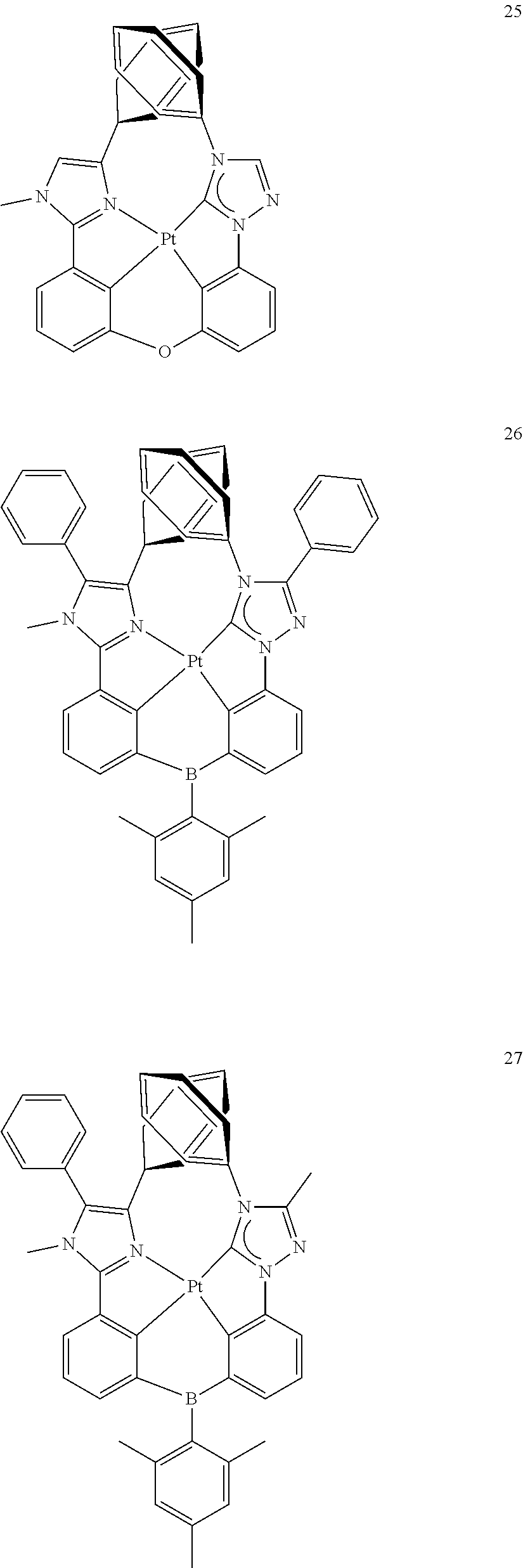





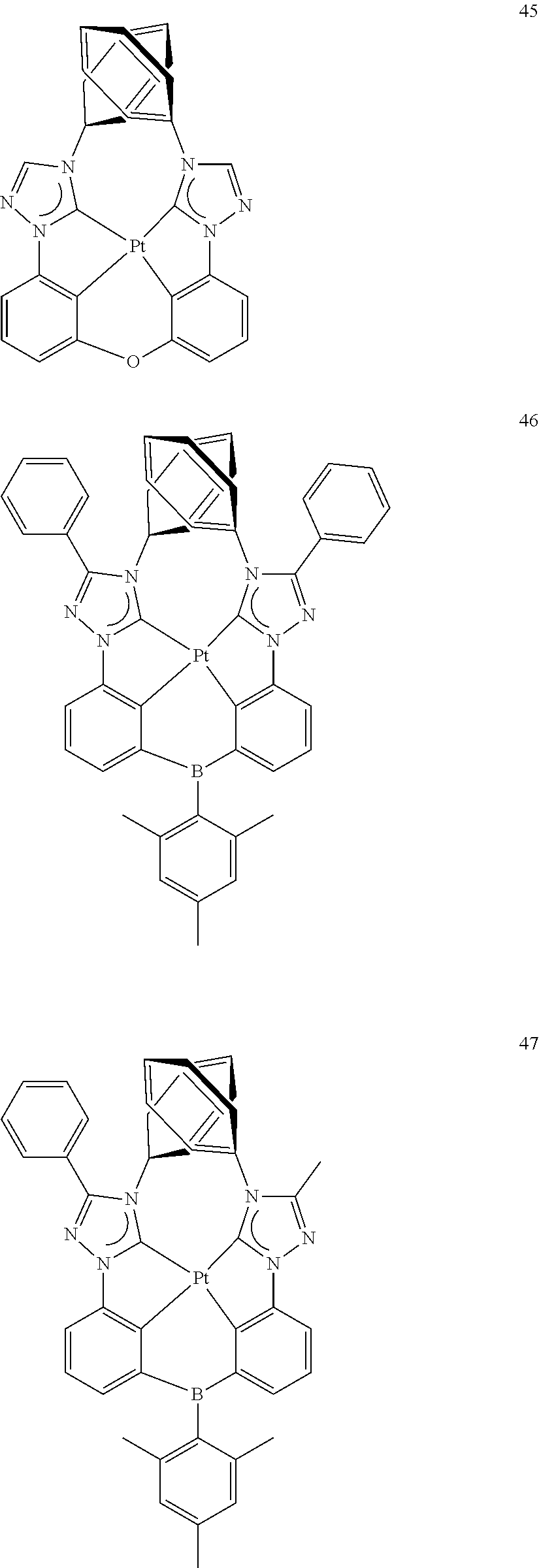

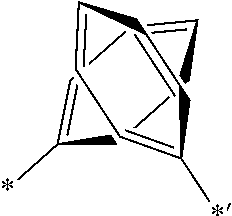


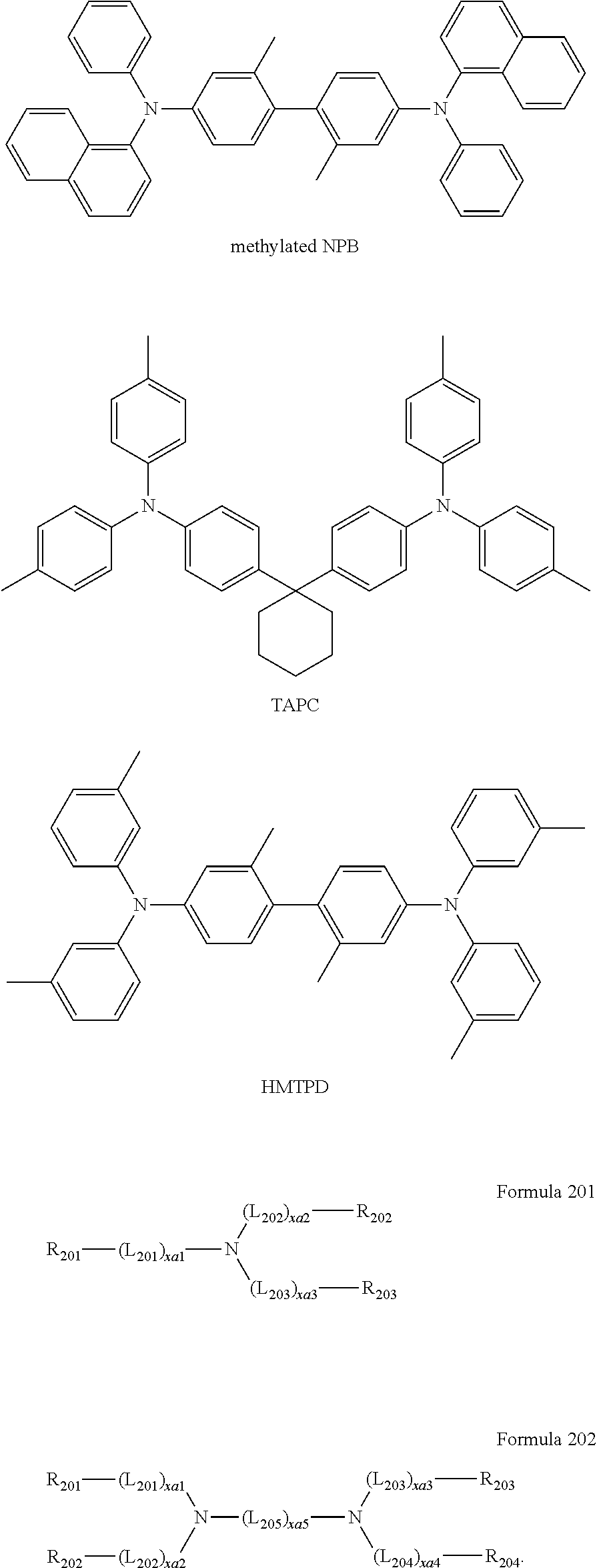


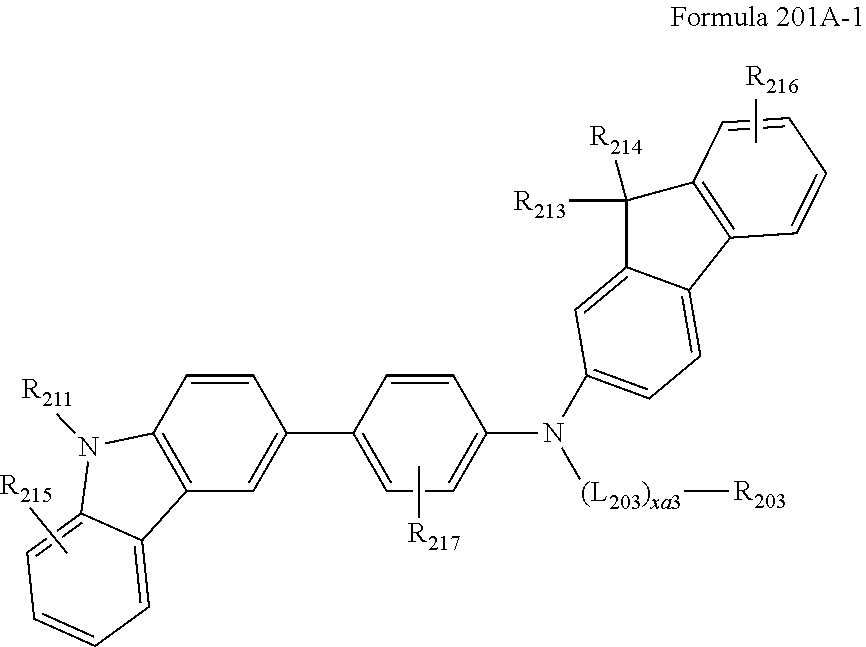
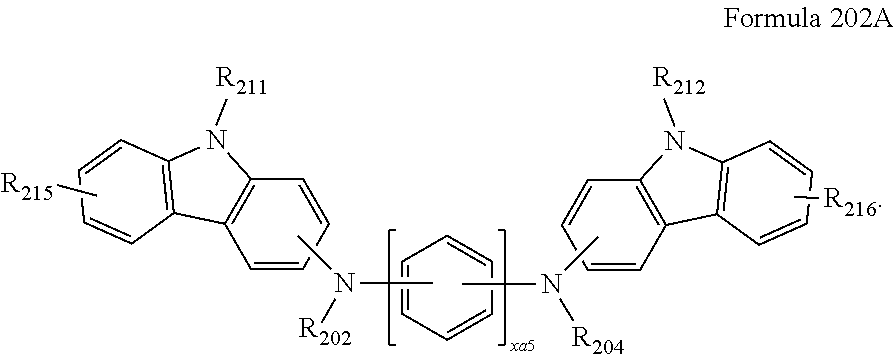
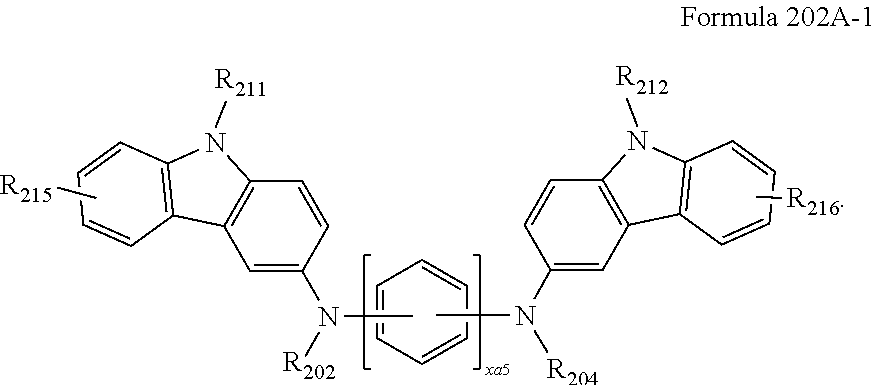
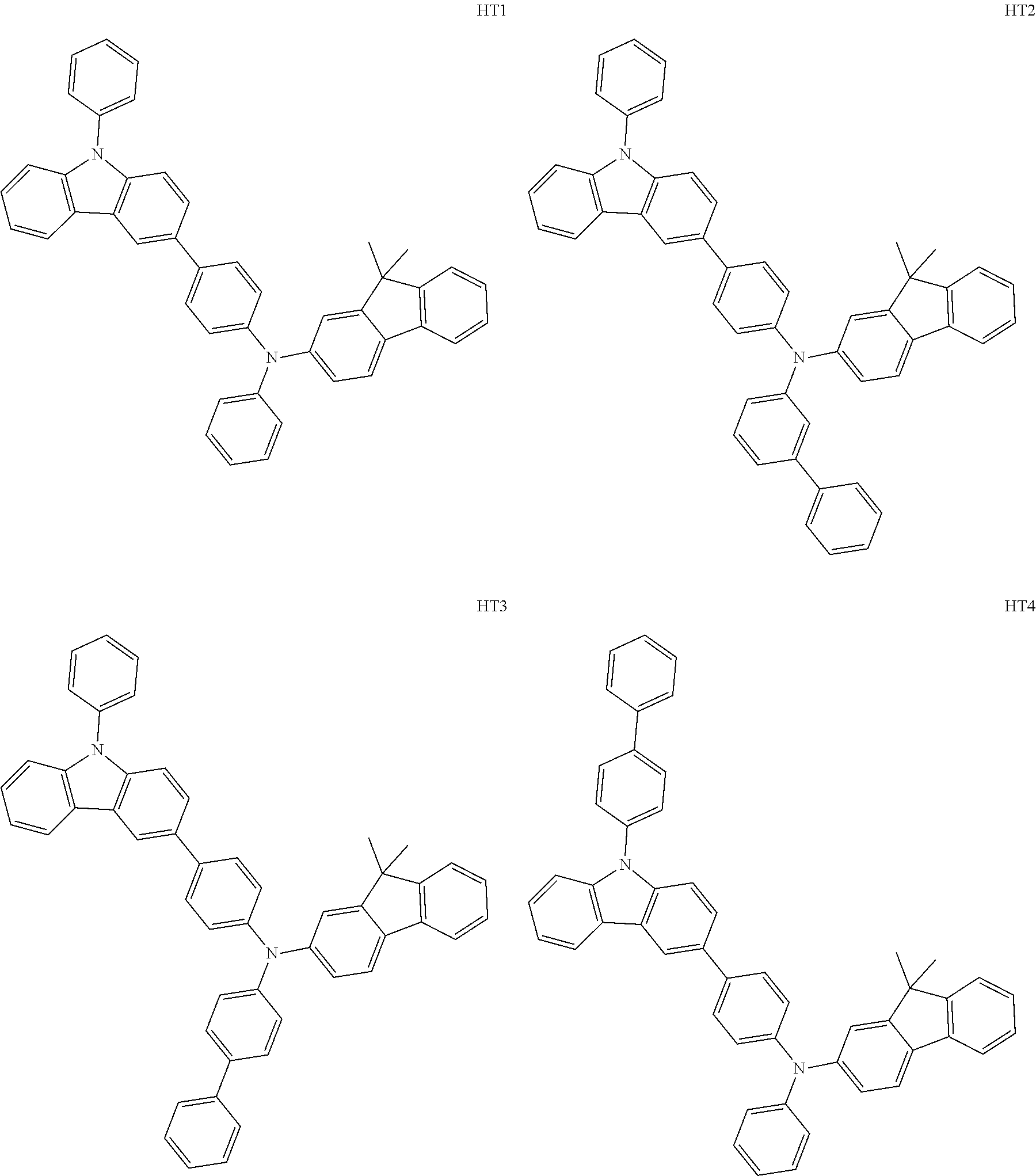


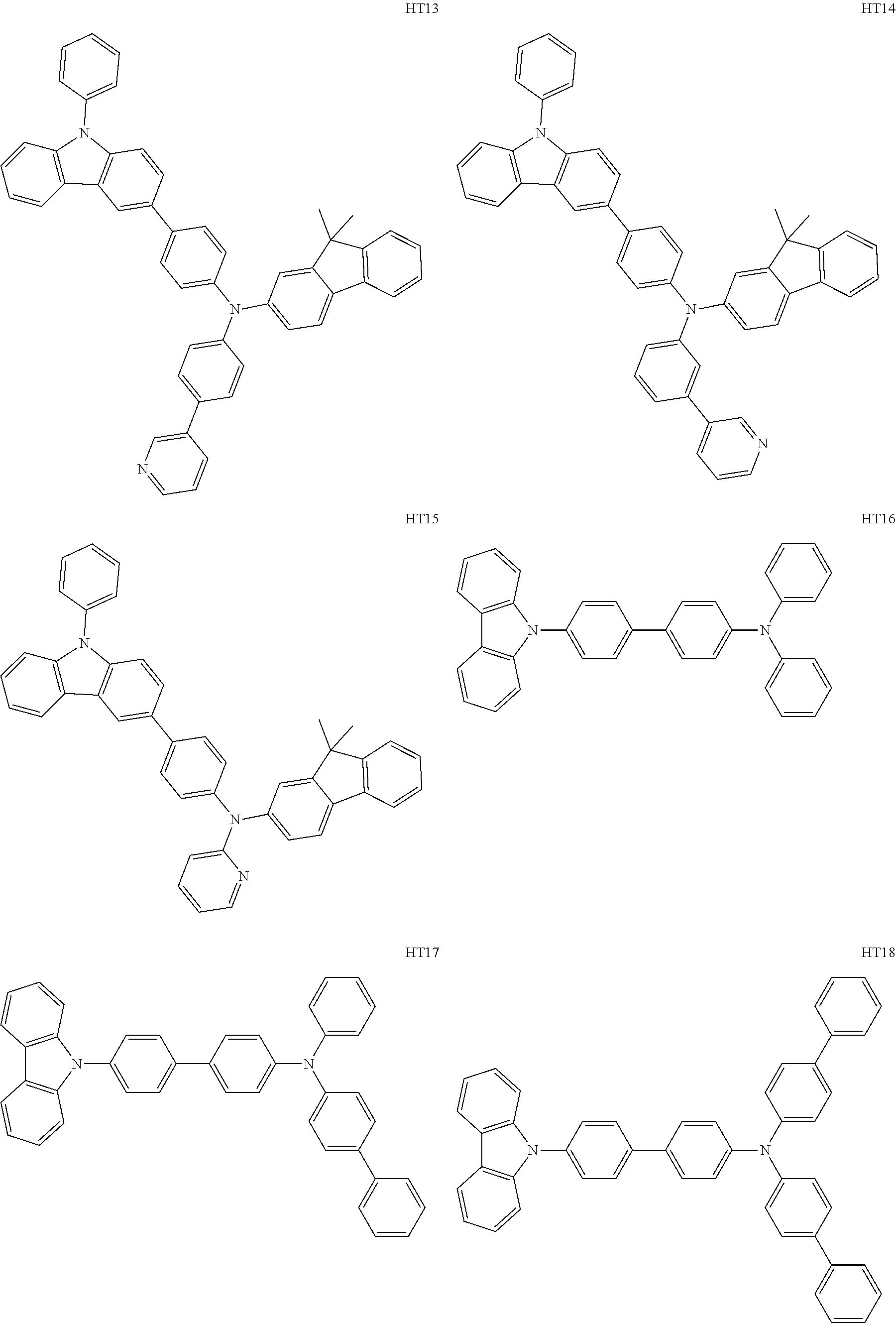


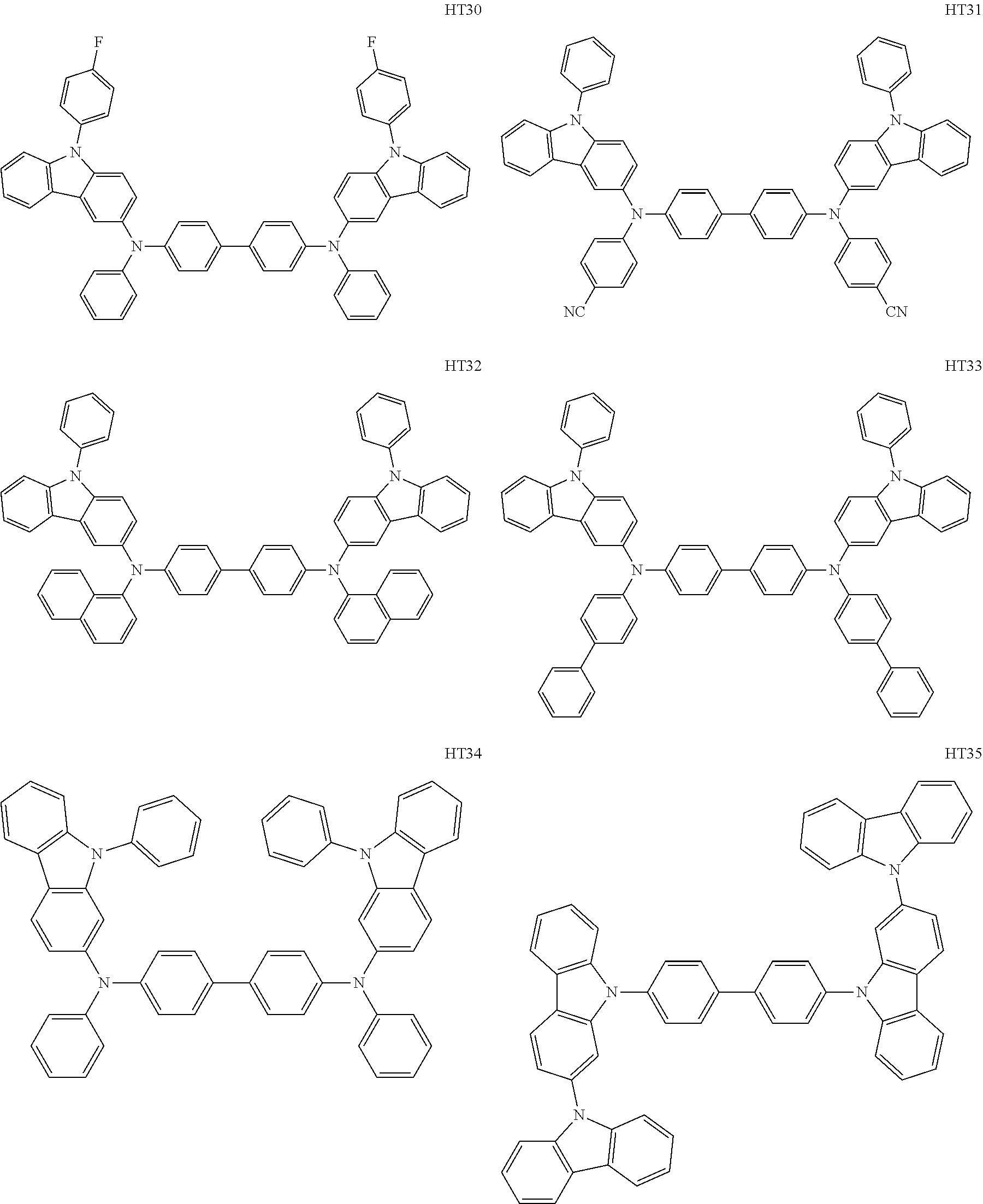

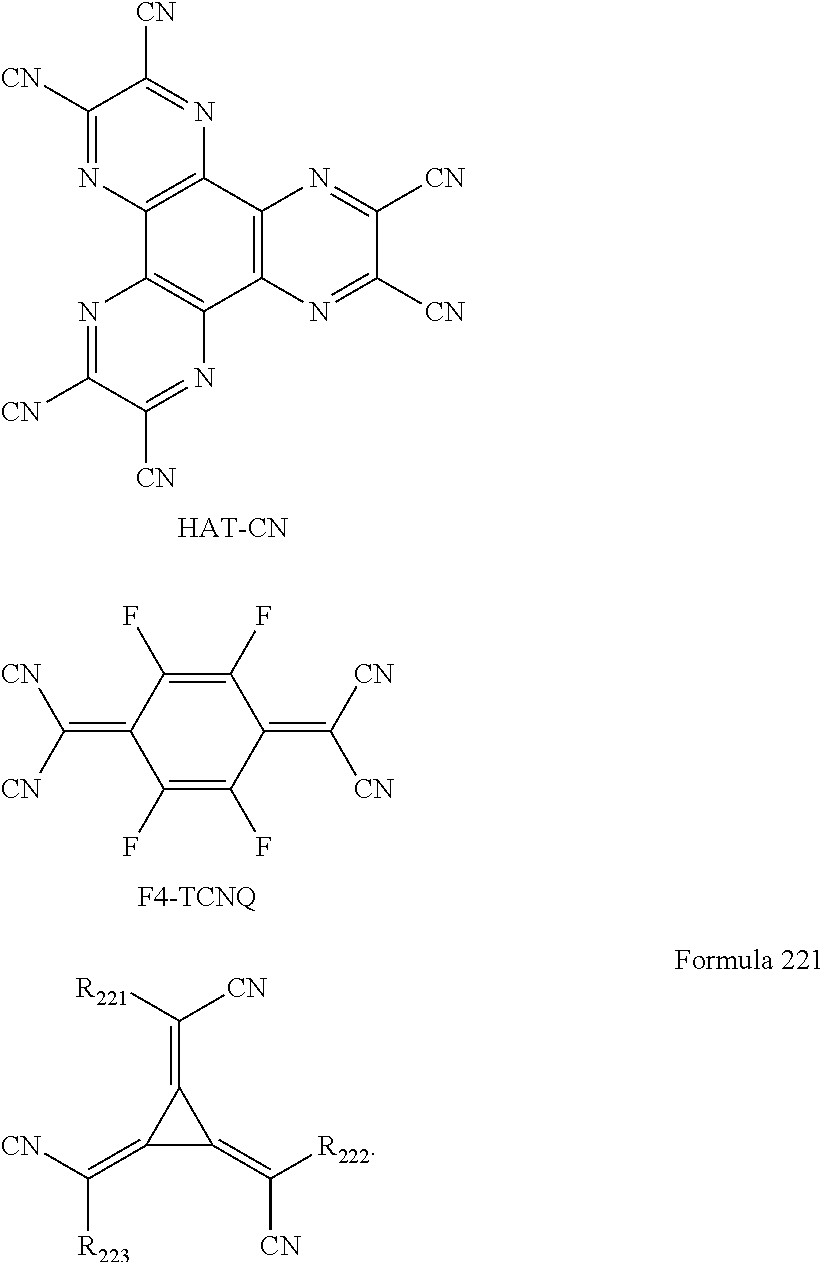


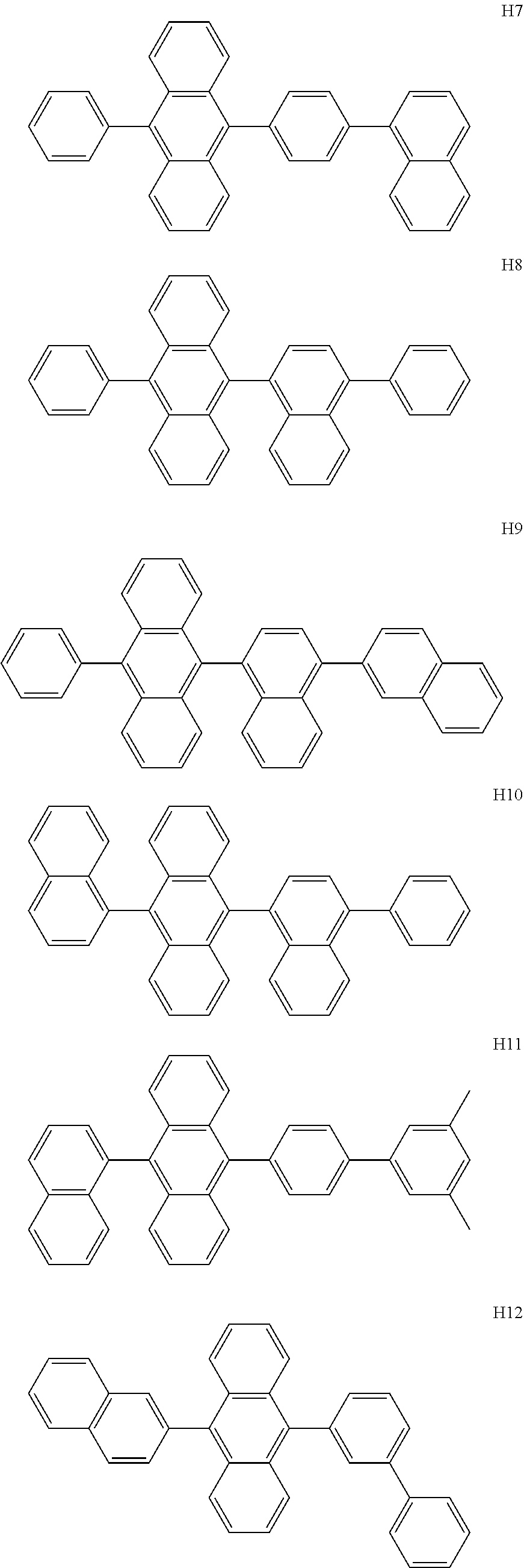




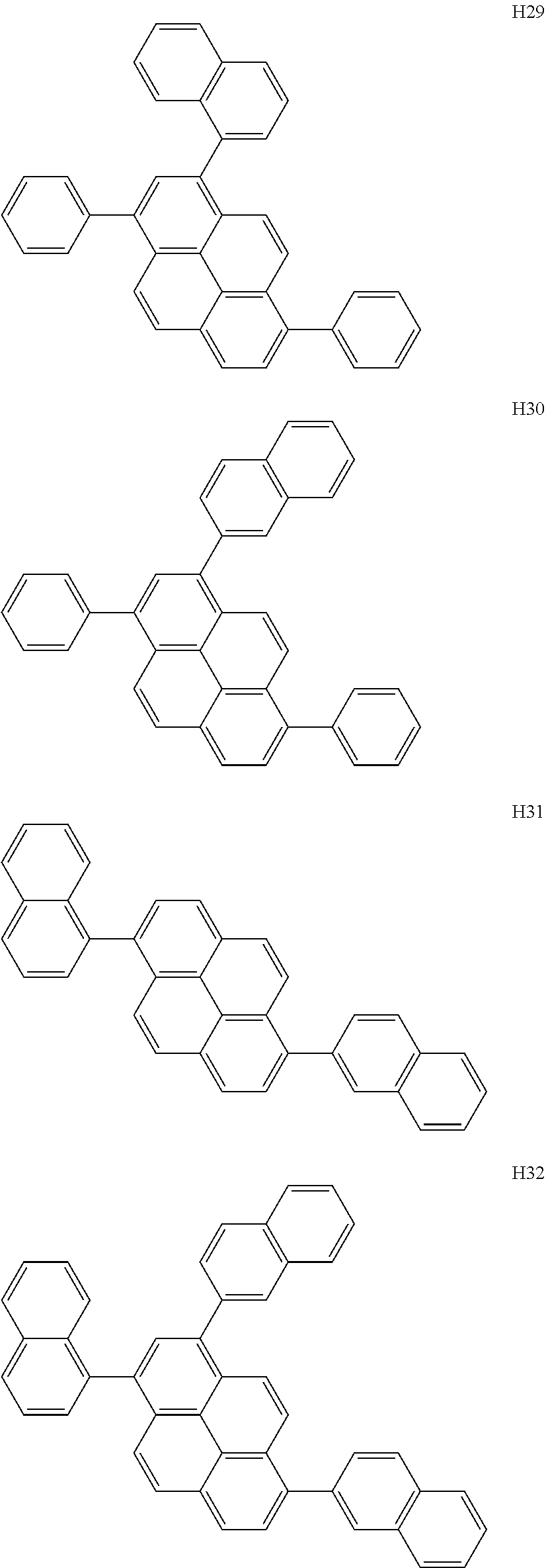

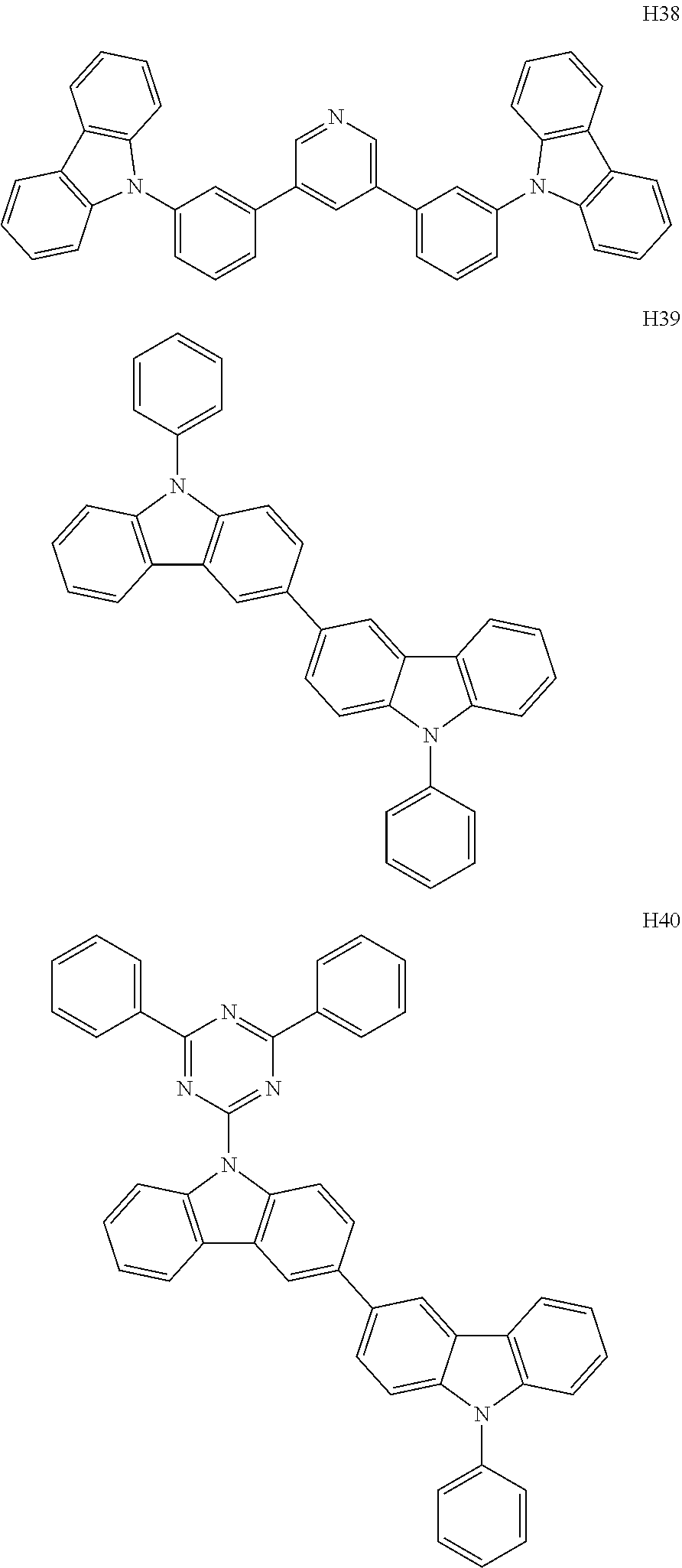
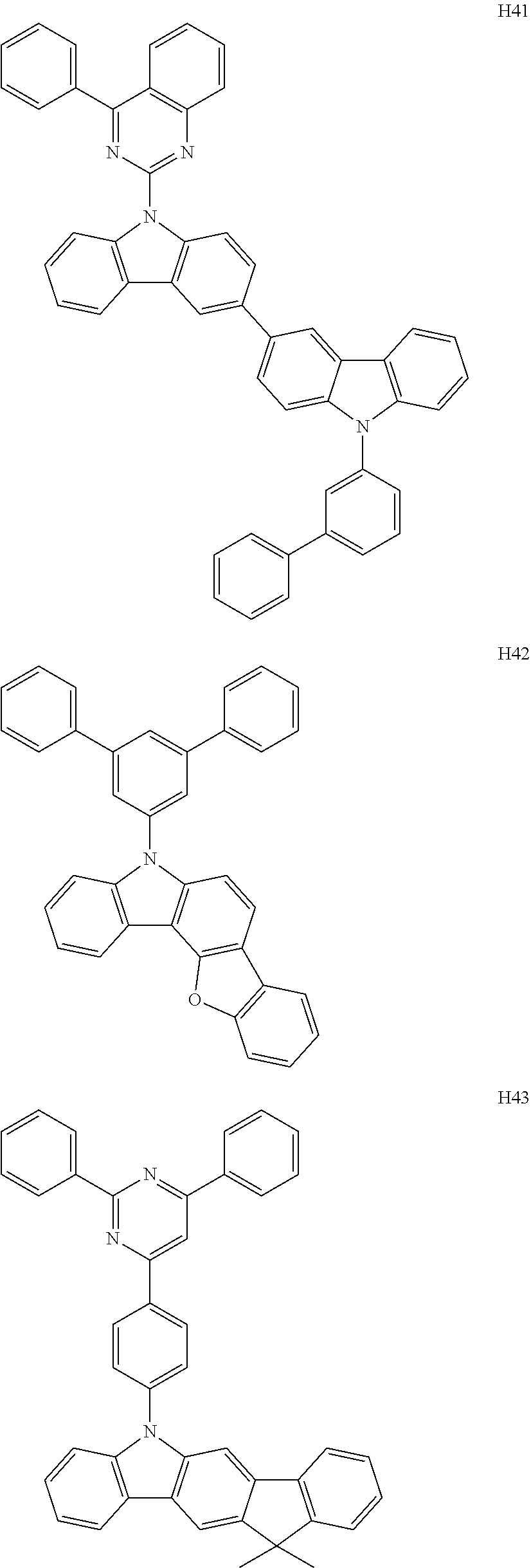



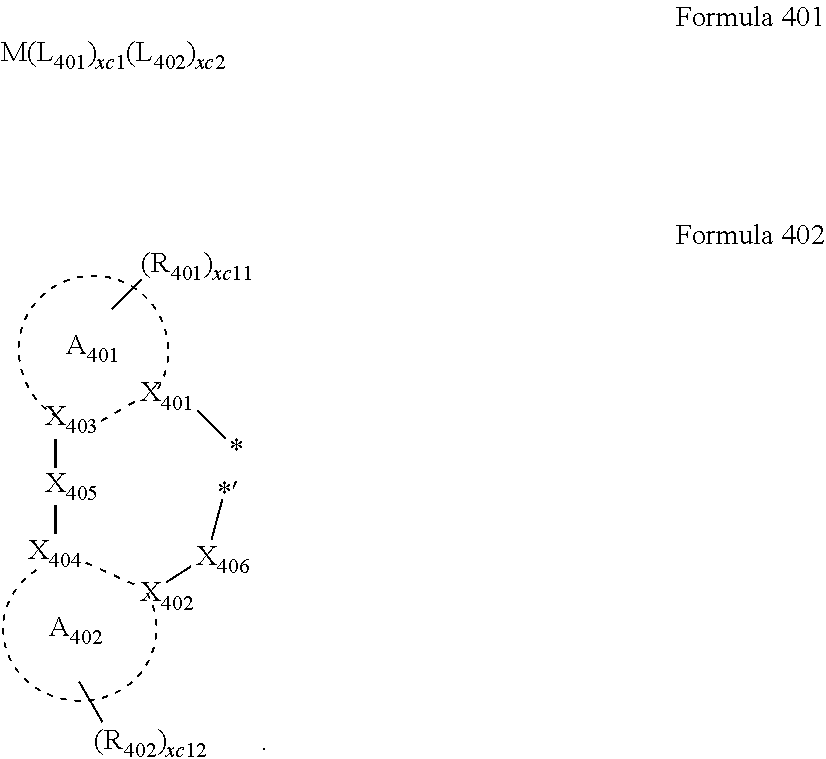


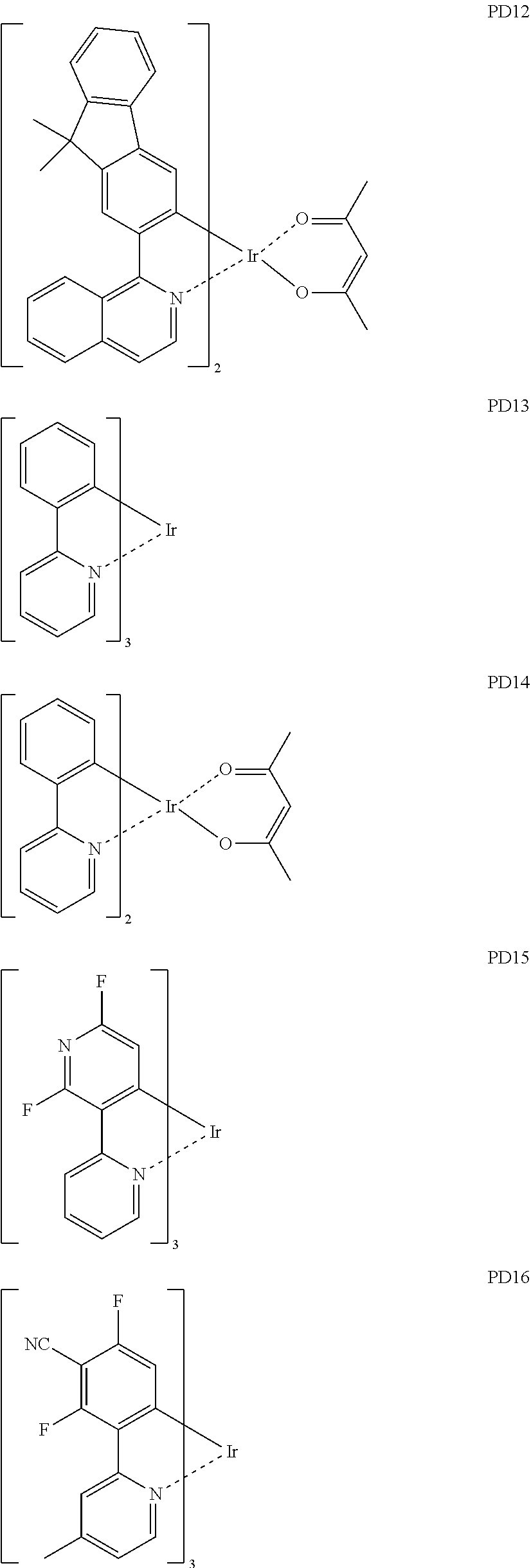

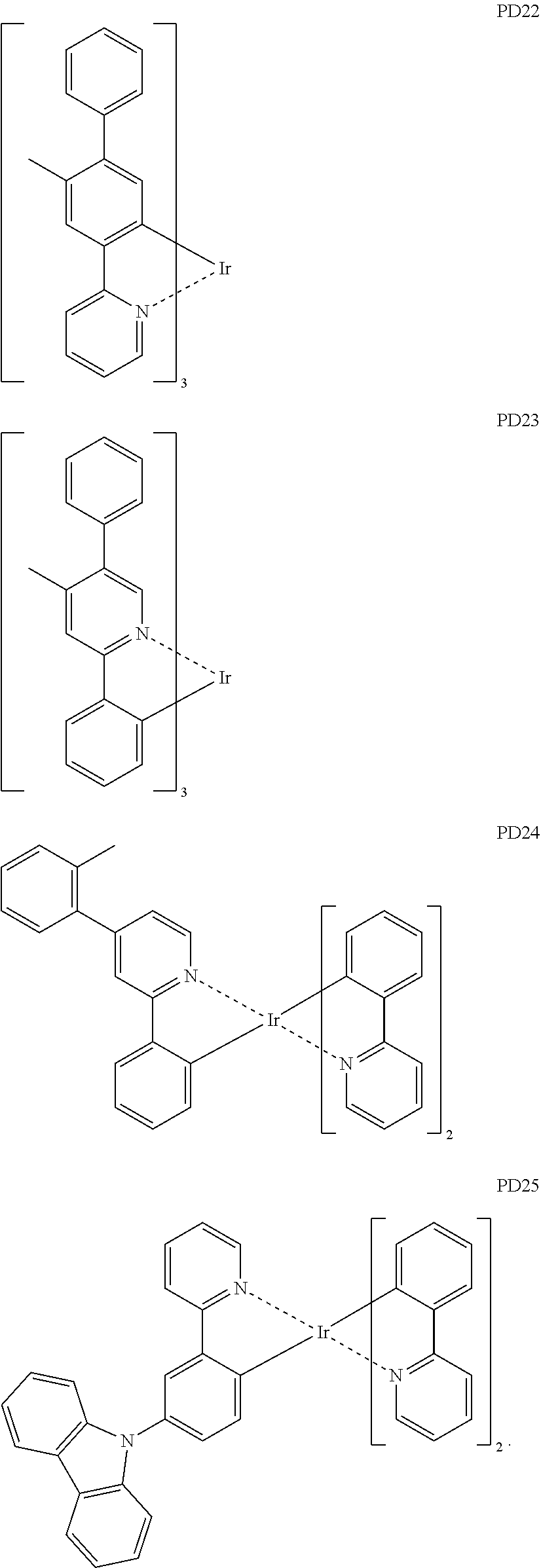






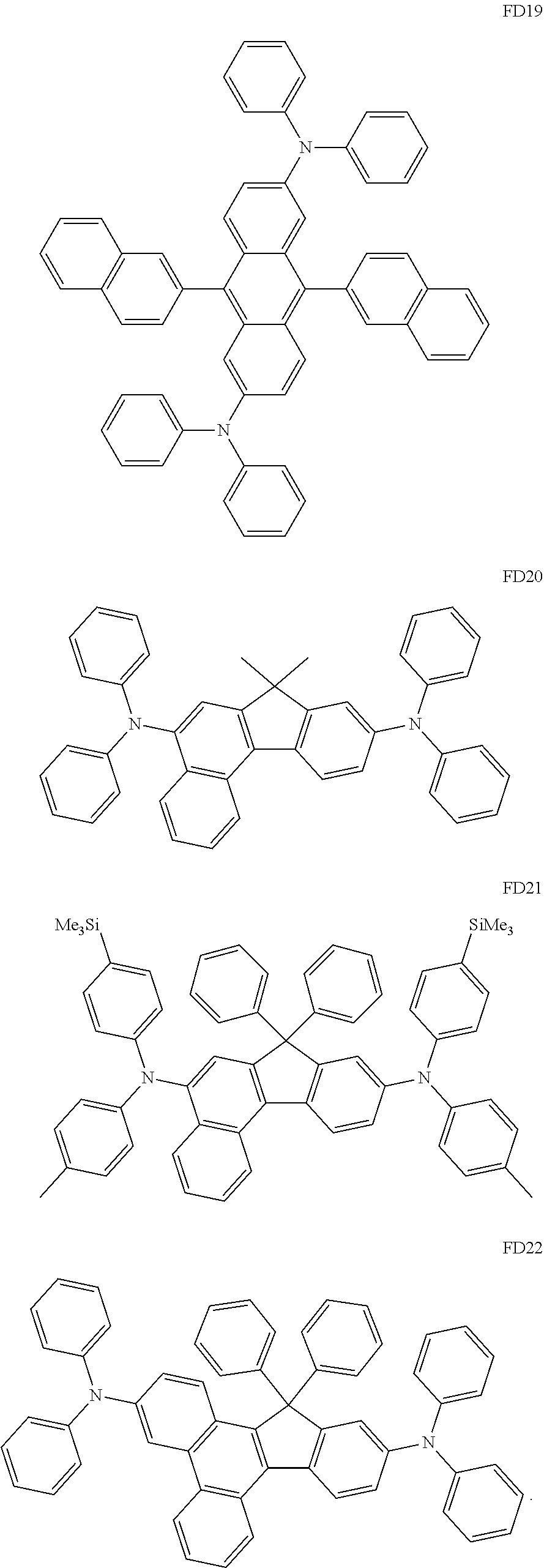






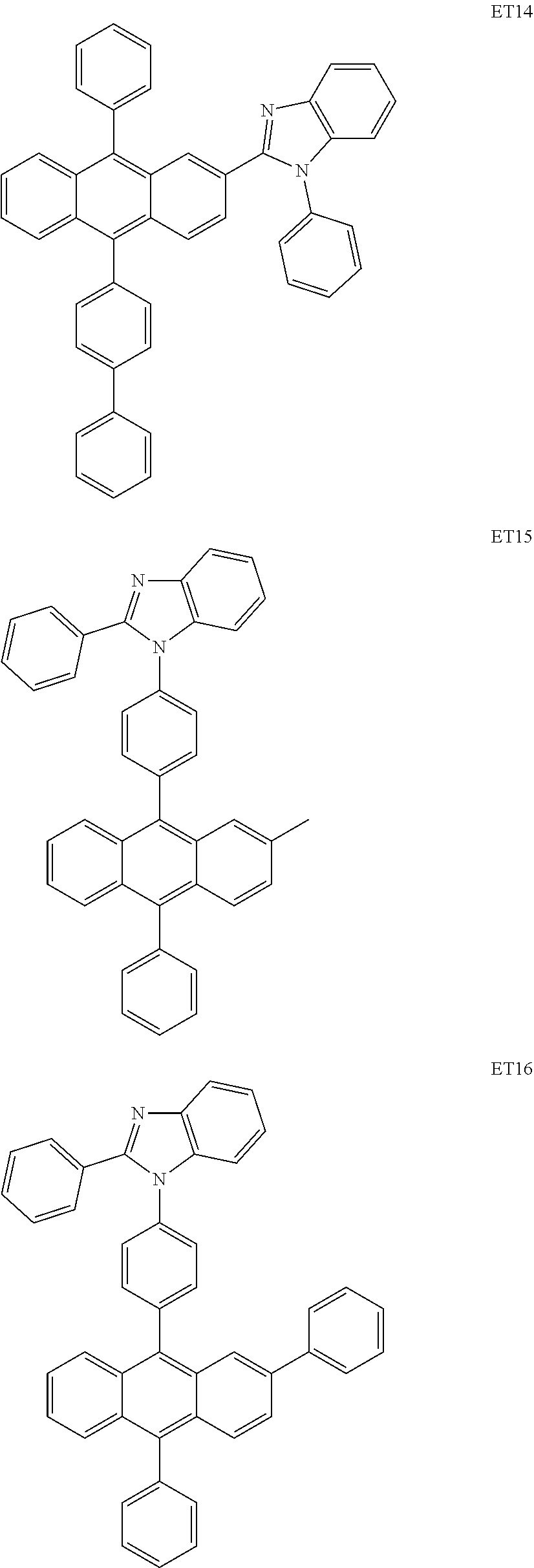

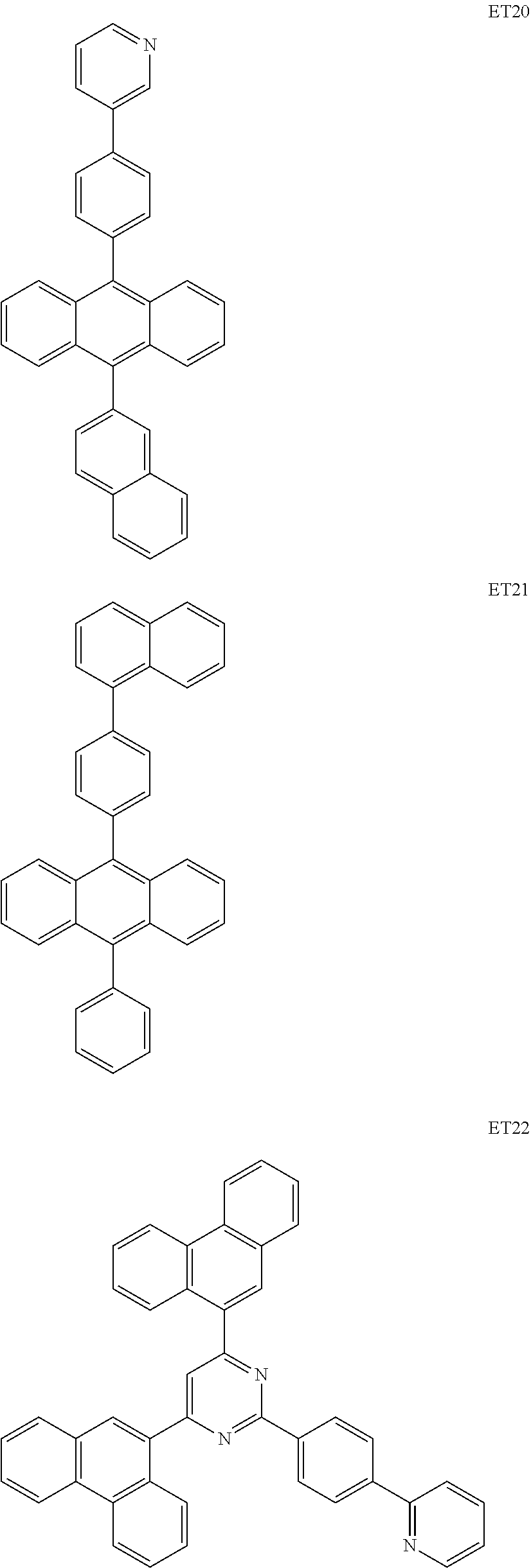

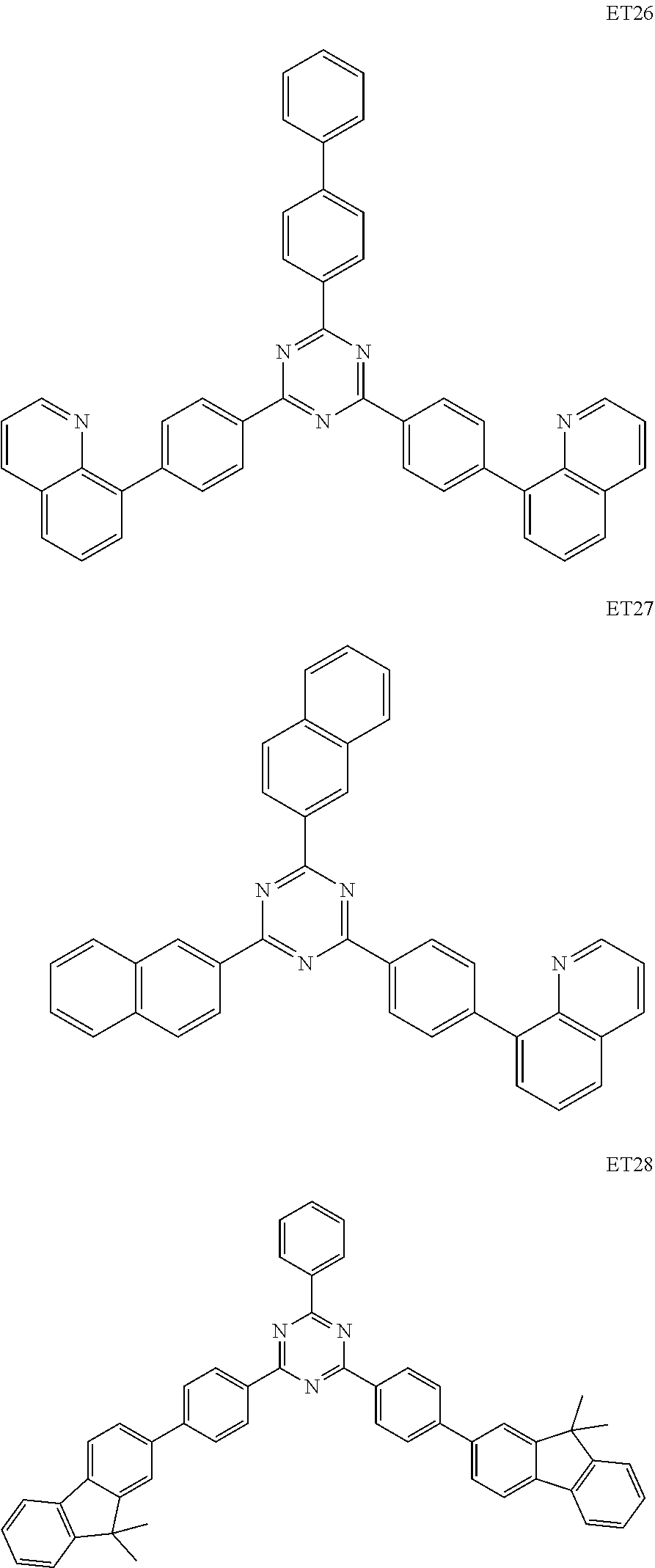


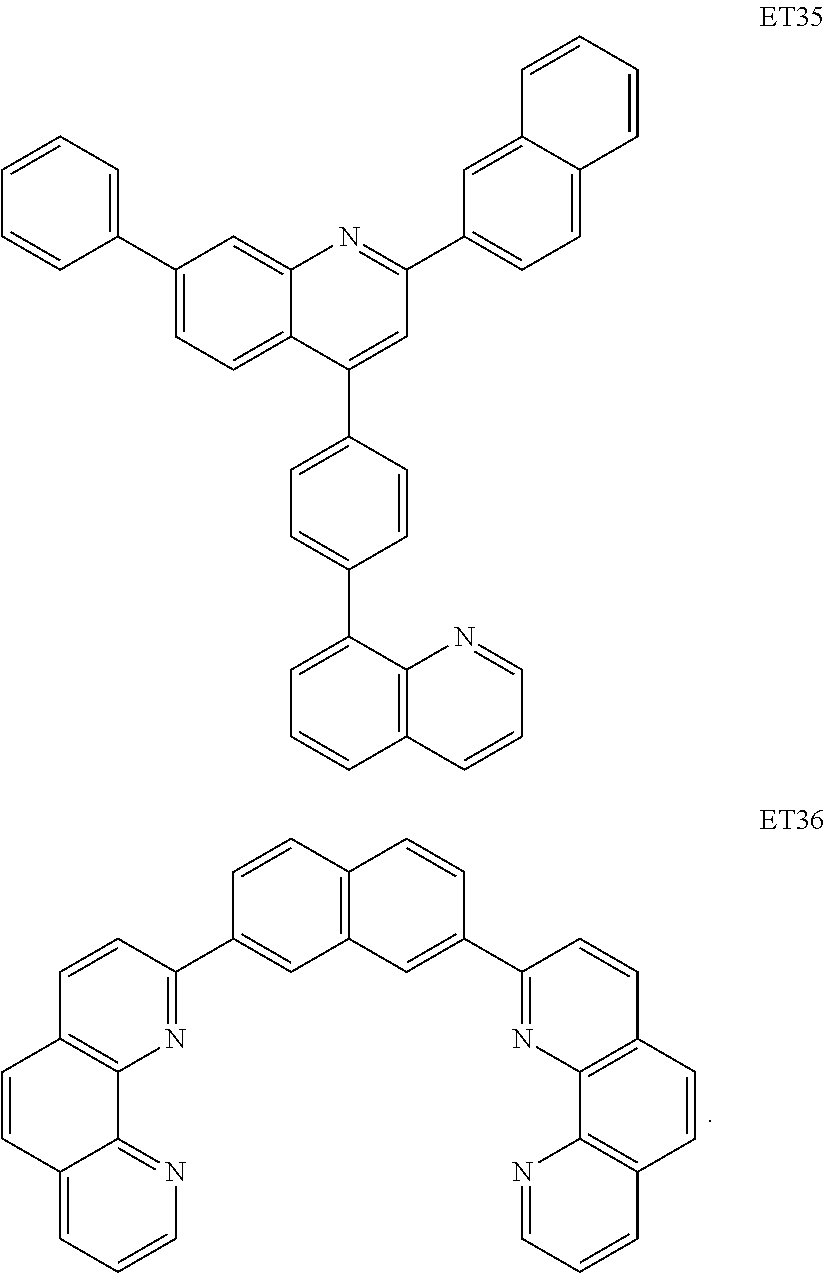
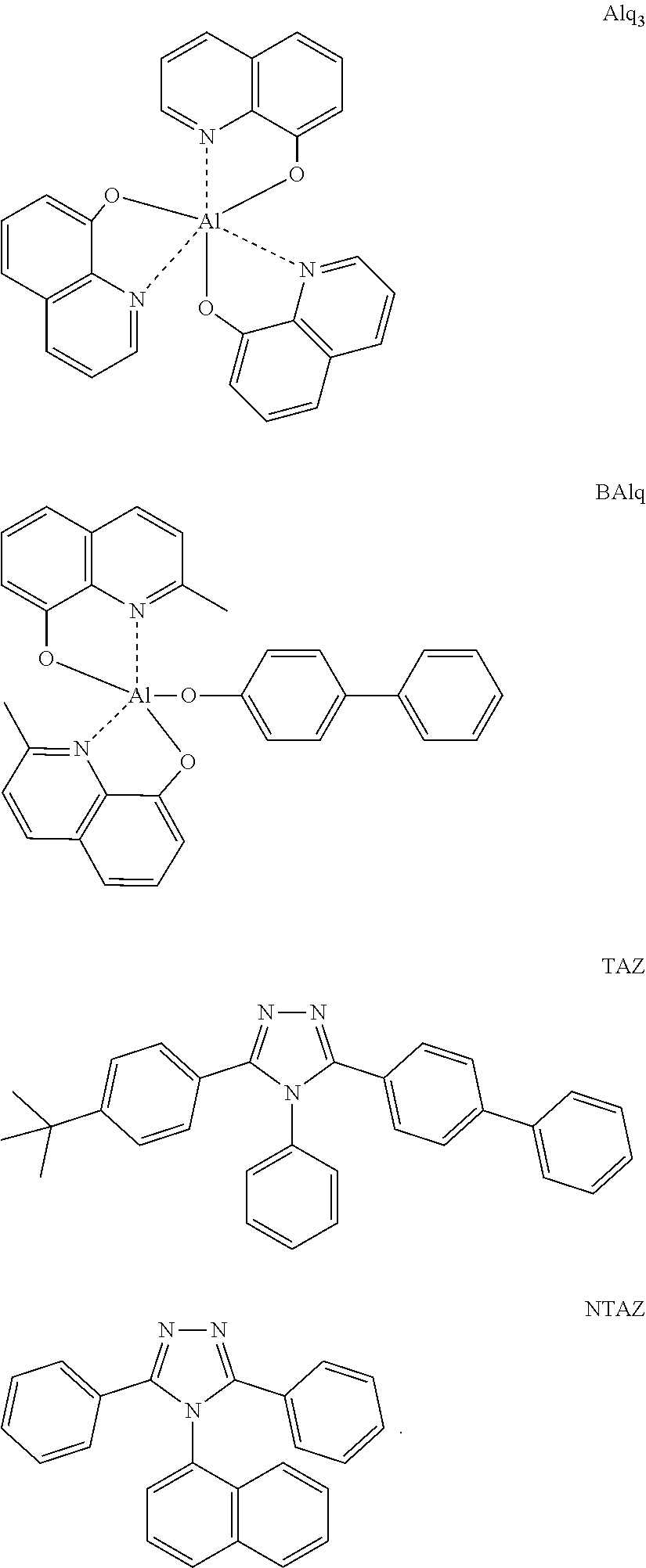
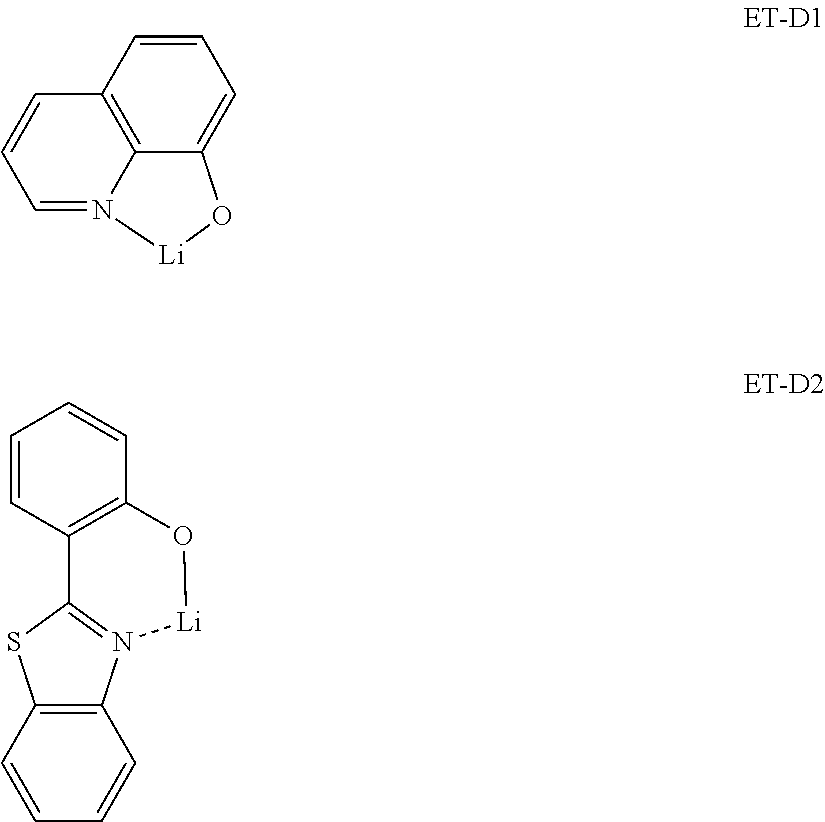




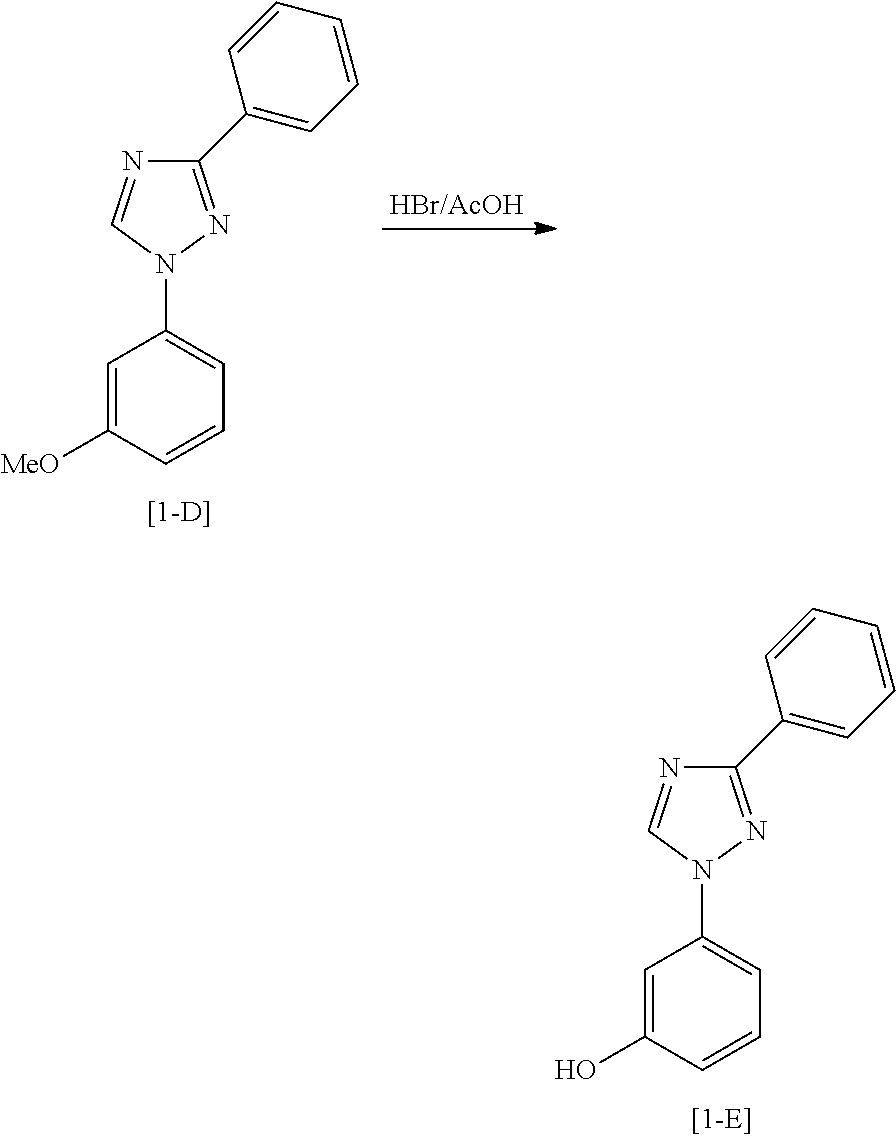







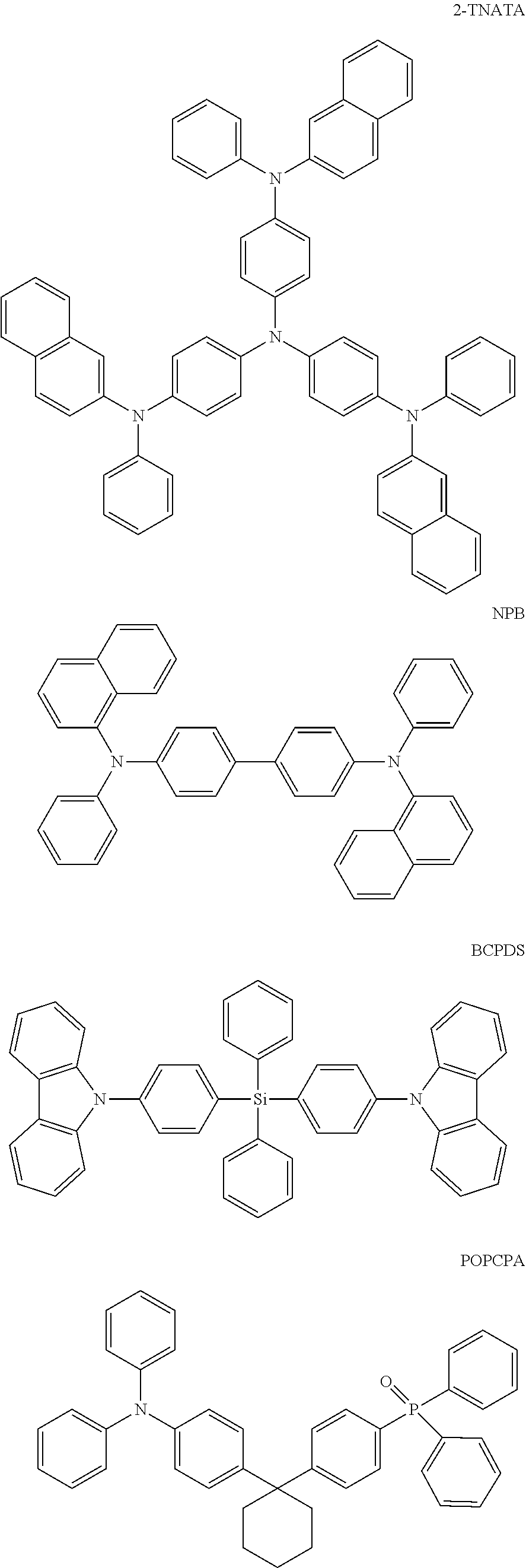
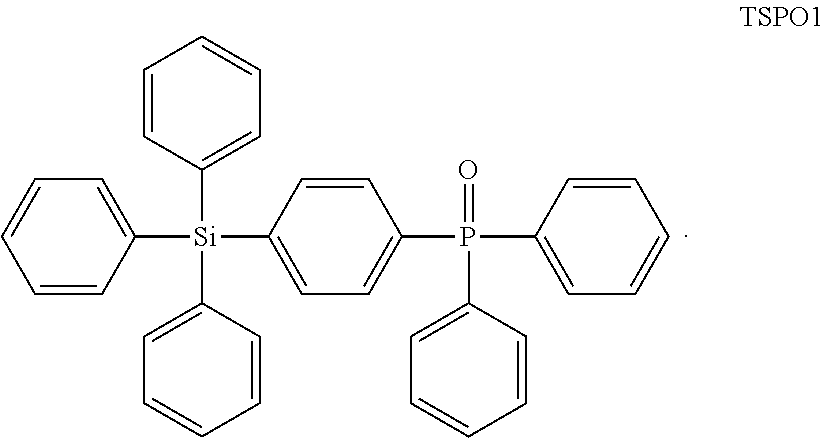









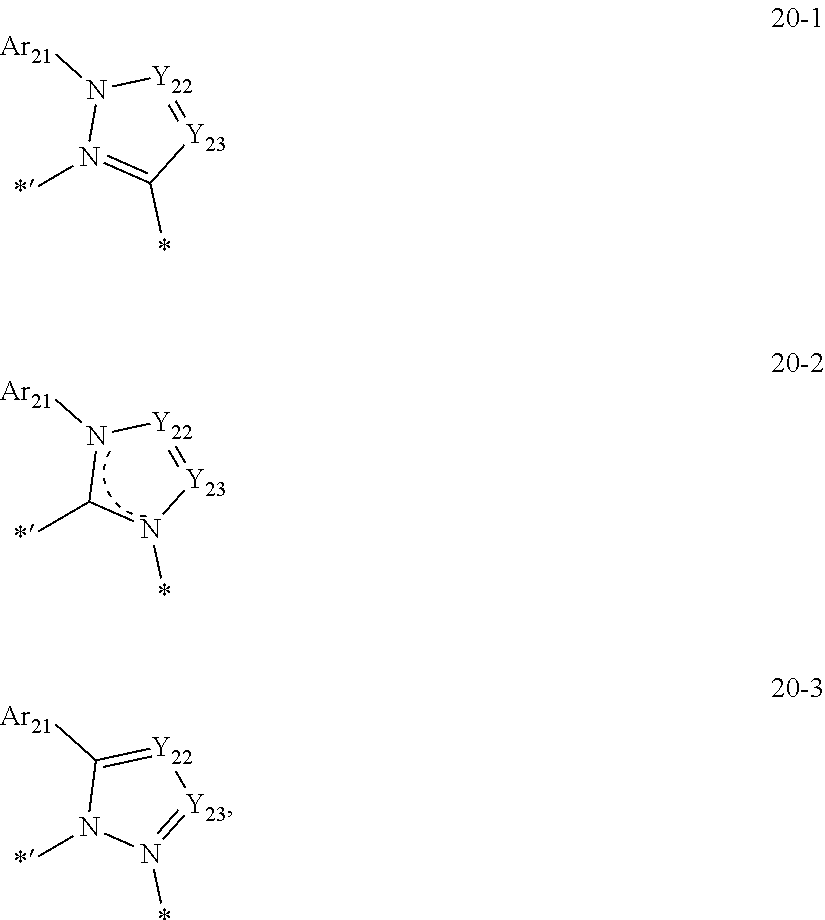

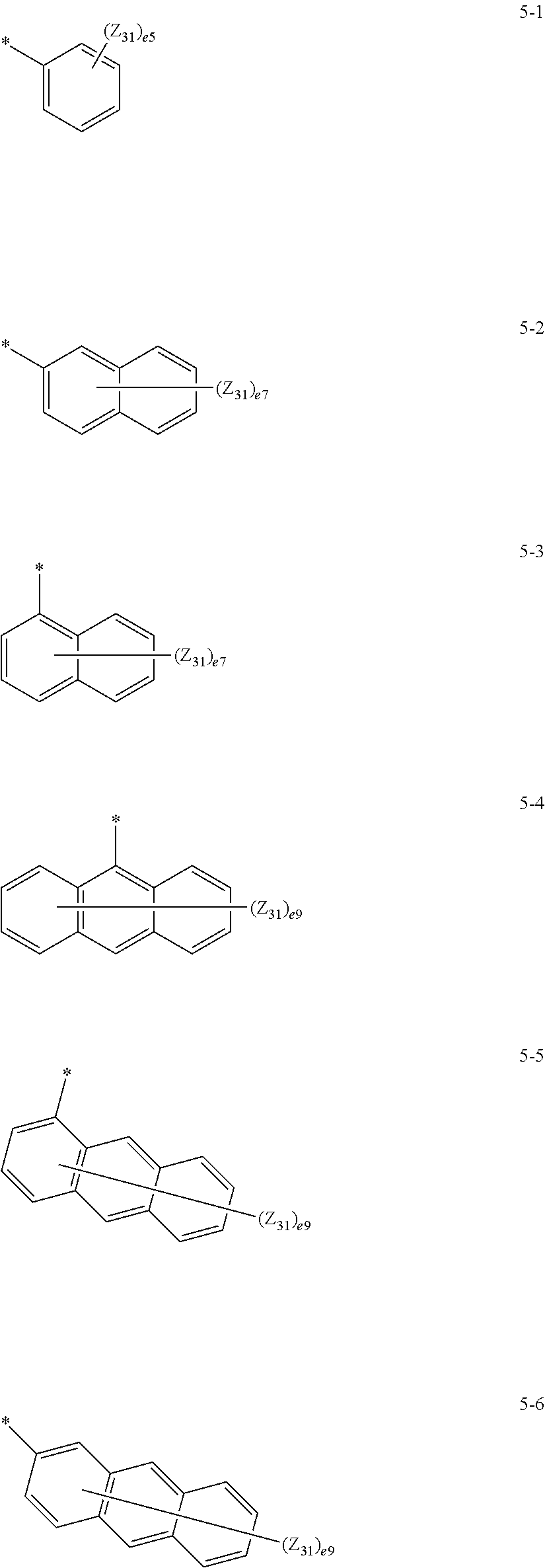


















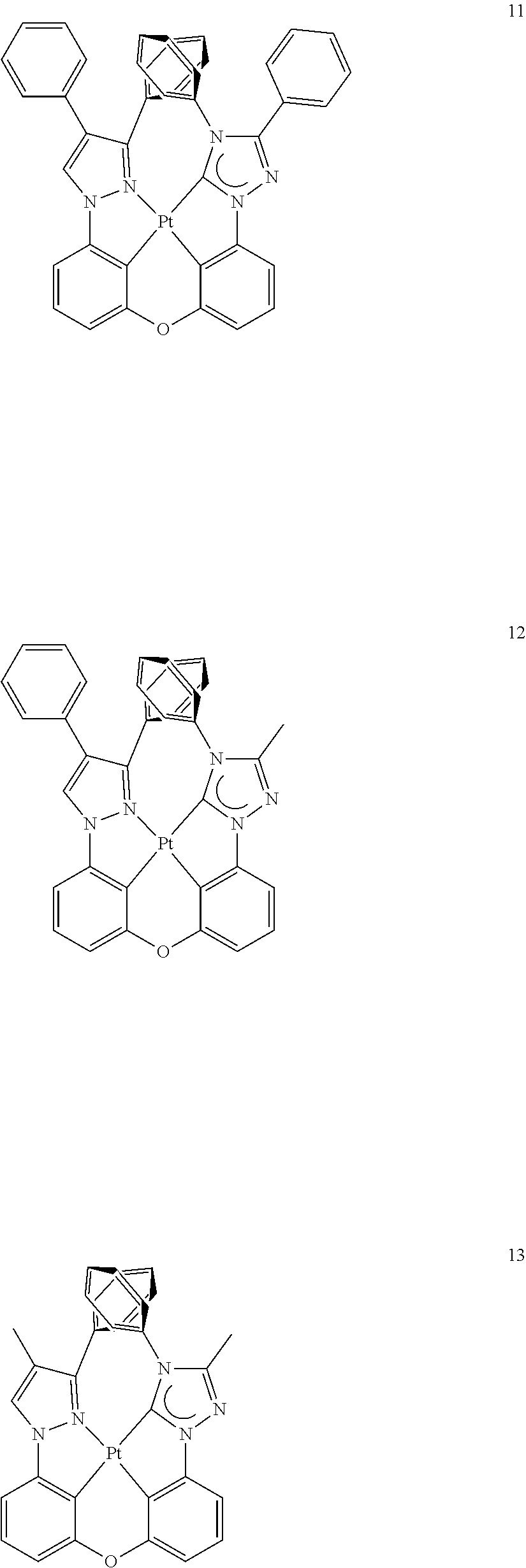












D00000

D00001

XML
uspto.report is an independent third-party trademark research tool that is not affiliated, endorsed, or sponsored by the United States Patent and Trademark Office (USPTO) or any other governmental organization. The information provided by uspto.report is based on publicly available data at the time of writing and is intended for informational purposes only.
While we strive to provide accurate and up-to-date information, we do not guarantee the accuracy, completeness, reliability, or suitability of the information displayed on this site. The use of this site is at your own risk. Any reliance you place on such information is therefore strictly at your own risk.
All official trademark data, including owner information, should be verified by visiting the official USPTO website at www.uspto.gov. This site is not intended to replace professional legal advice and should not be used as a substitute for consulting with a legal professional who is knowledgeable about trademark law.